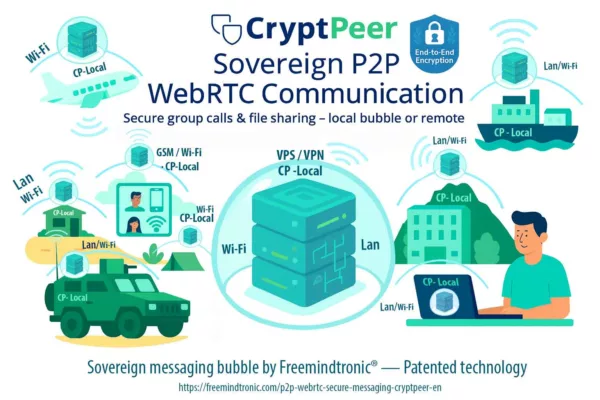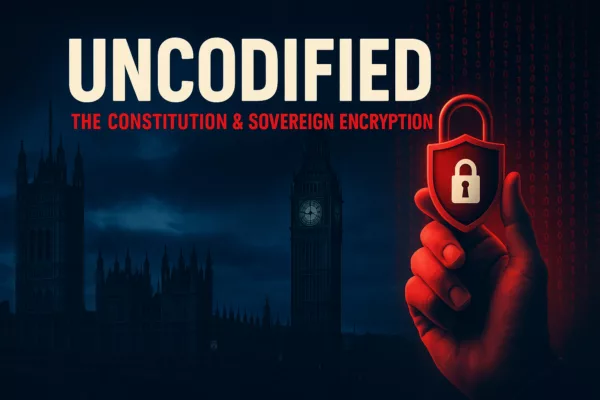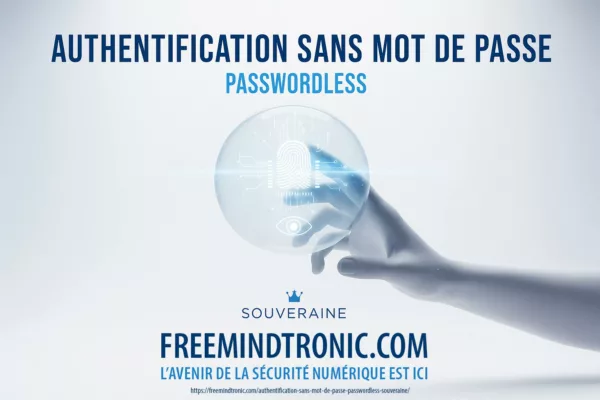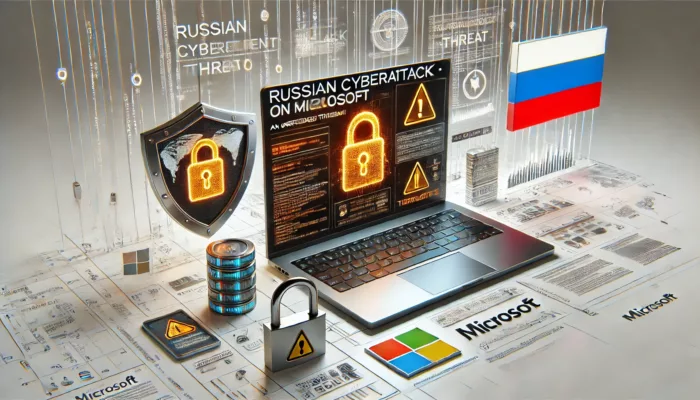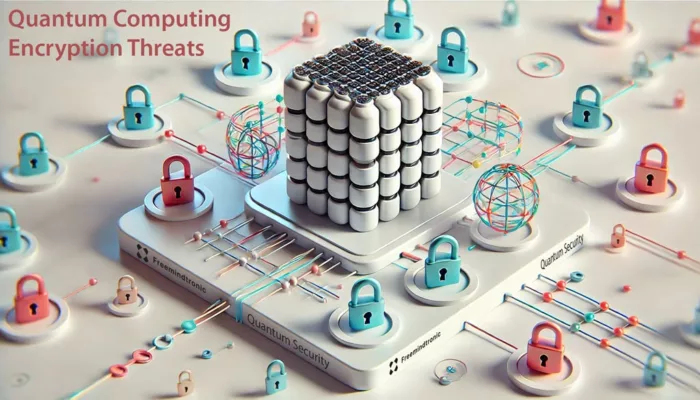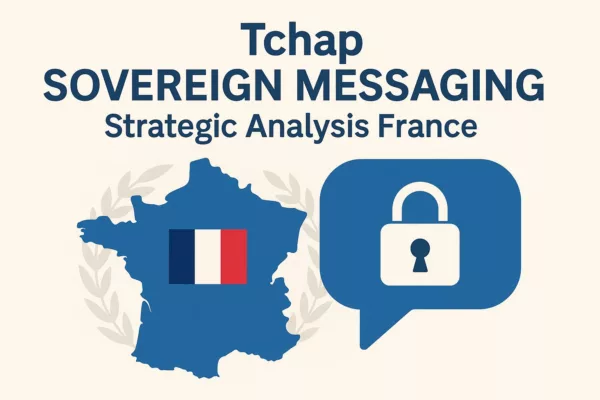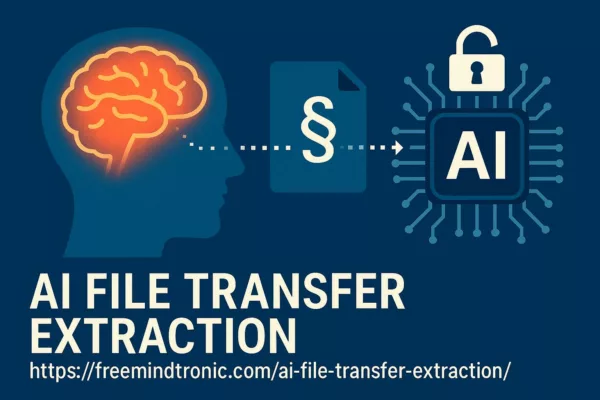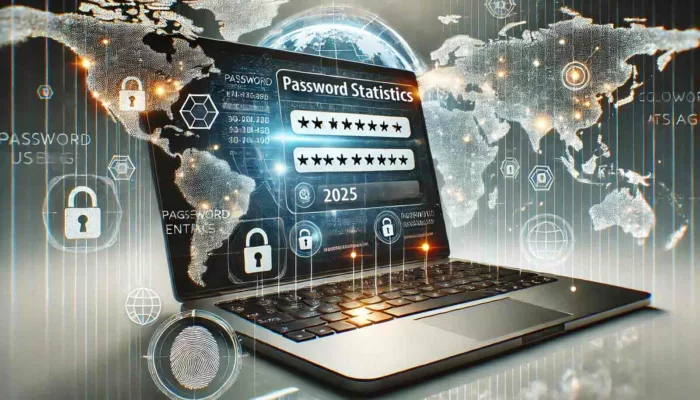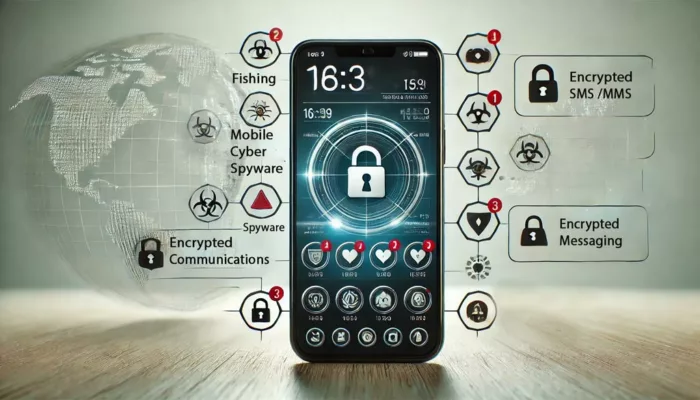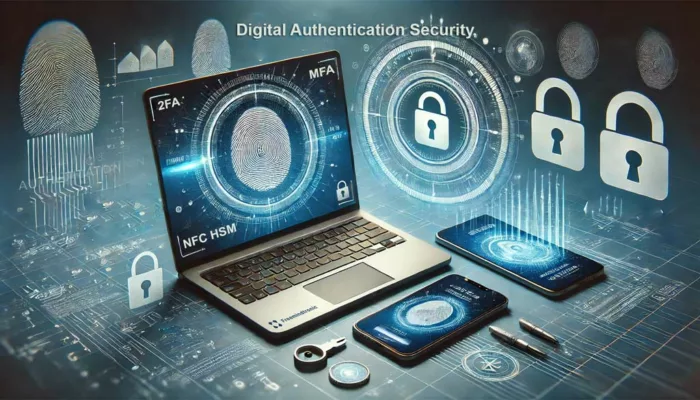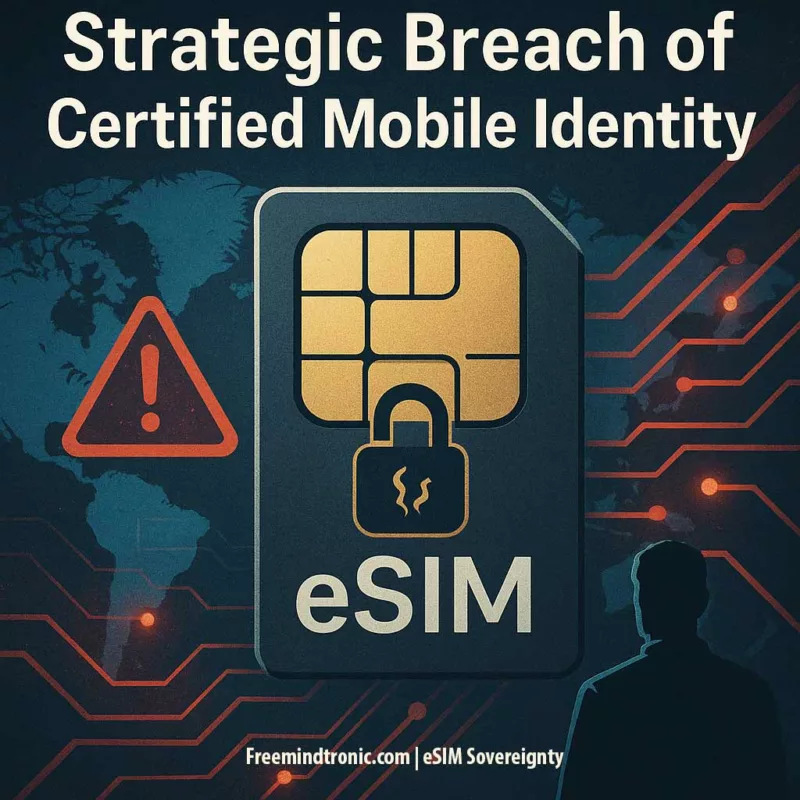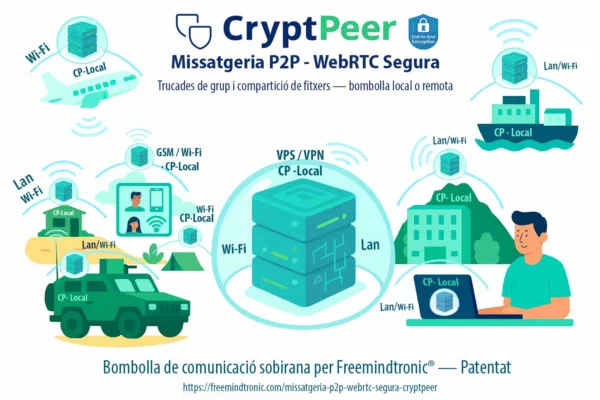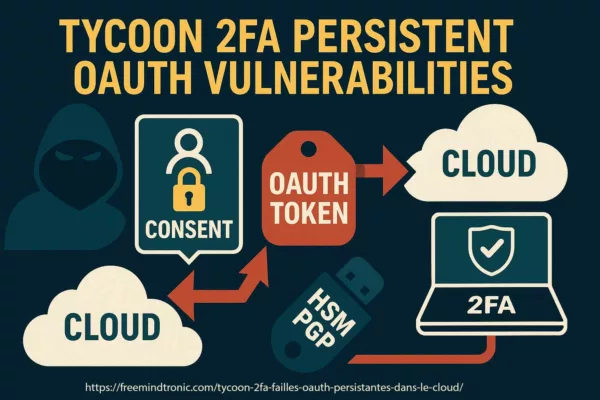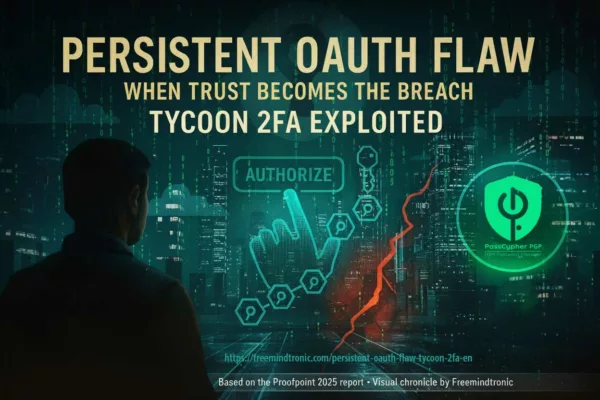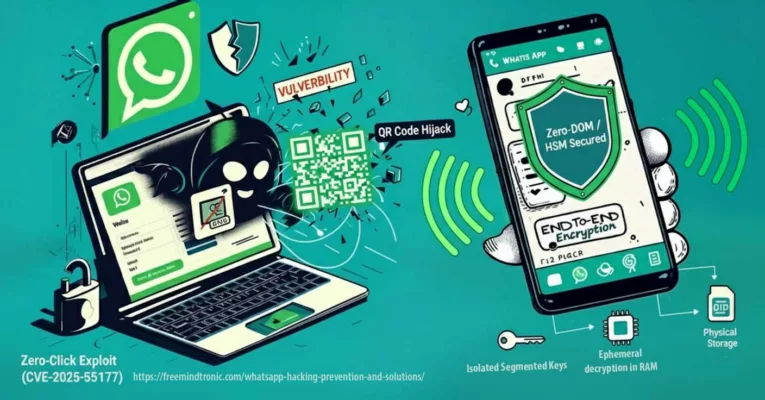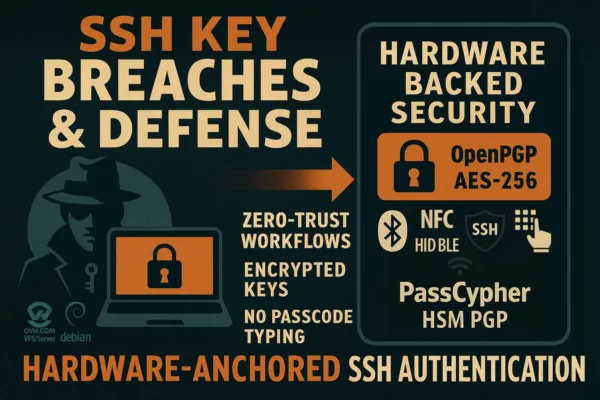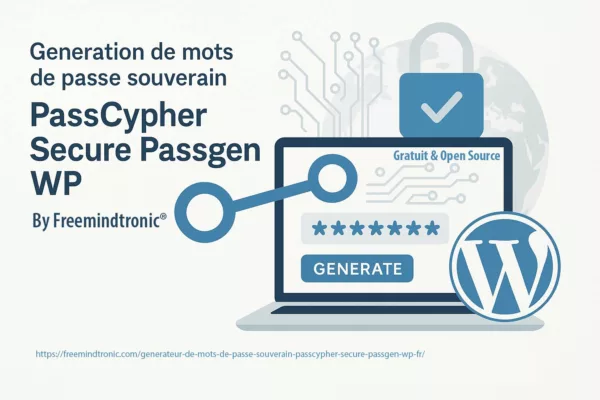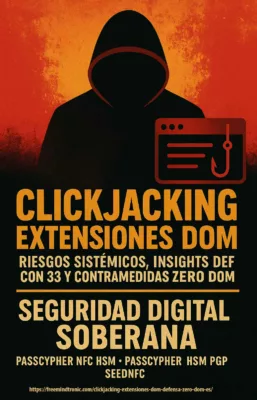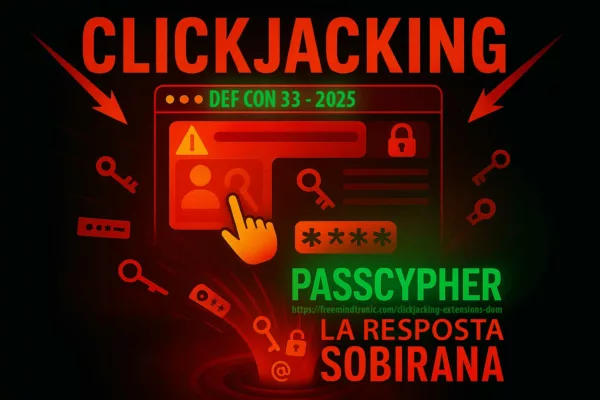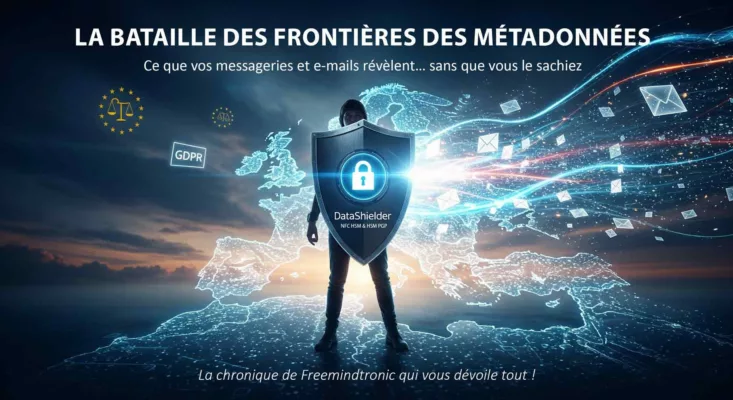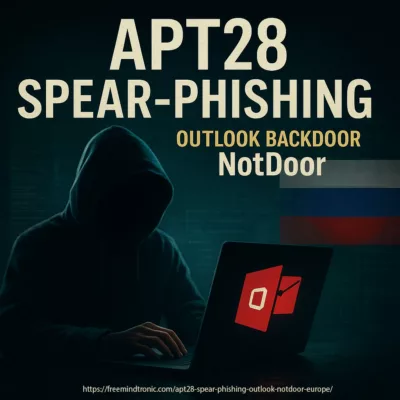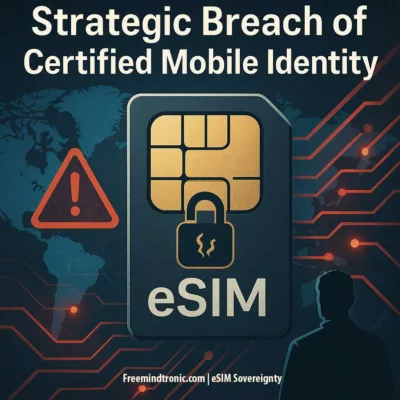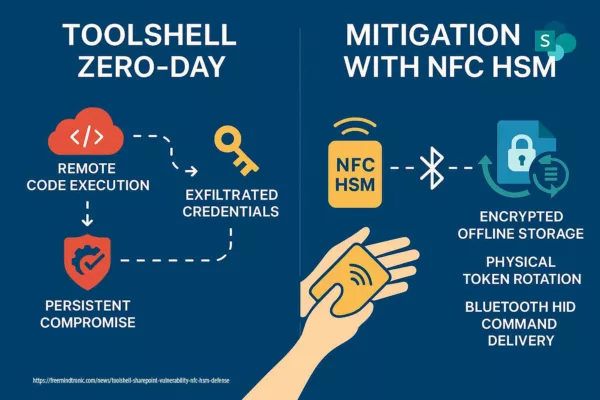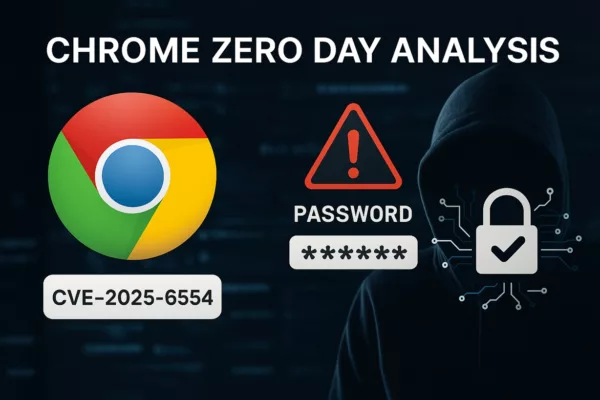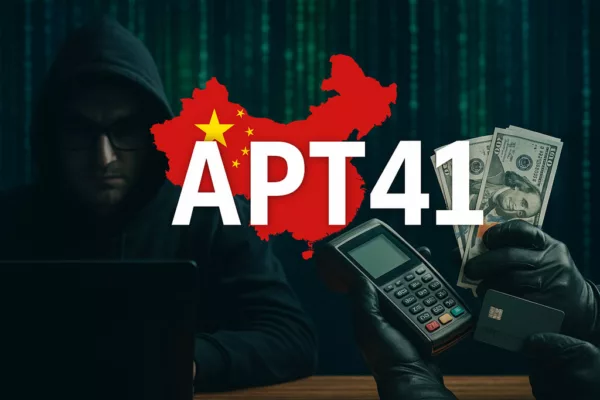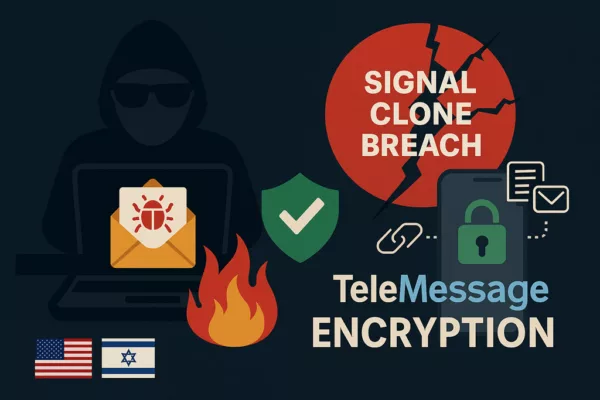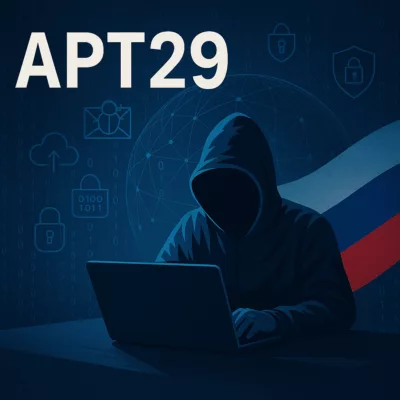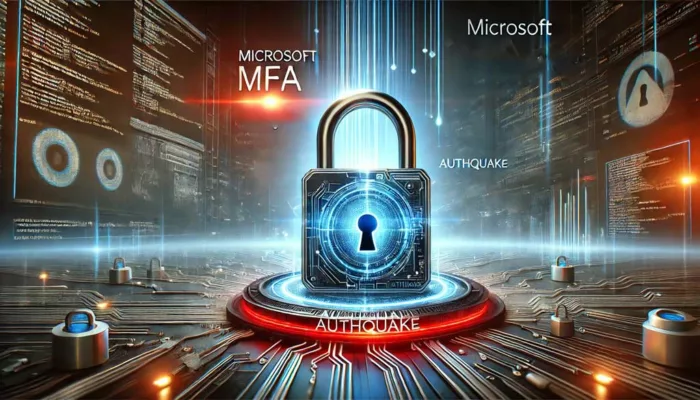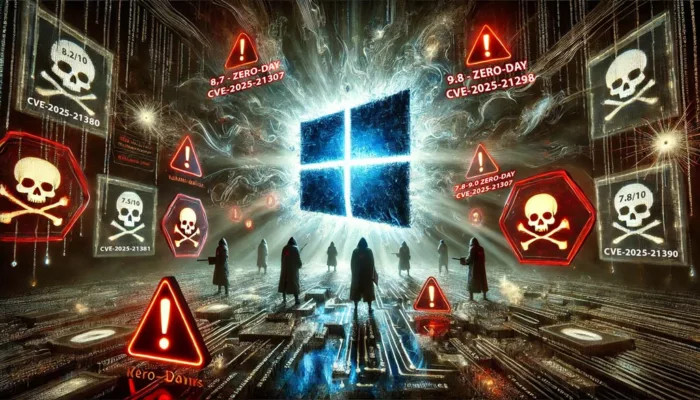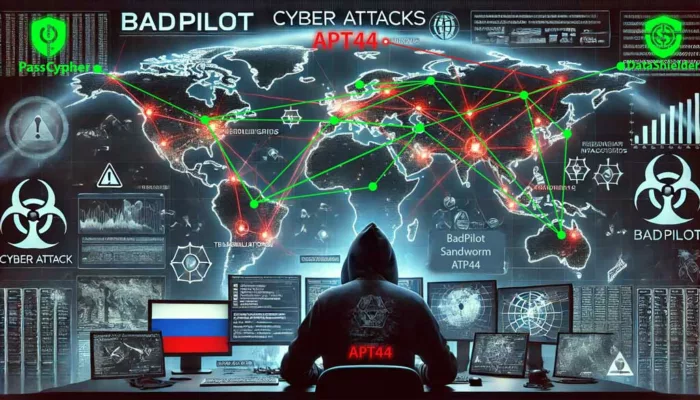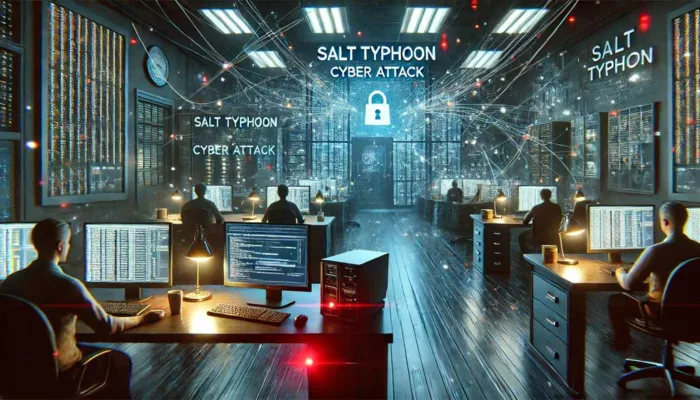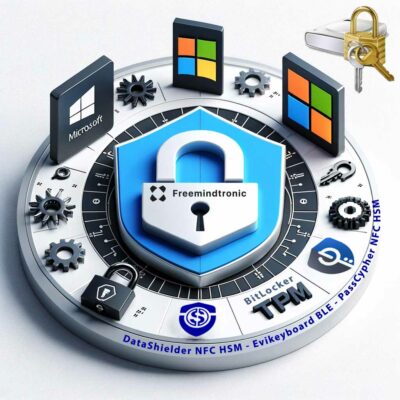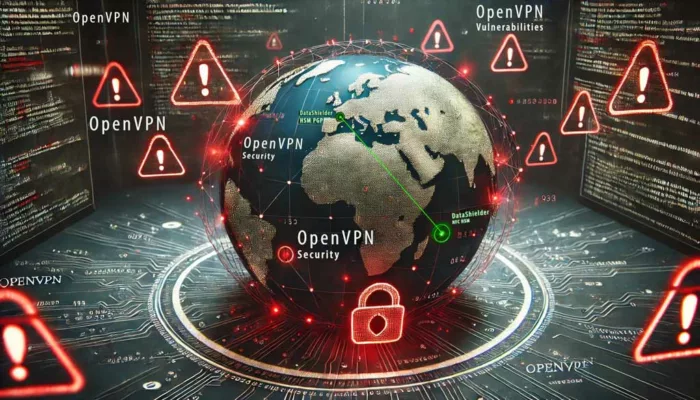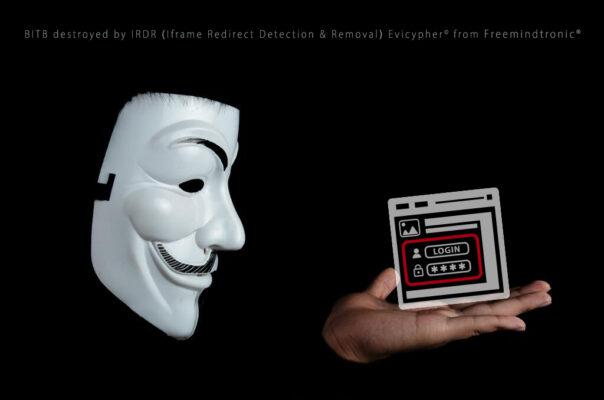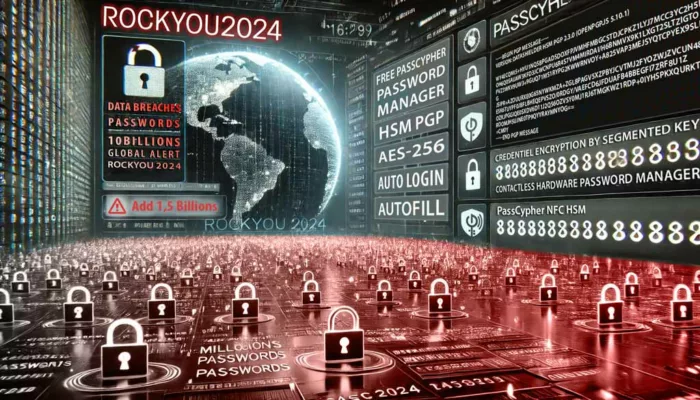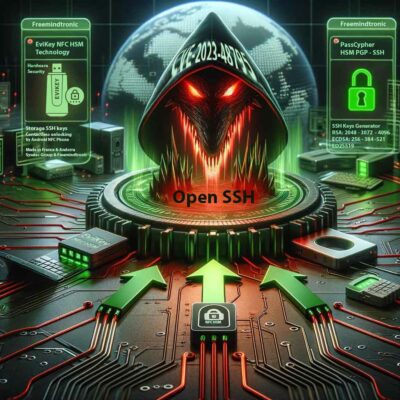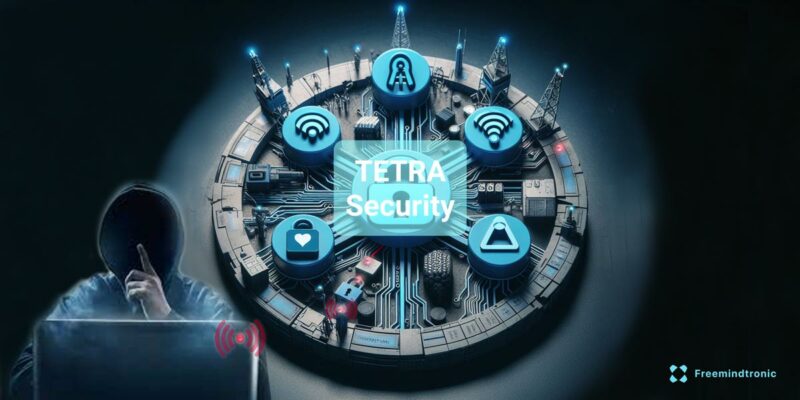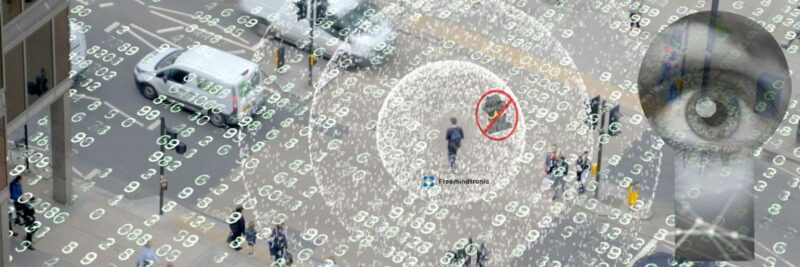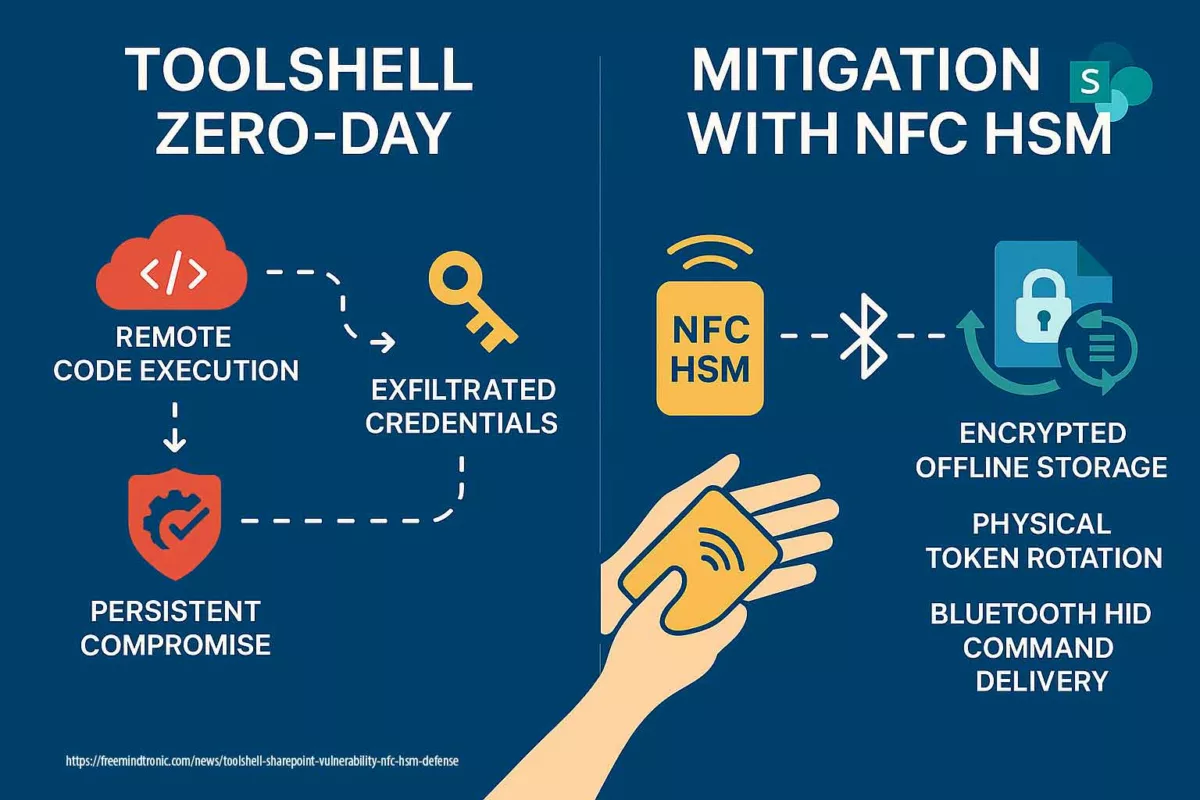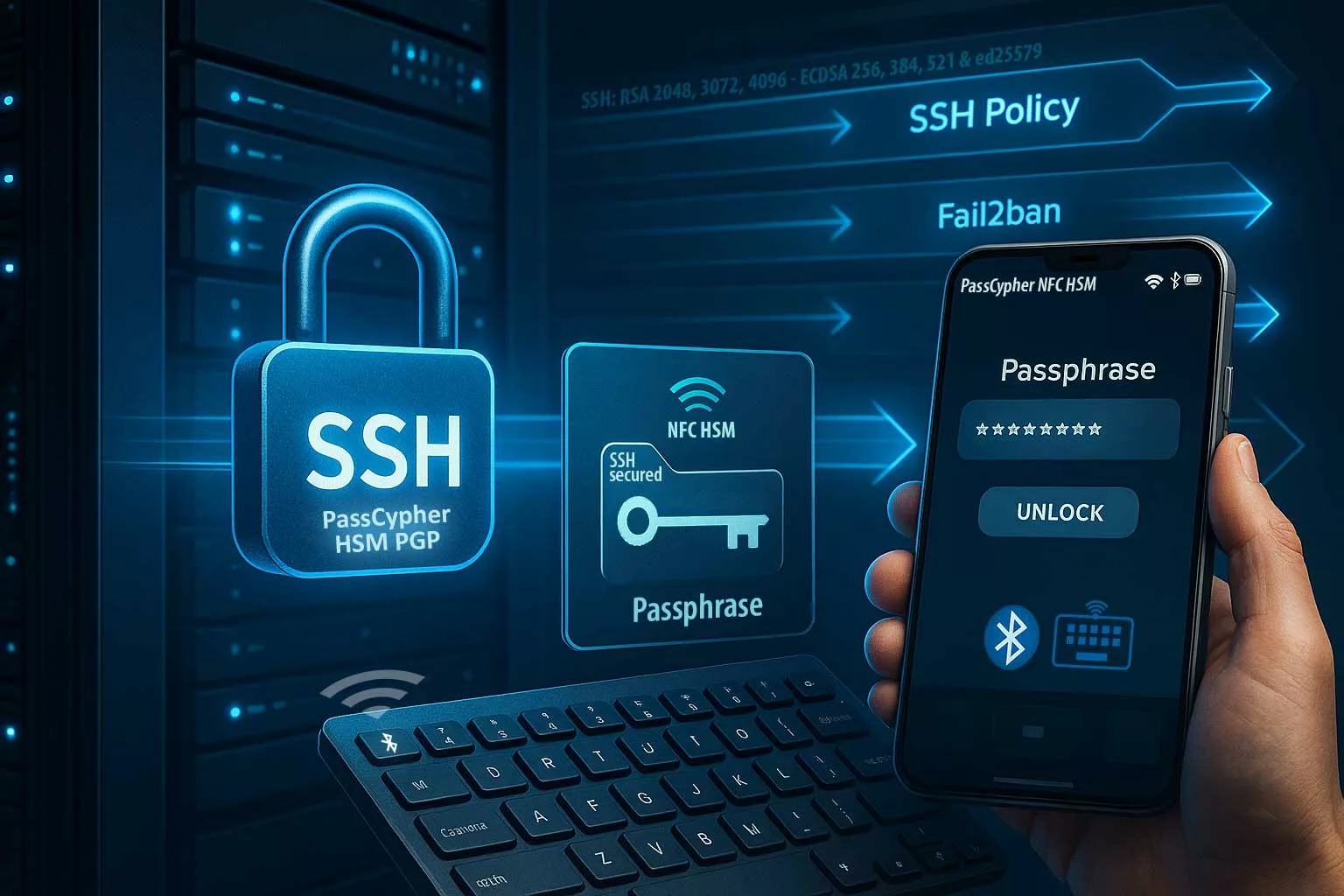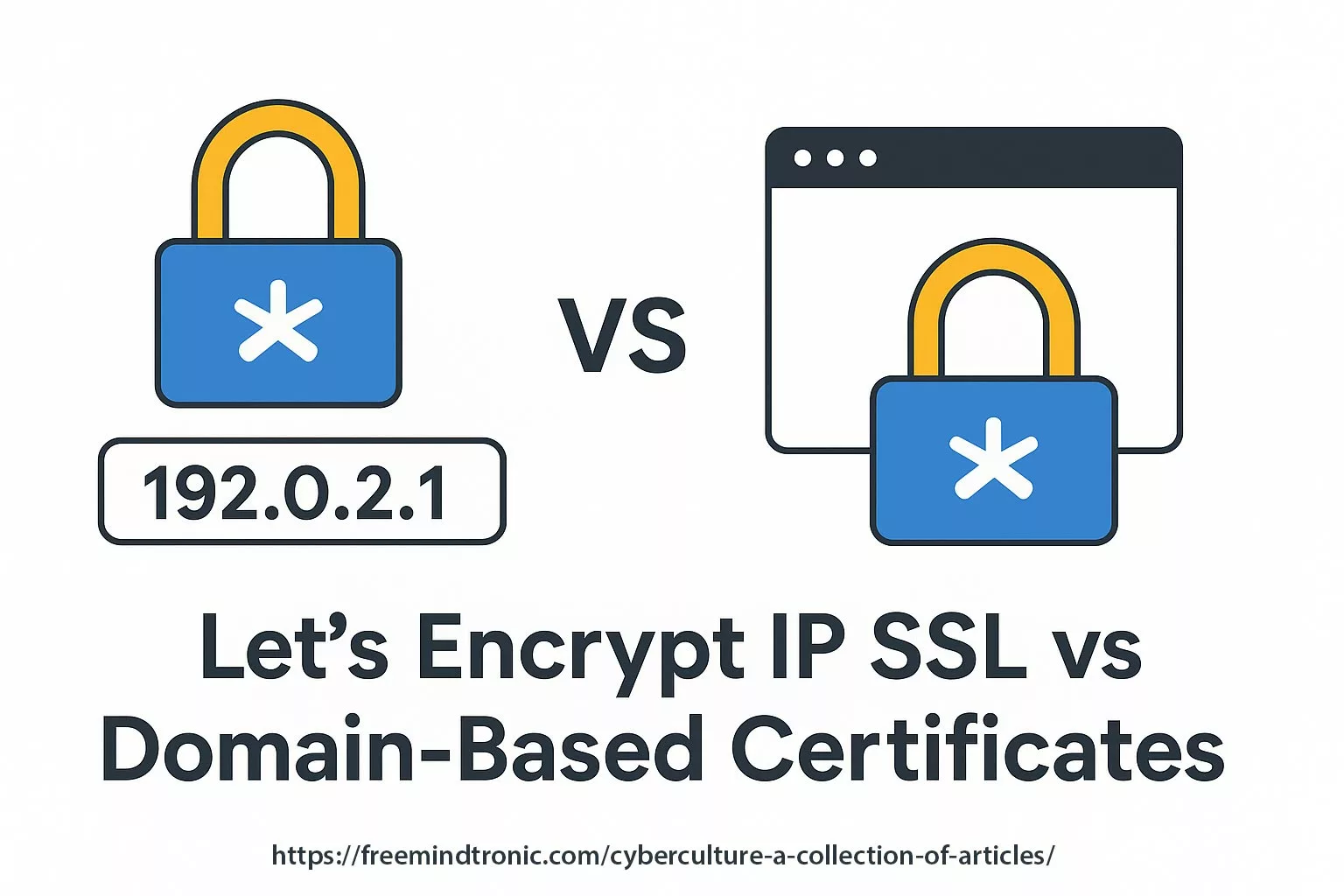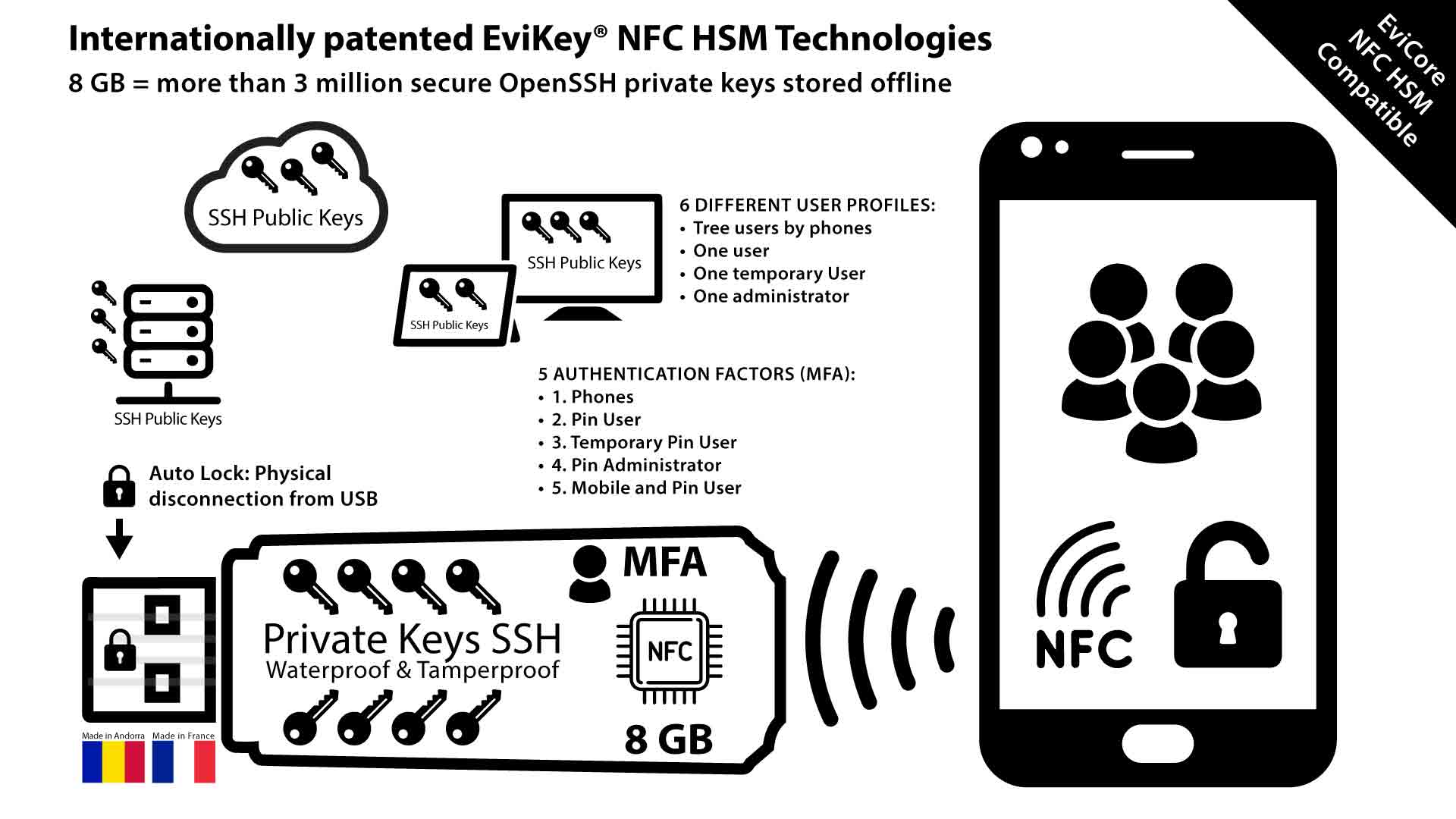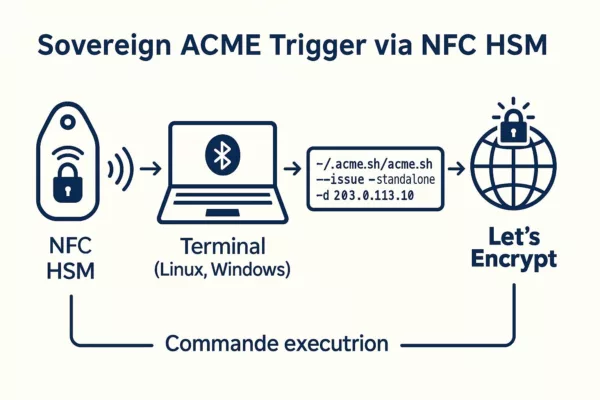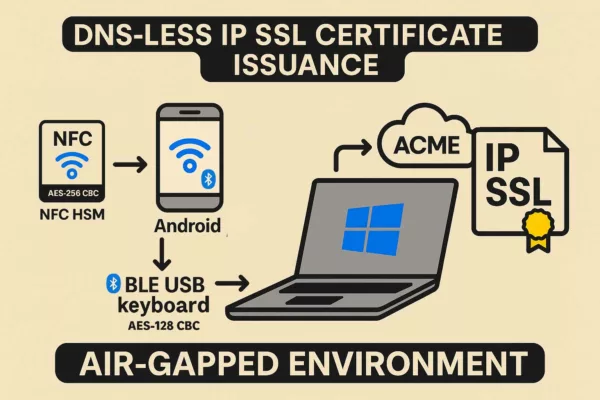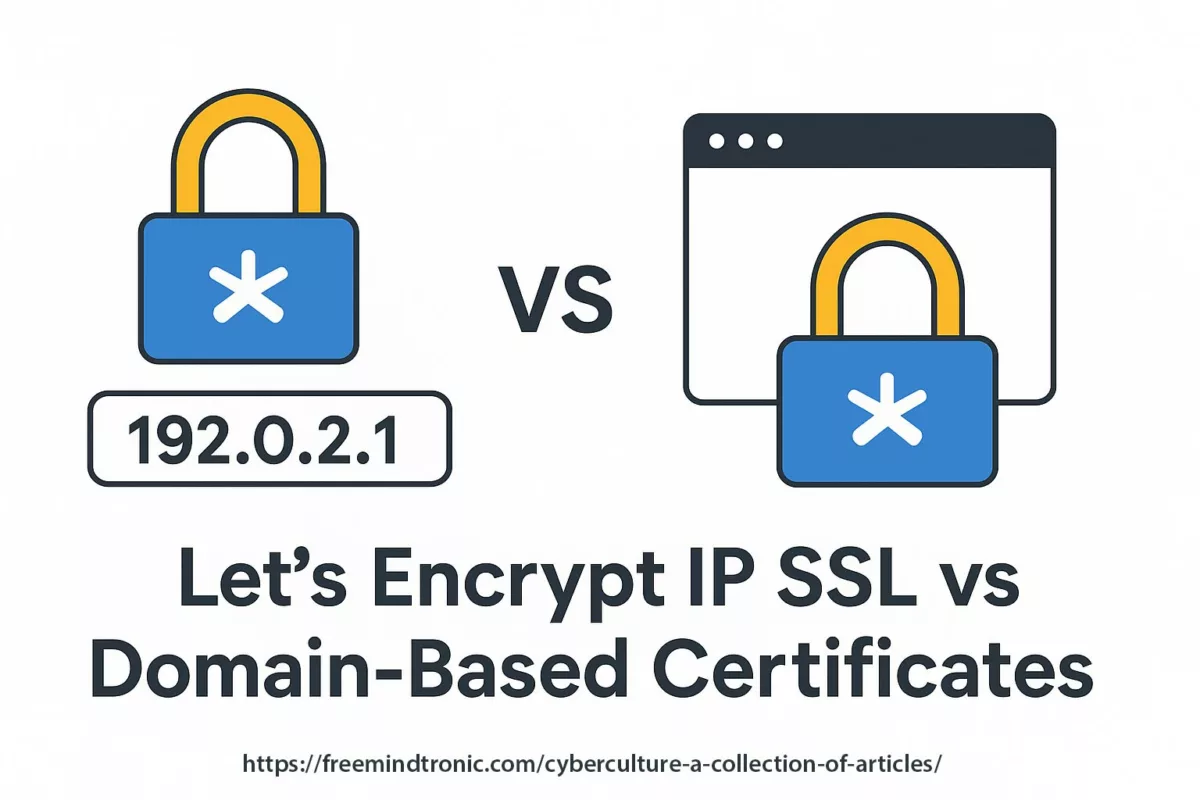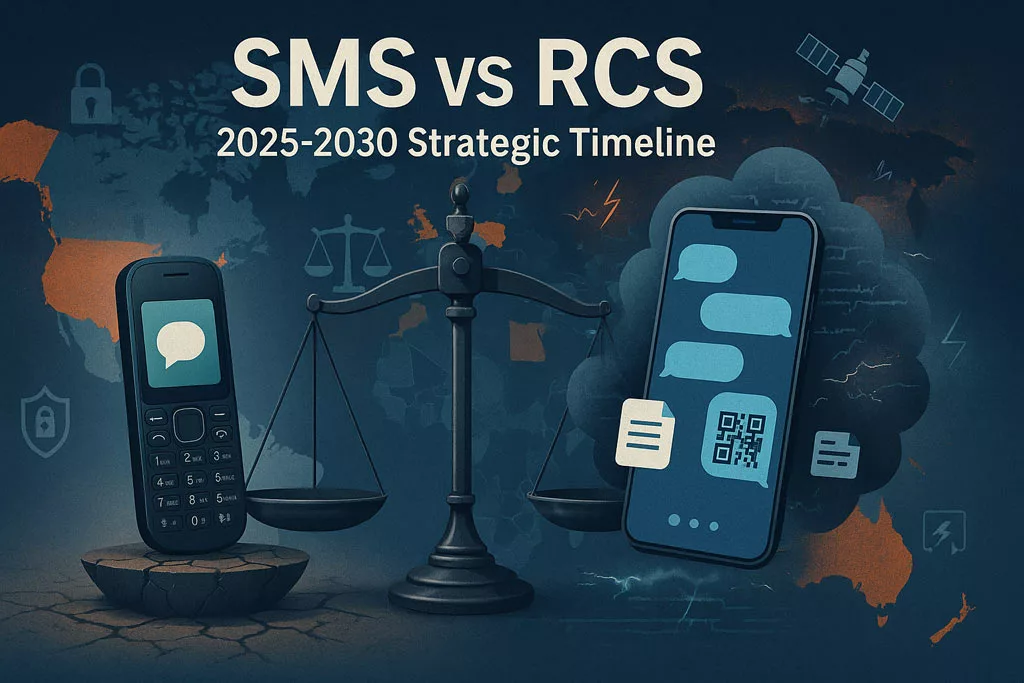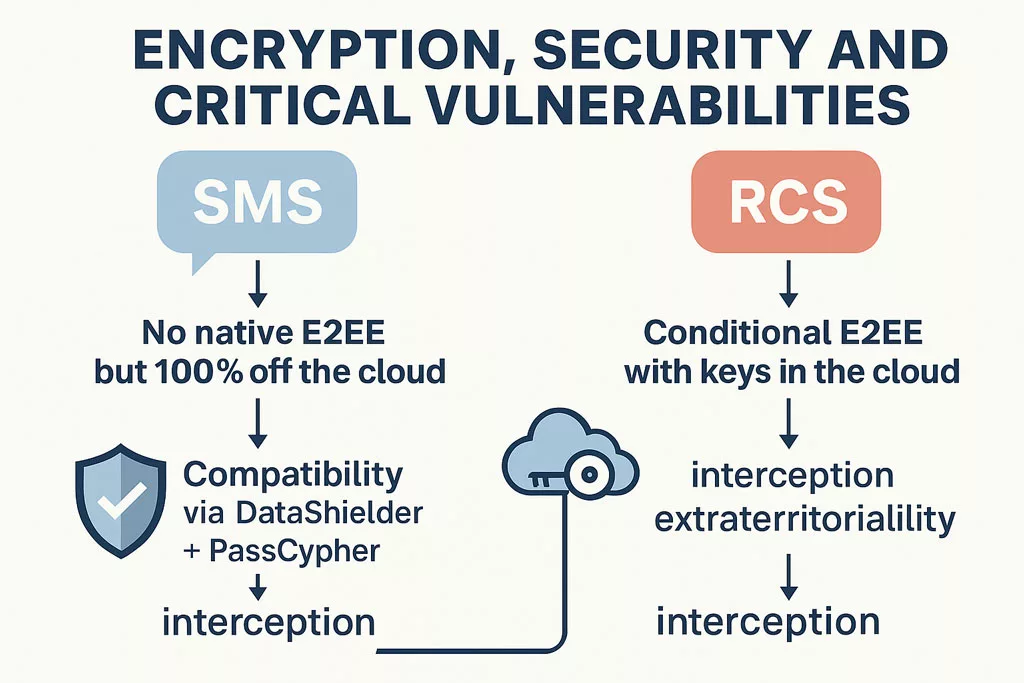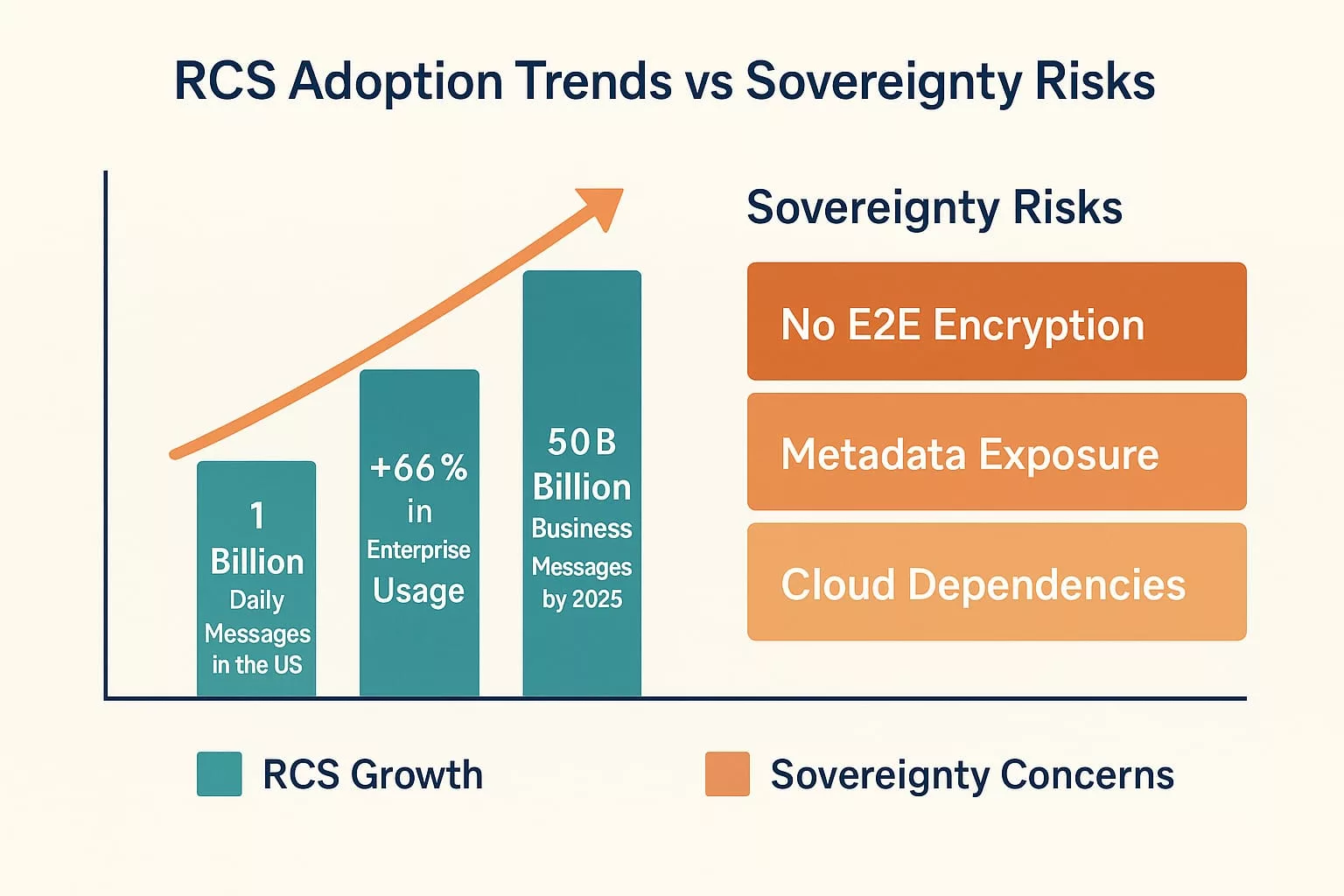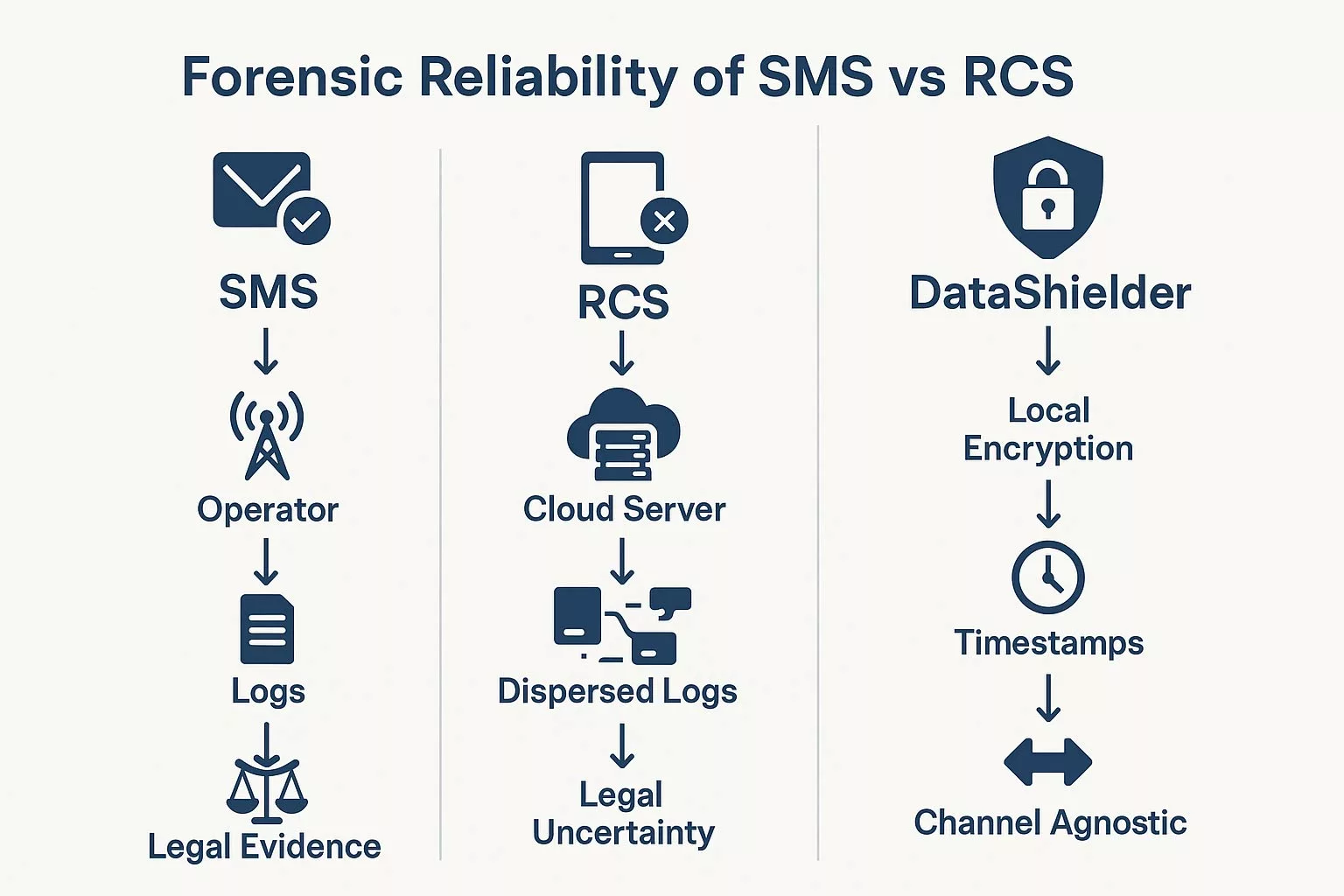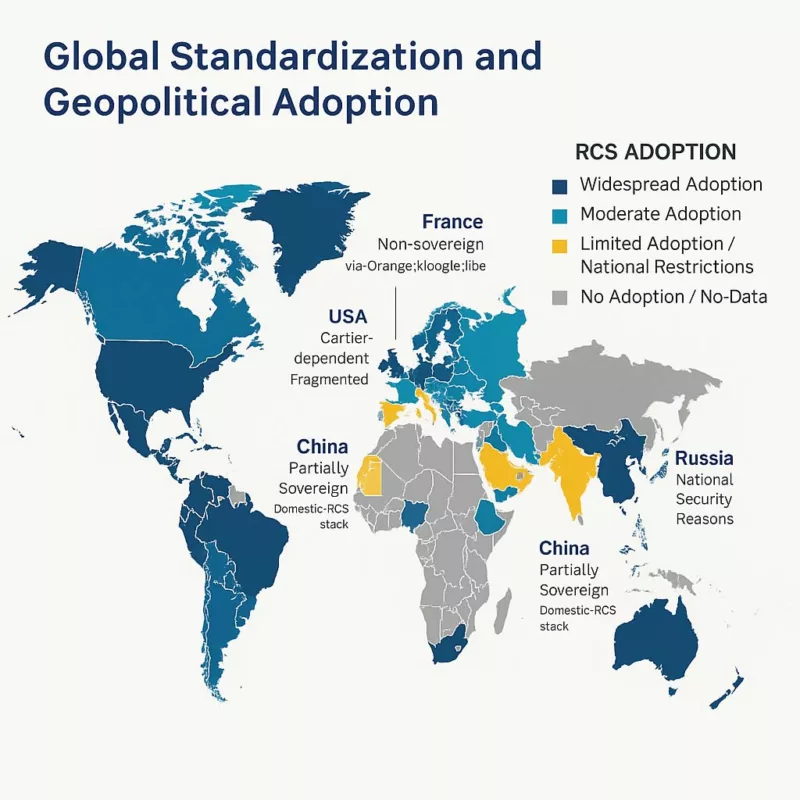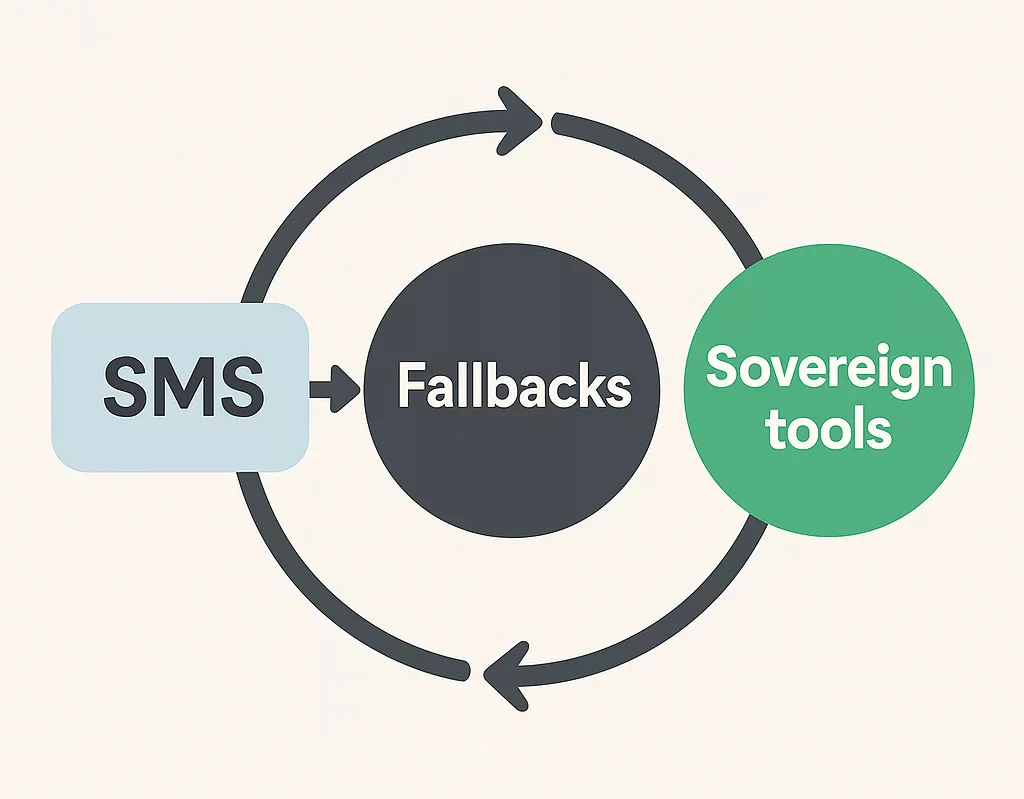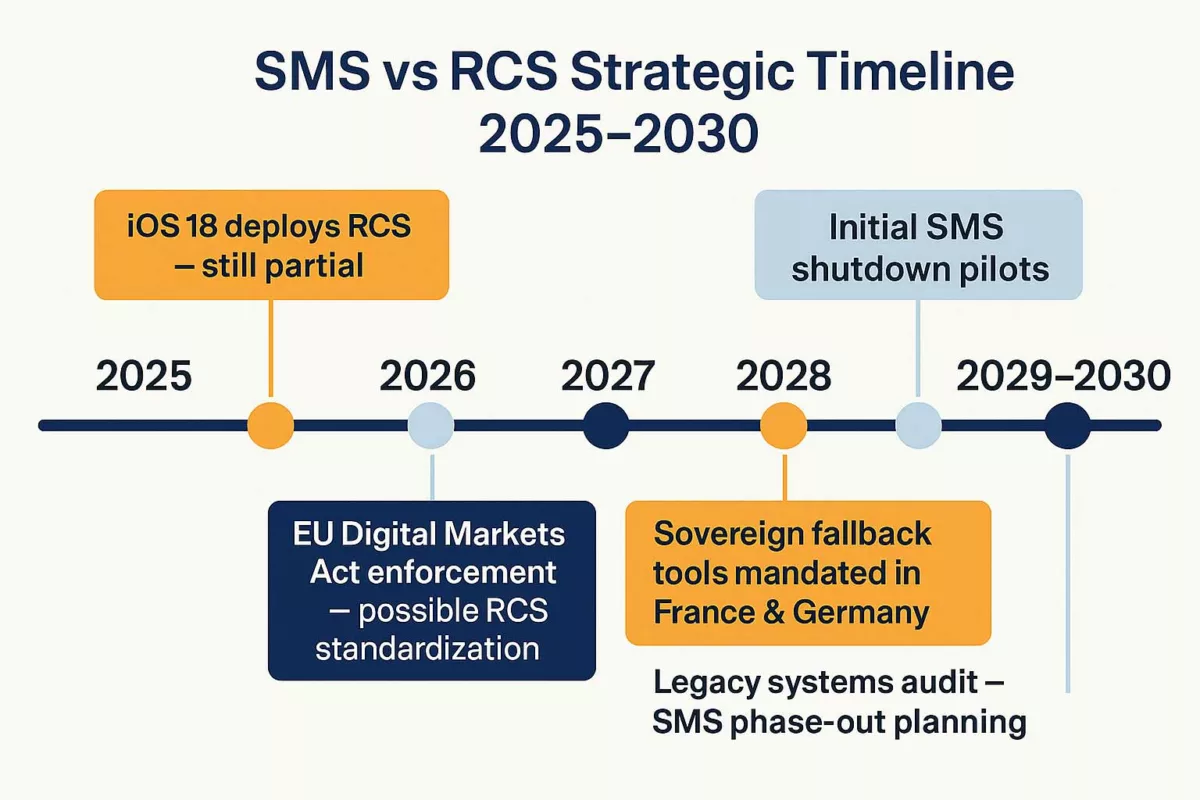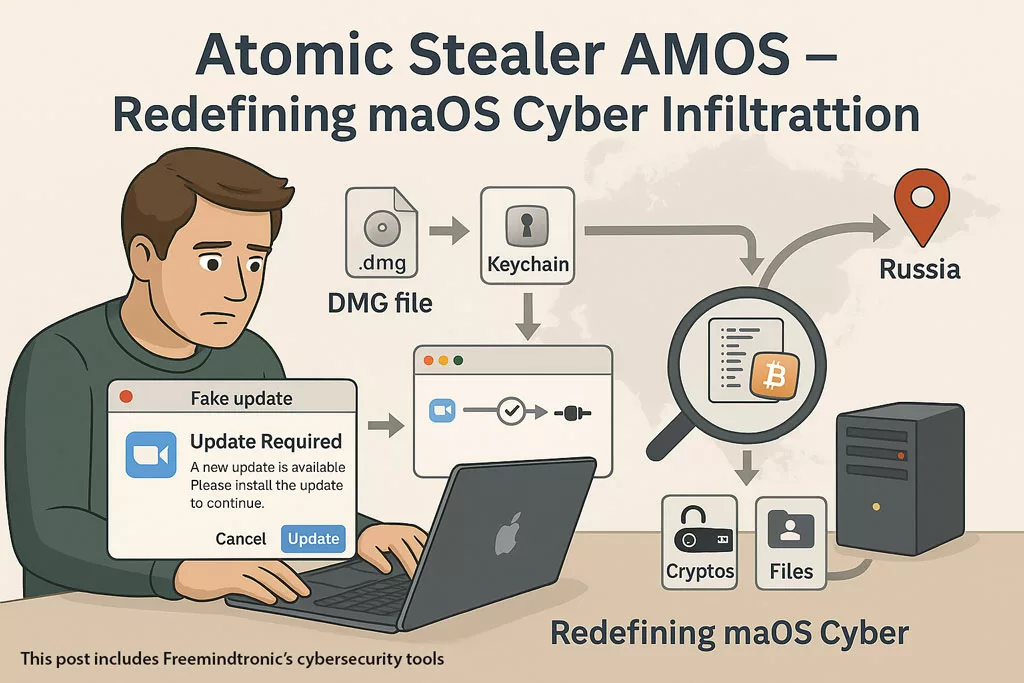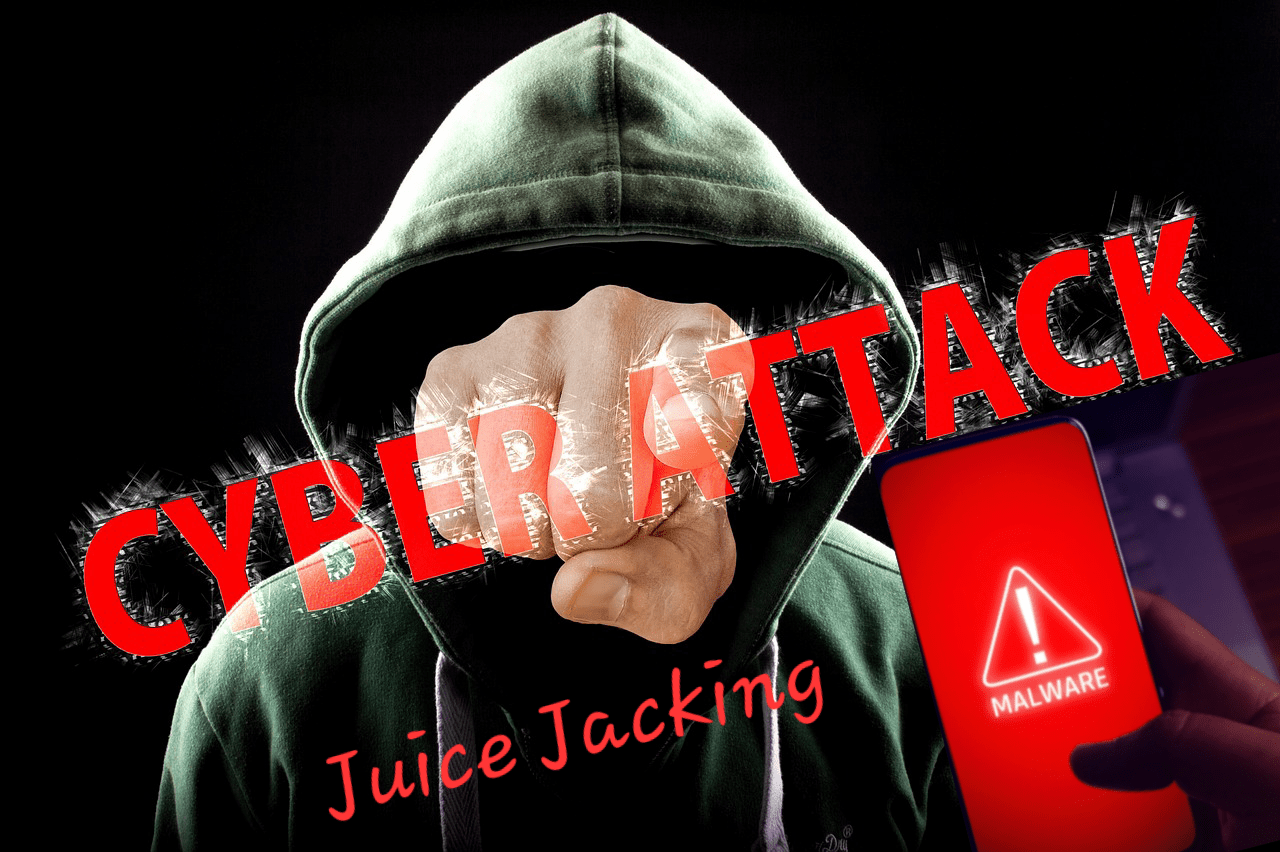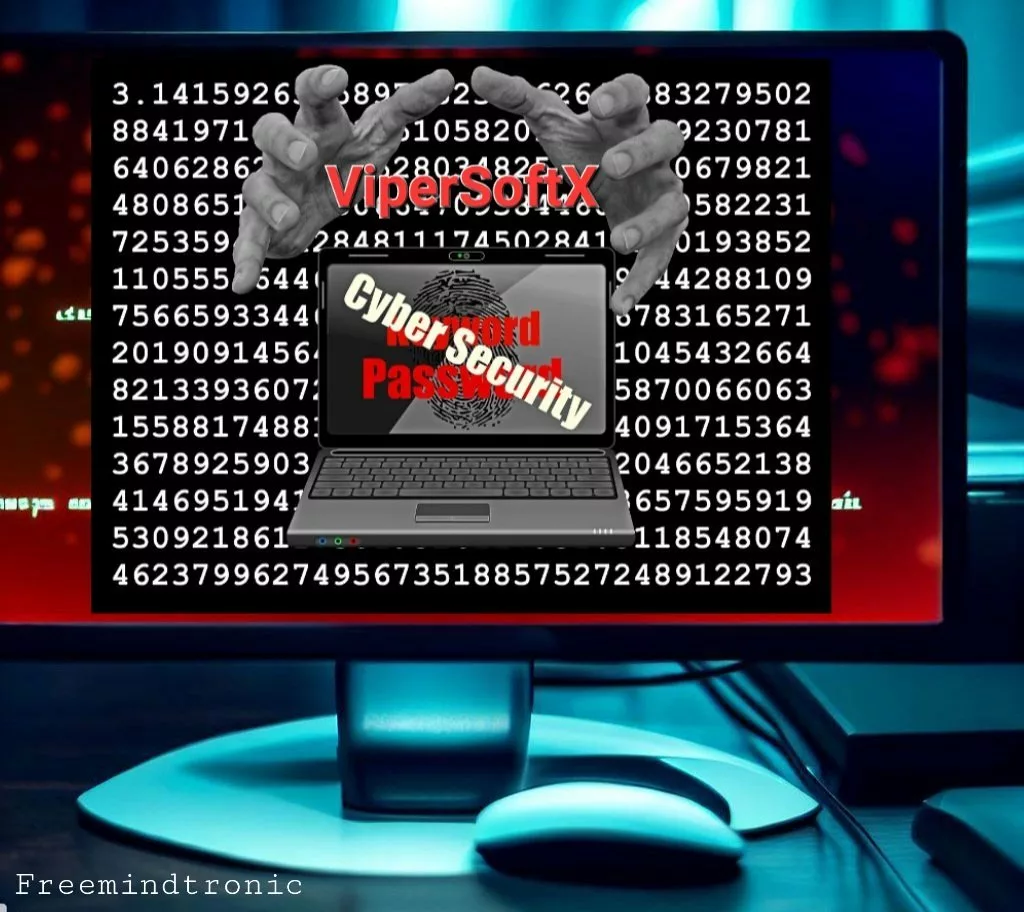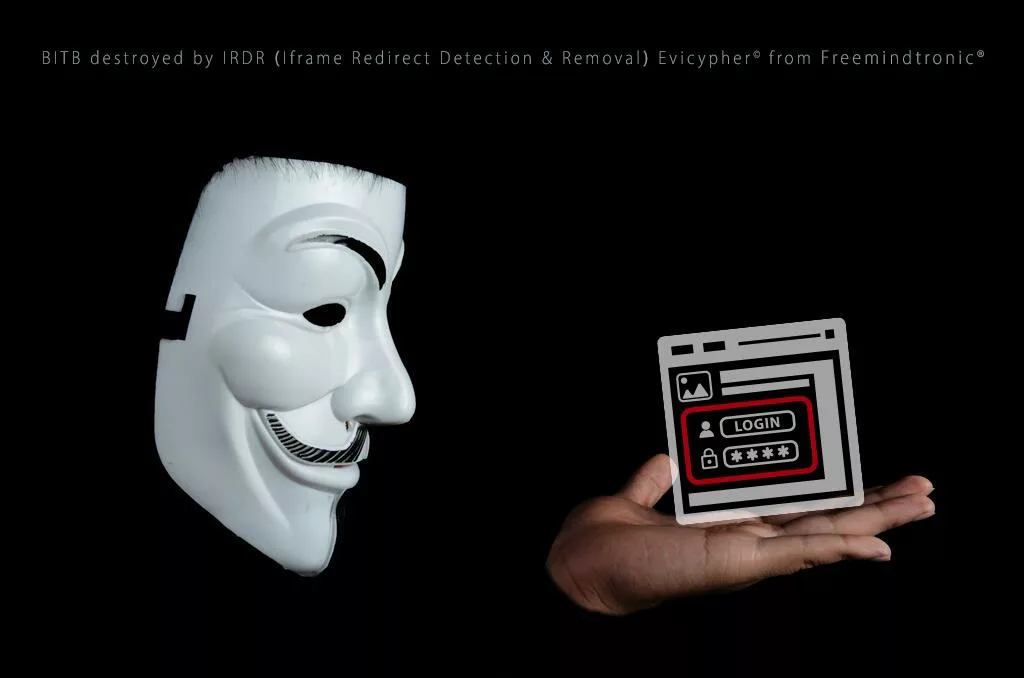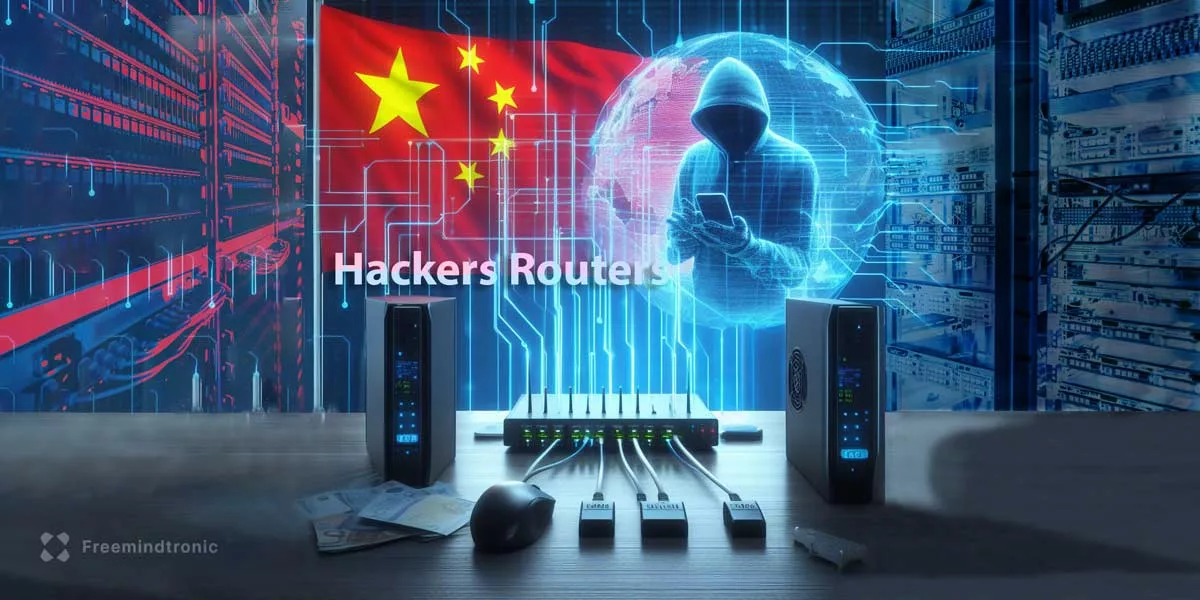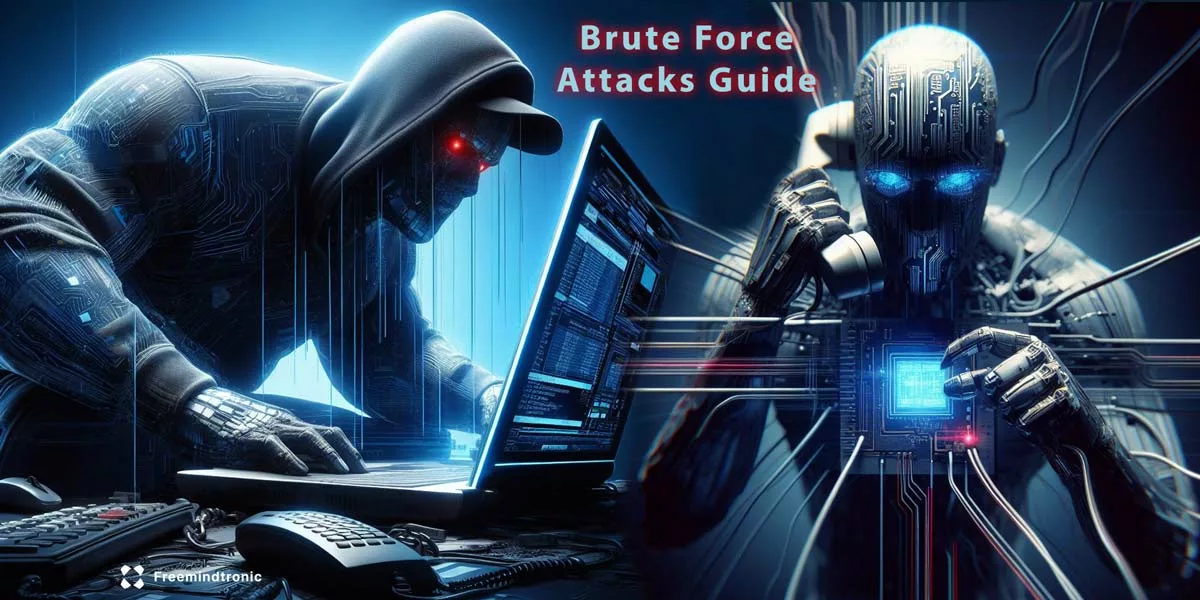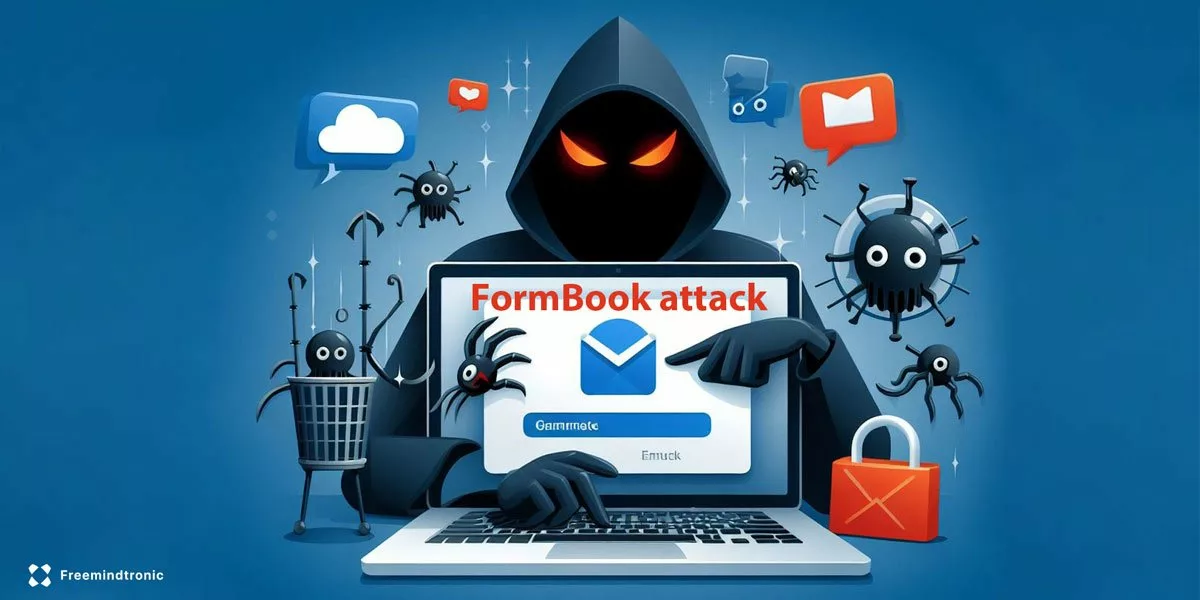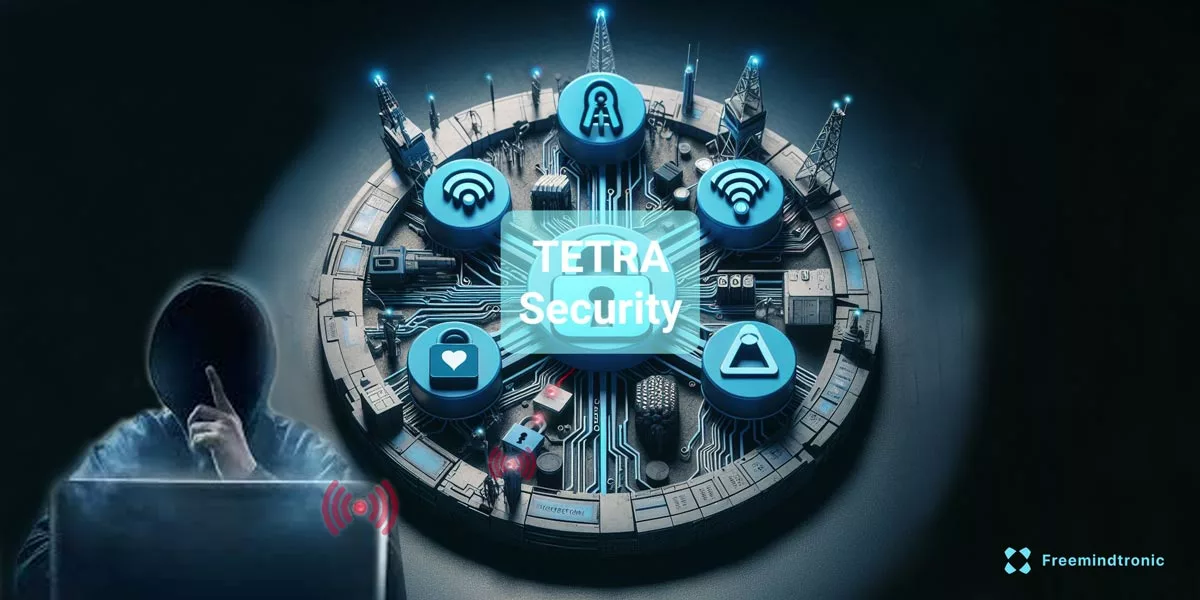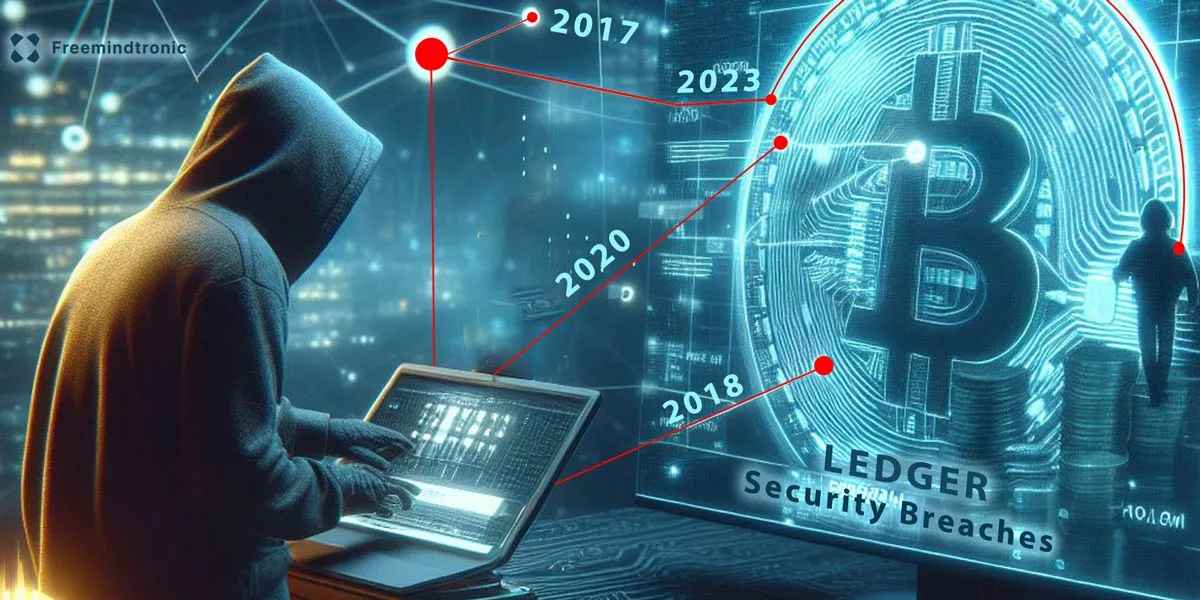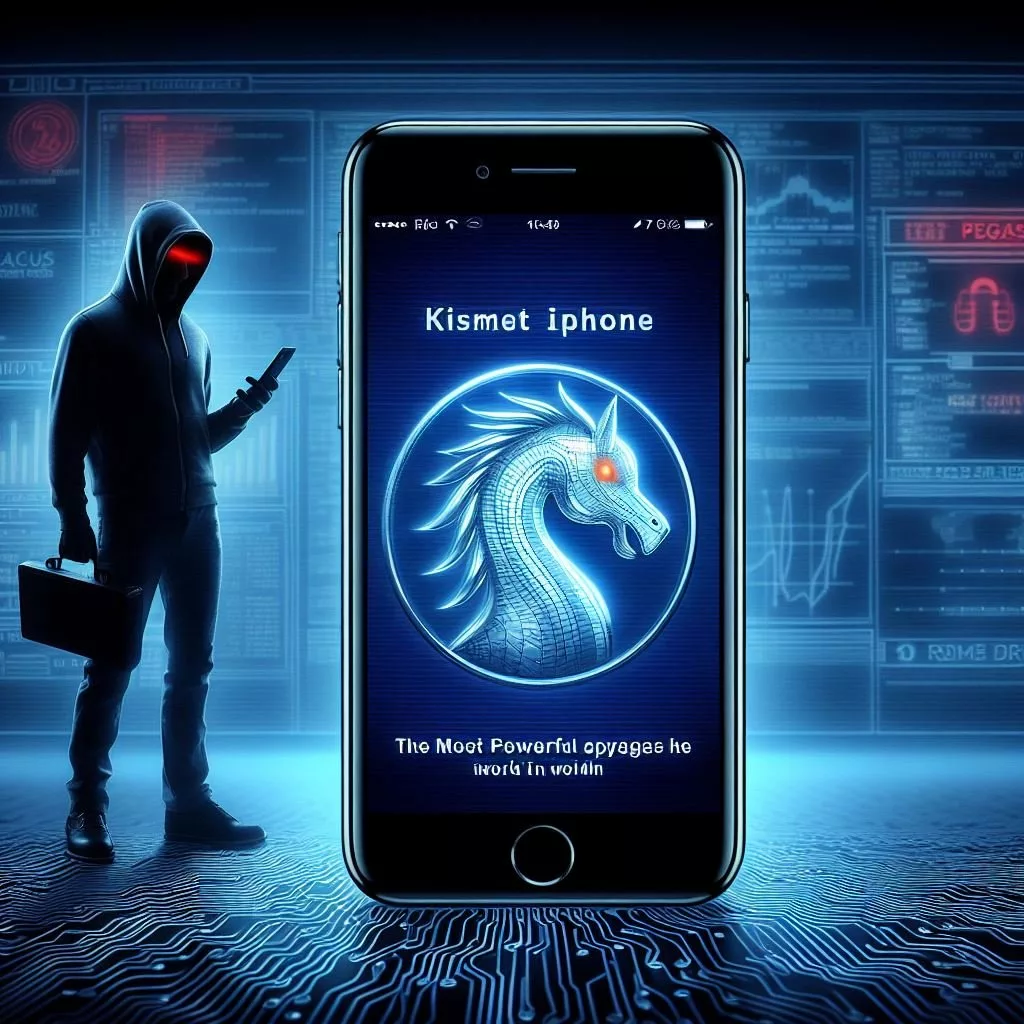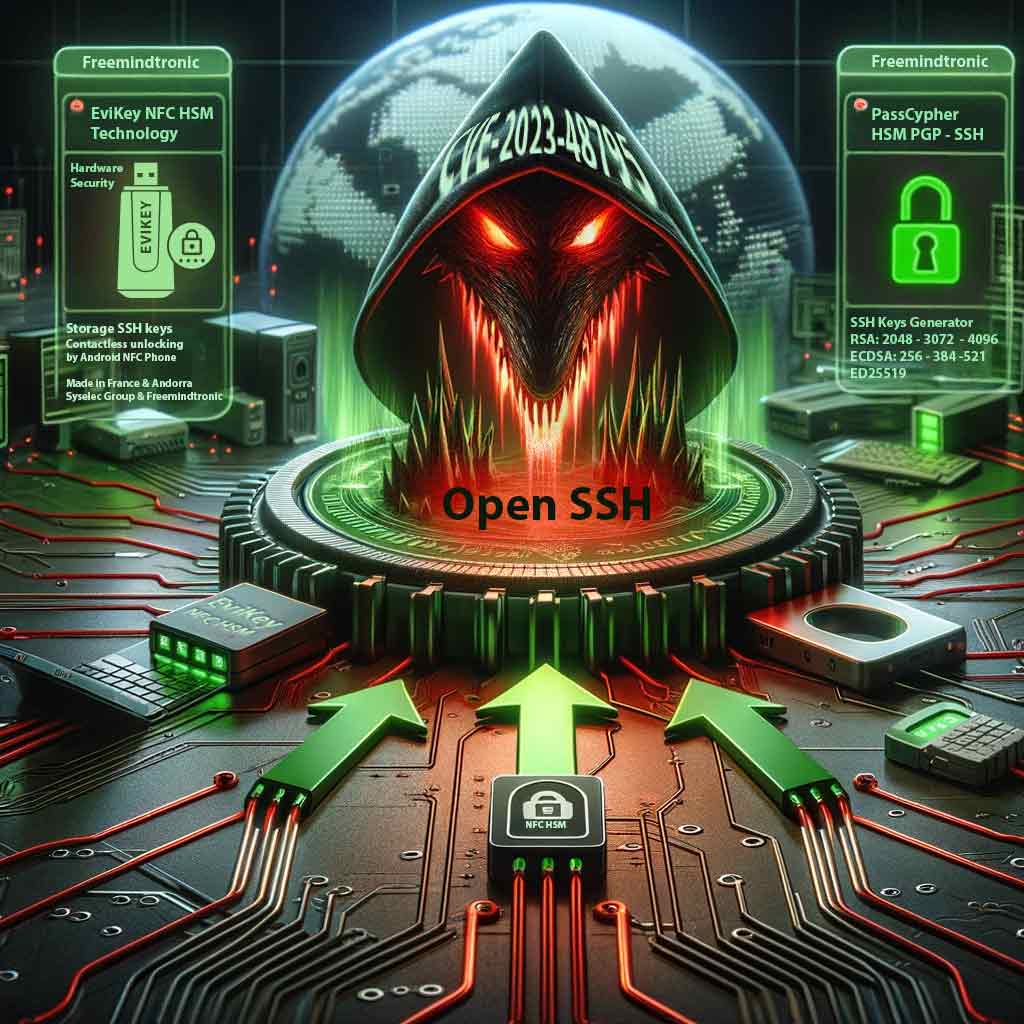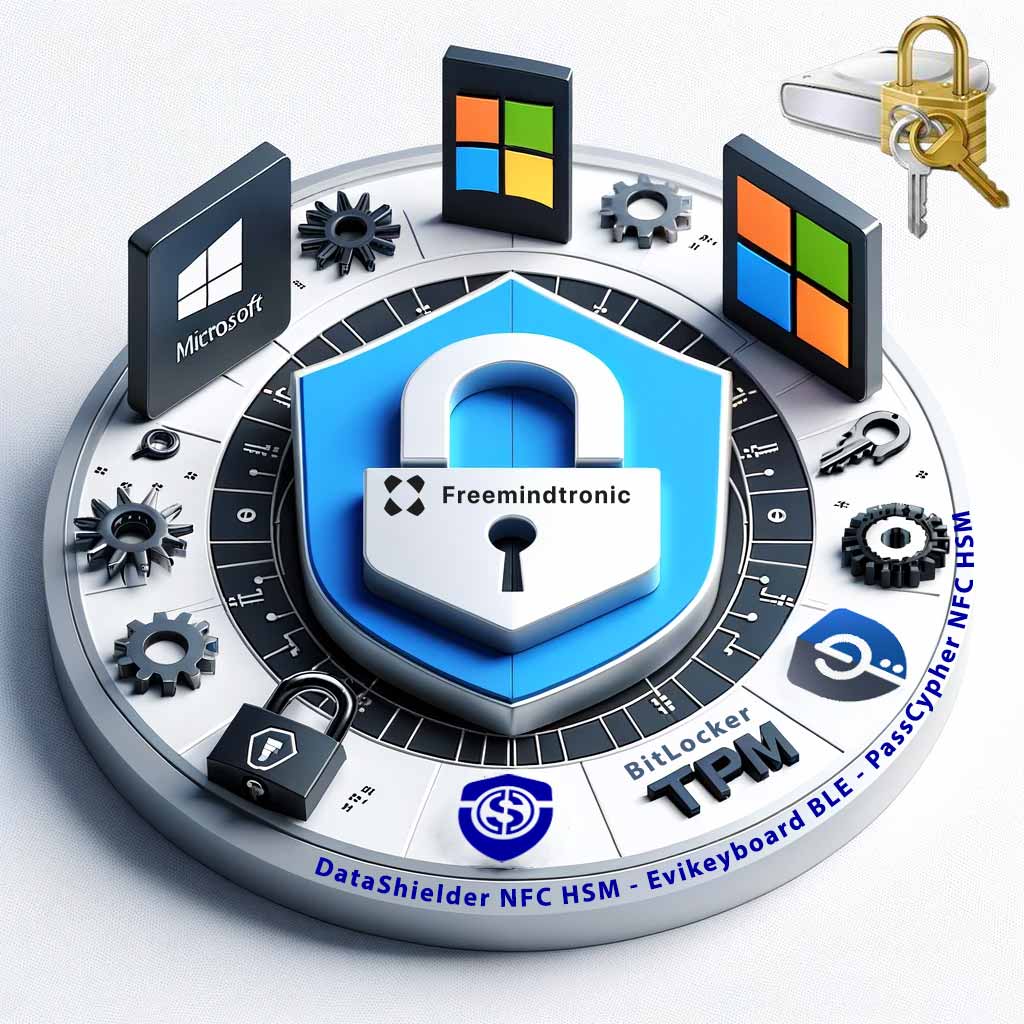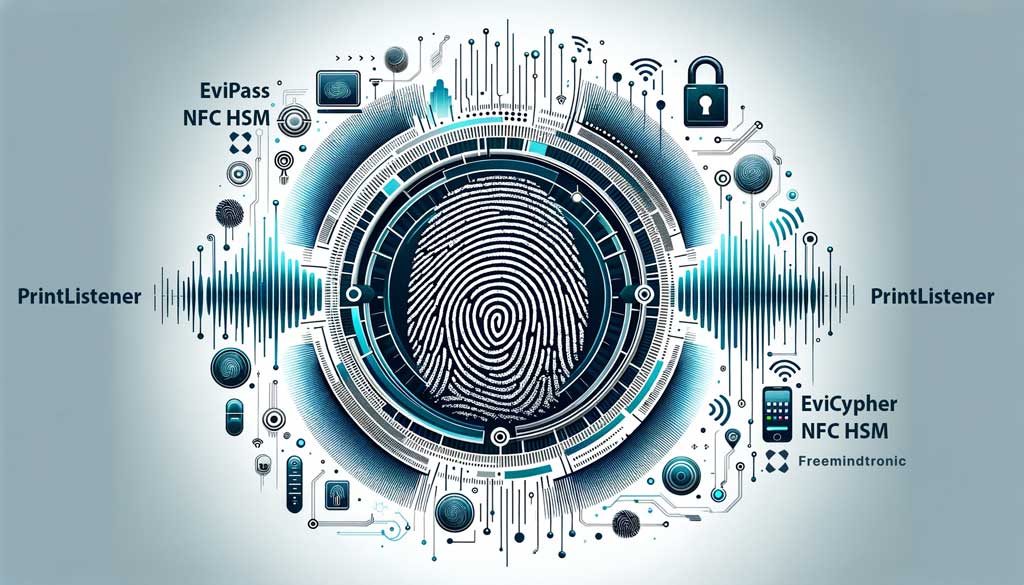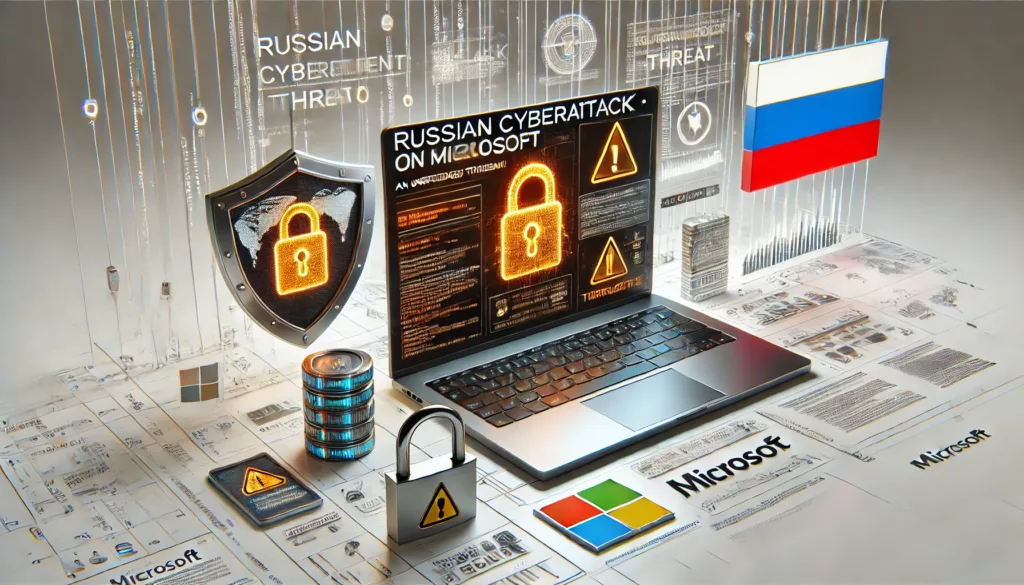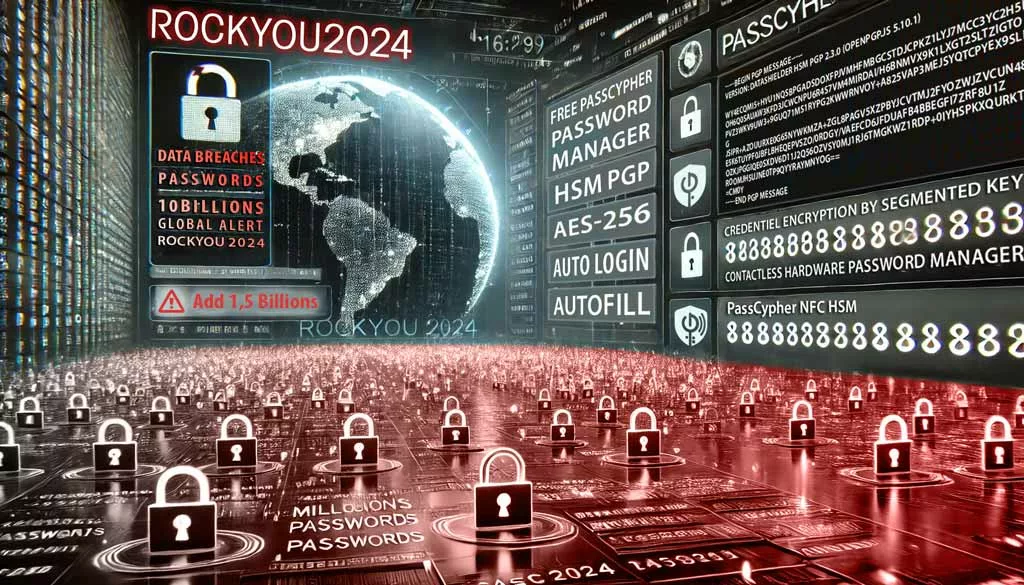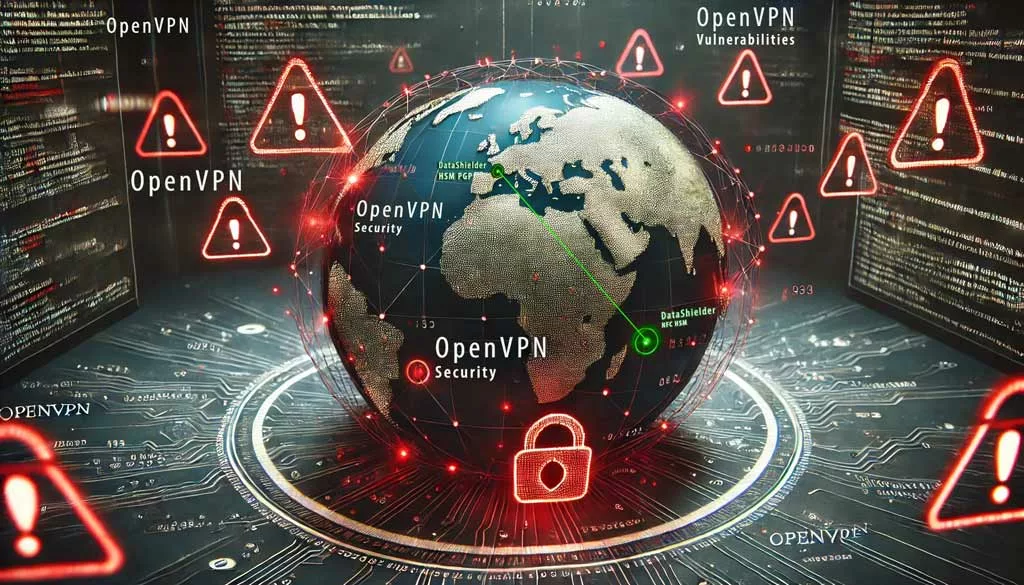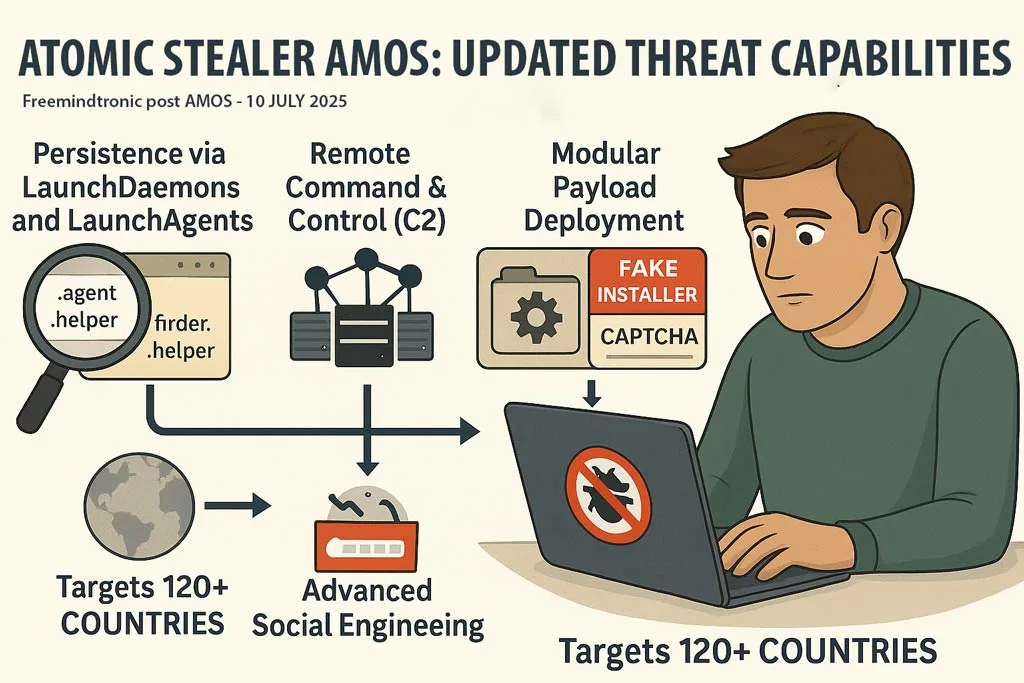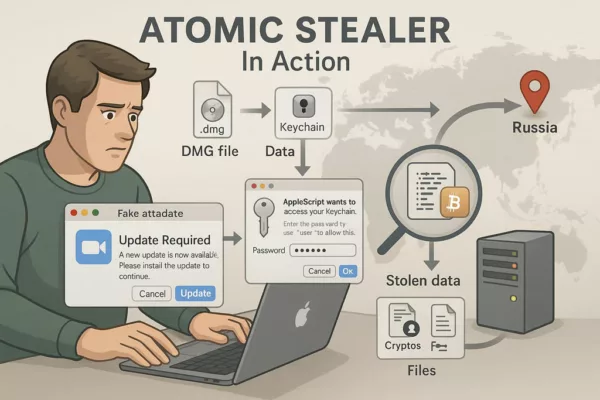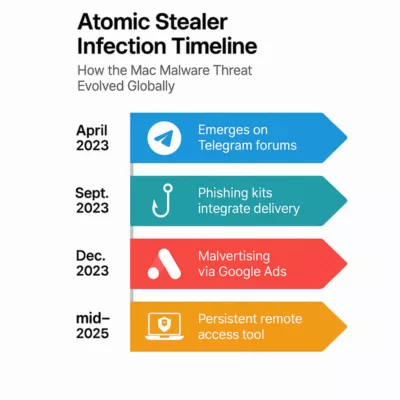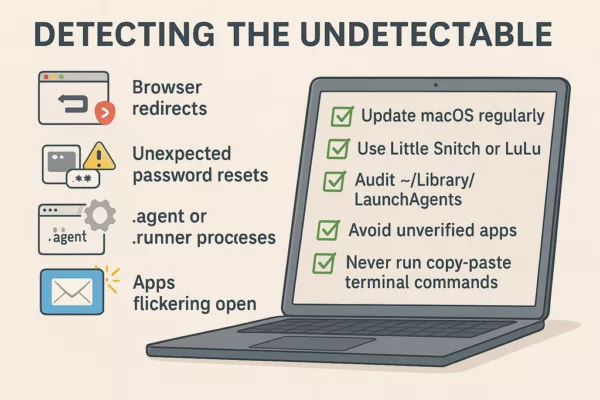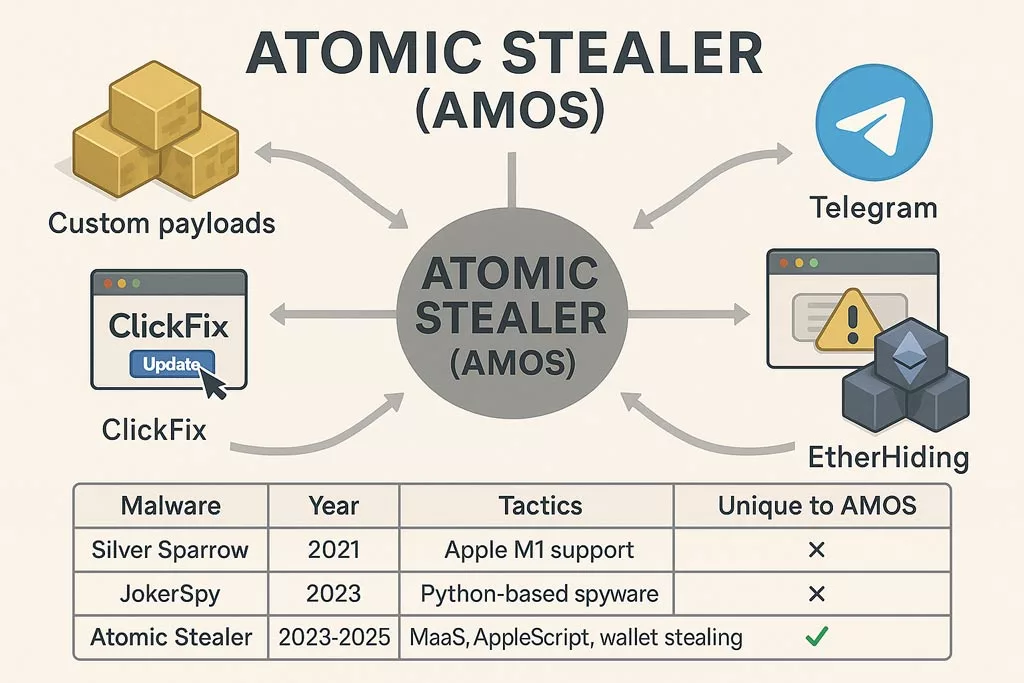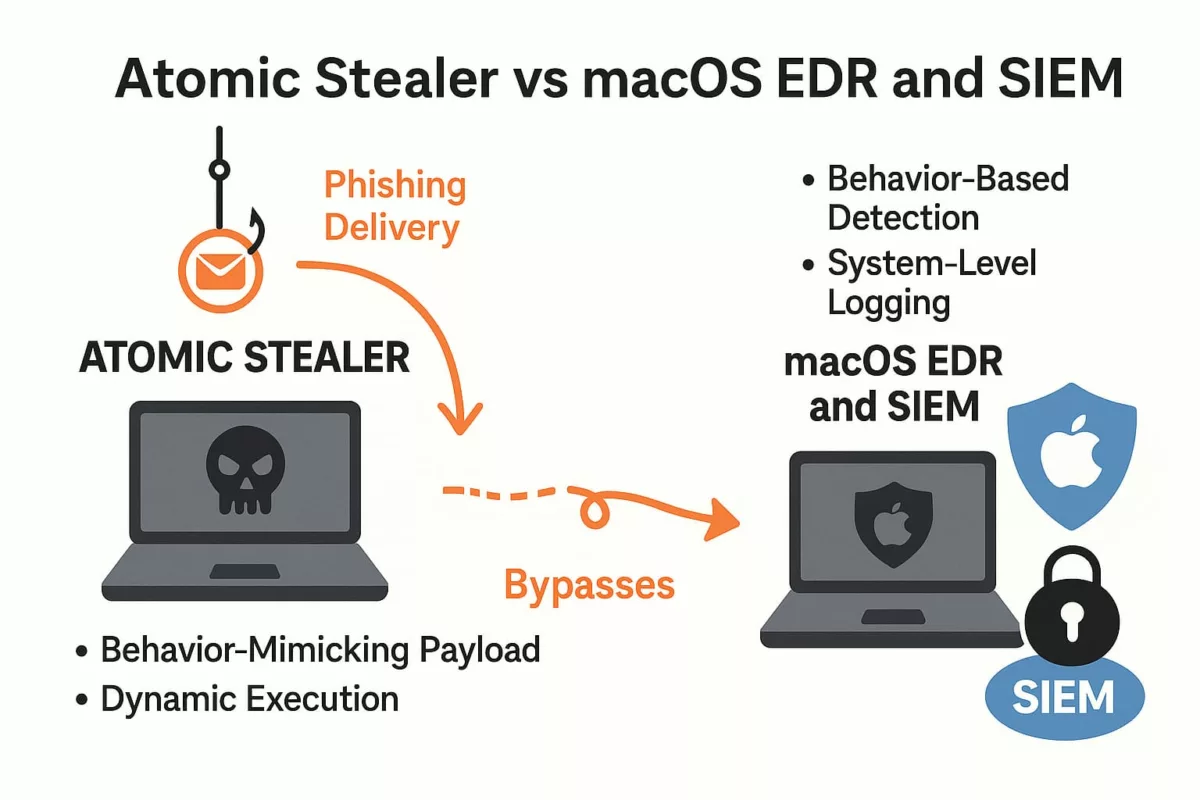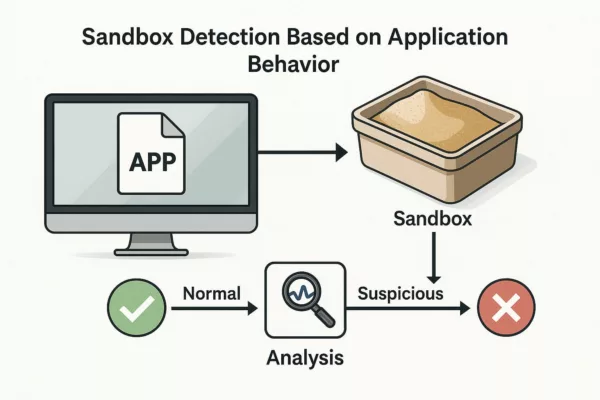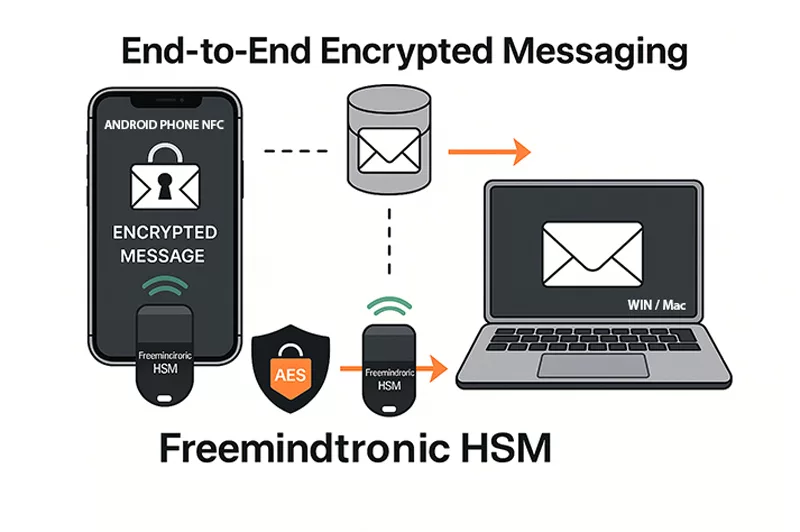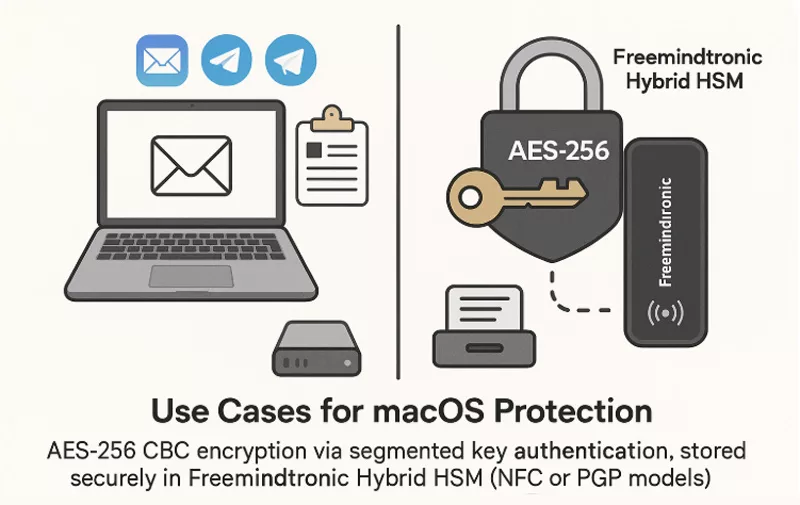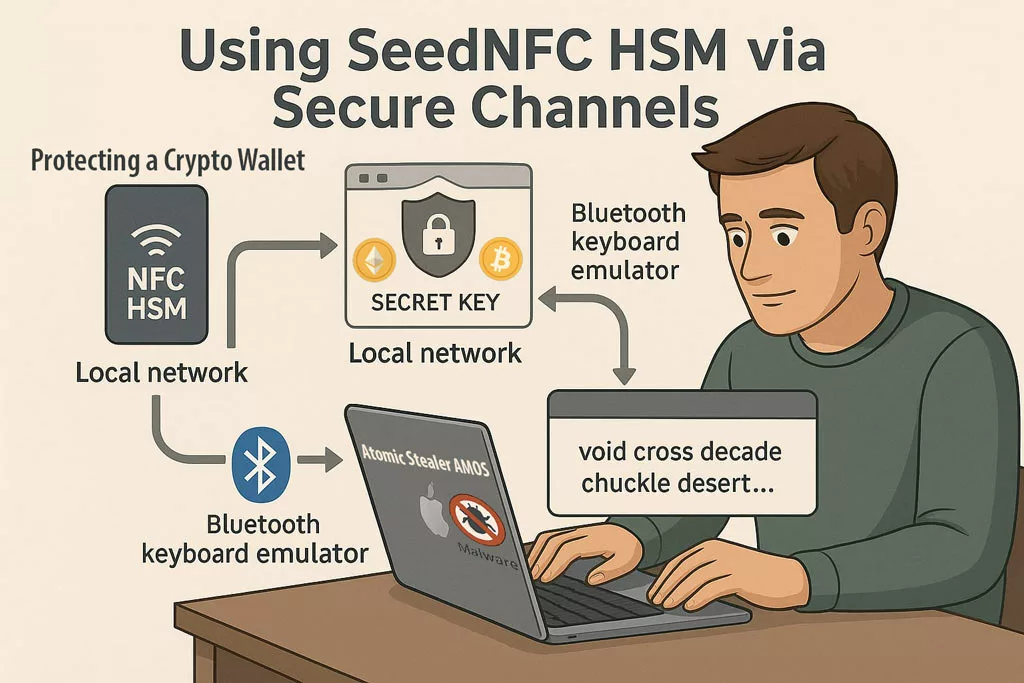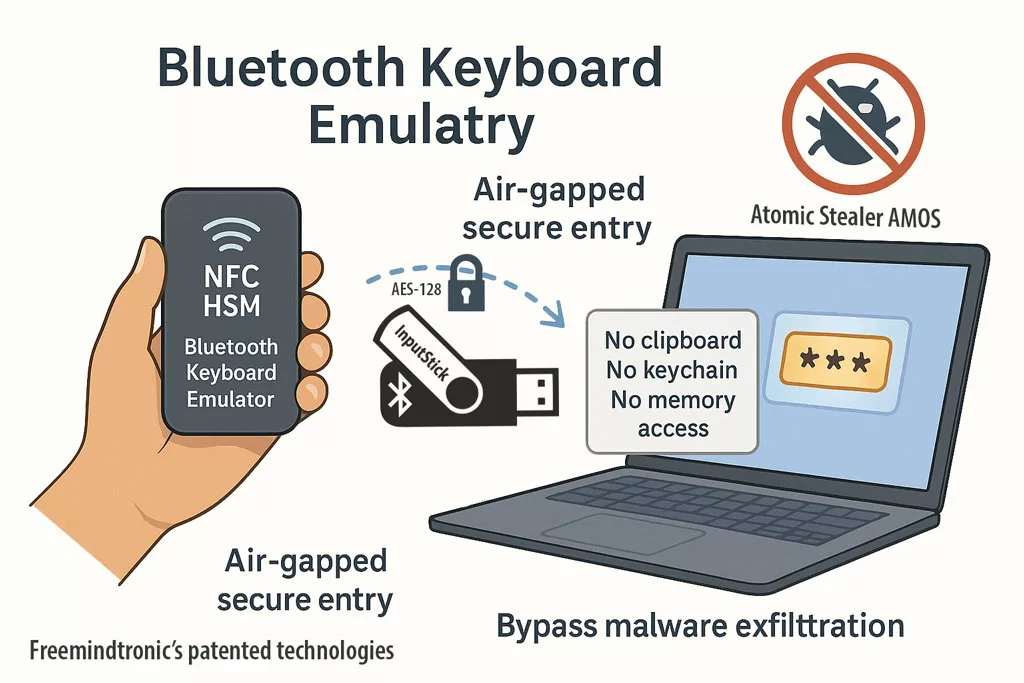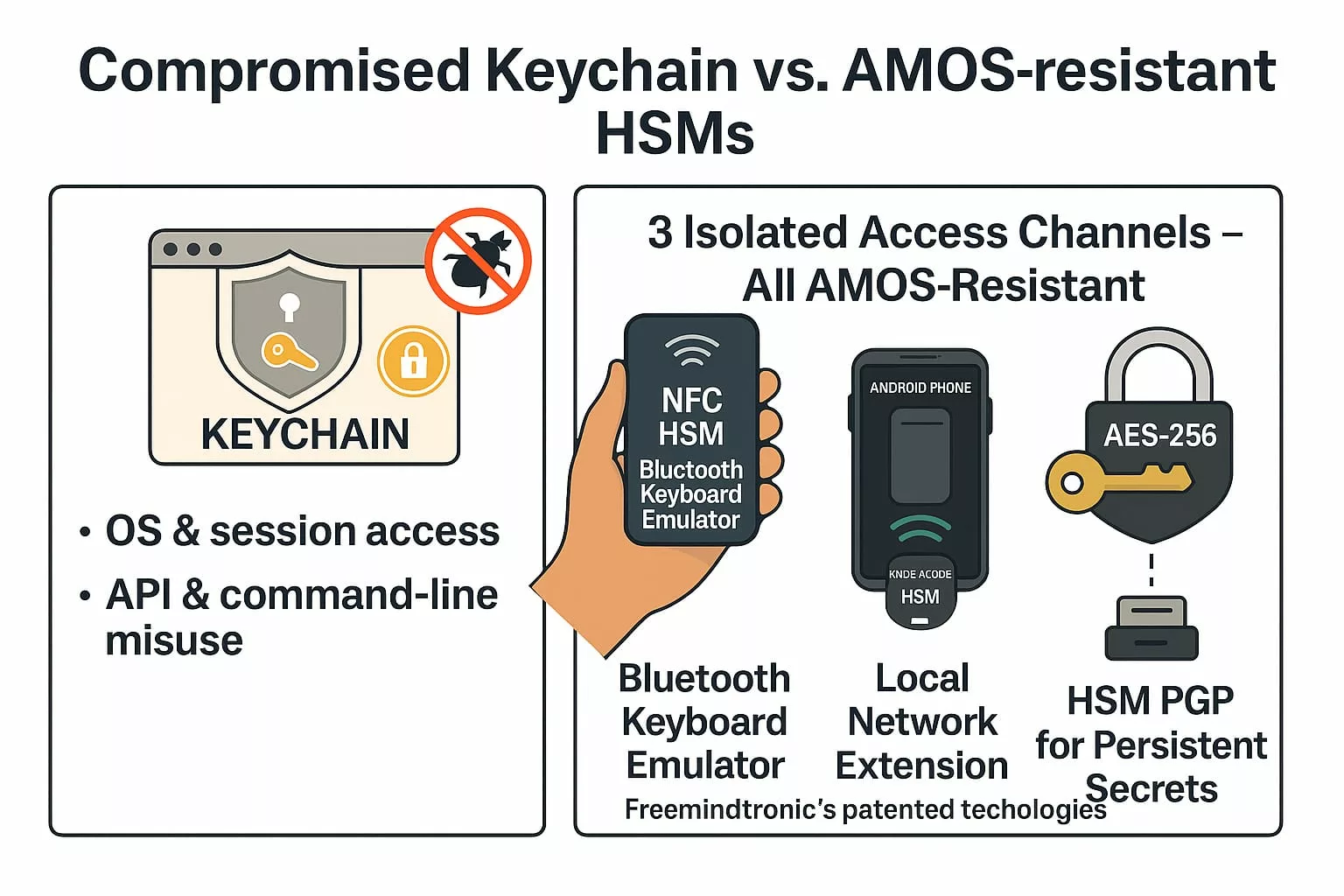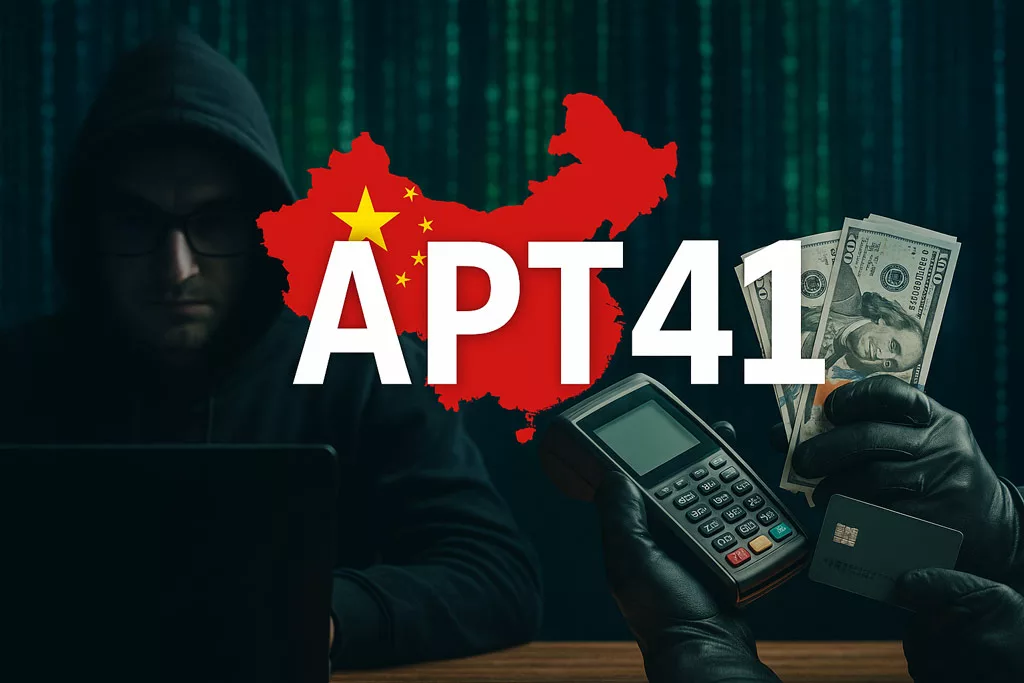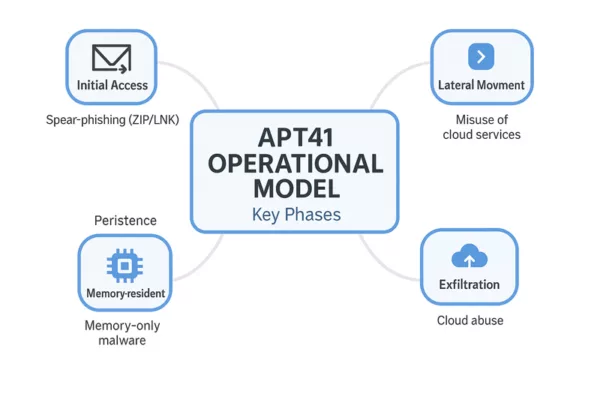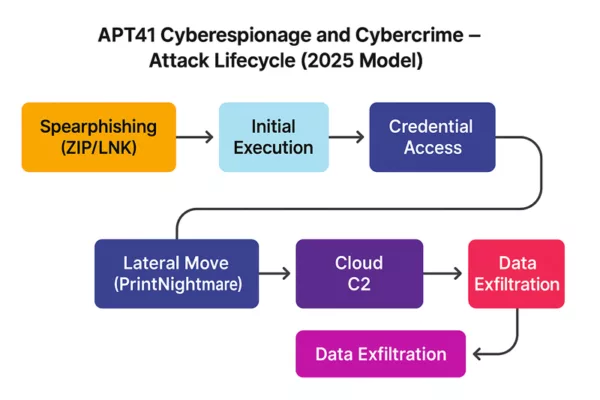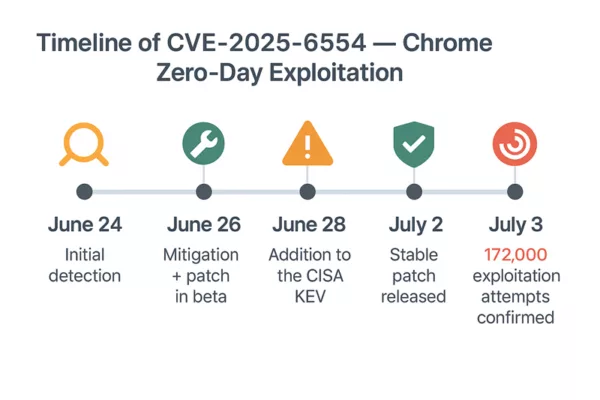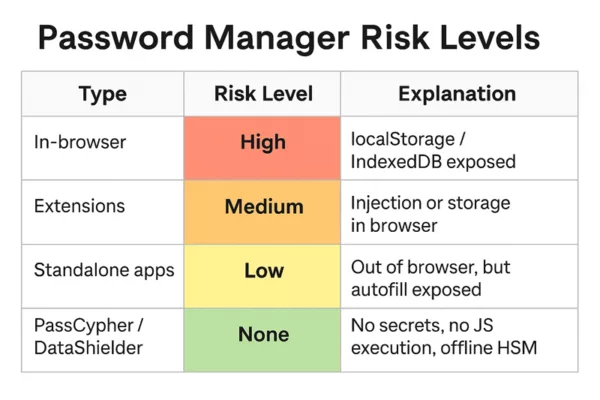Executive Summary
In the evolving landscape of hybrid warfare, reputation cyberattacks have emerged as a powerful asymmetric tool, targeting perception rather than systems. These operations exploit cognitive vectors—such as false narratives, controlled leaks, and media amplification—to destabilize trust in technologies, companies, or institutions. Unlike conventional cyberattacks, their purpose is not to penetrate networks, but to erode public confidence and strategic credibility. This Chronicle exposes the anatomy, intent, and implications of such attacks, offering sovereign countermeasures grounded in cryptographic attestation and narrative control.
Estimated reading time: 16 minutes
Complexity level: Strategic / Expert
Language specificity: Sovereign lexicon – High concept density
Accessibility: Screen reader optimized – all semantic anchors in place Navigation
In Cyberculture ↑ Correlate this Chronicle with other sovereign threat analyses in the same editorial rubric.
- Executive Summary
- Strategic Definition
- Typology of Reputation Attacks
- Event-Driven Triggers
- Threat Actor Mapping
- Geopolitical Embedding
- Sovereign Countermeasures
- Strategic Case Illustrations
- Intermediate & Legacy Cases
- Common Features & Strategic Objectives
- Strategic Outlook
- Narrative Warfare Lexicon
- Beyond This Chronicle
Strategic Navigation Index
Key insights include:
- Reputation attacks prioritize psychological and narrative impact over system access
- Controlled leaks and unverifiable claims simulate vulnerability without intrusion
- APT actors increasingly combine narrative warfare with geopolitical timing
- Sovereign countermeasures must address both runtime trust and narrative control
- Legal attribution, hybrid doctrines, and military exercises recognize the strategic threat
- IA-generated content and deepfake amplification heighten the reputational asymmetry
About the Author – Jacques Gascuel, inventor of internationally patented encryption technologies and founder of Freemindtronic Andorra, is a pioneer in sovereign cybersecurity. In this Cyberculture Chronicle, he deciphers the role of reputation cyberattacks in hybrid warfare and outlines a sovereign resilience framework based on NFC HSMs, narrative control, and runtime trust architecture.
Strategic Definition
Reputation cyberattacks are deliberate operations that undermine public trust in a targeted entity—governmental, industrial, or infrastructural—without necessitating technical penetration. Unlike classical cyberattacks, these actions do not seek to encrypt, extract, or manipulate data systems directly. Instead, they deploy orchestrated influence tactics to suggest compromise, provoke doubt, and corrode strategic credibility.
Key vectors include unverifiable claims of intrusion, dissemination of out-of-context or outdated data, and AI-generated content posing as evidence. These attacks are particularly insidious because they remain plausible without being technically demonstrable. Their targets are not systems but perceptions—clients, partners, regulators, and the broader strategic narrative.
Reputation cyberattacks weaponize doubt and narrative ambiguity. Their objective is not to compromise infrastructure but to simulate weakness, discredit governance, and manipulate perception within strategic timeframes.
Typology of Reputation Attacks
Reputation cyberattacks operate through carefully structured vectors designed to affect perception without direct intrusion. Their effectiveness stems from plausible ambiguity, combined with cognitive overload. Below is a strategic typology of the most commonly observed mechanisms used in such campaigns.
| Type of Attack | Method | Reputation Objective |
|---|---|---|
| Controlled Leak | Authentic or manipulated data exfiltration | Undermine trust in data integrity or governance |
| Narrative of Compromise | Unverifiable intrusion claim | Simulate vulnerability or technical failure |
| Amplified Messaging | Telegram, forums, rogue media | Pressure decision-makers via public reaction |
| False or Outdated Leaks | Repurposed legacy data as recent | Manipulate interpretation and chronology |
| Brand Cloning / Solution Usurpation | Fake products, clones, apps | Confuse trust signals and damage legitimacy |
Reputation attacks deploy asymmetric cognitive tactics that distort technical signals to generate public discredit. Their sophistication lies in the lack of verifiability and the strategic timing of narrative releases.
Event-Driven Triggers
Reputation cyberattacks rarely occur randomly. They are most often synchronized with sensitive diplomatic, commercial, or regulatory events, maximizing their narrative and psychological effect. These timings allow threat actors to amplify tension, delegitimize negotiations, or destabilize political outcomes with minimum technical effort.
The following correlations have been repeatedly observed across high-impact campaigns:
| Trigger Type | Typical Context | Observed Examples |
|---|---|---|
| Diplomatic Events | G7, NATO, BRICS, UNSC debates | Jean-Noël Barrot’s G7 breach via spyware |
| Contract Finalization | Strategic defense or tech exports | Naval Group leak during Indonesian negotiations |
| Critical CVE Disclosure | Zero-day or CVSS 9+ vulnerabilities | Chrome CVE-2025-6554 exploited alongside eSIM JavaCard leaks |
| Political Transitions | Election cycles, leadership change | GhostNet during 2009 leadership reshuffles in Asia |
| Telecom Infrastructure Breach | U.S. regulatory hearings on 5G security | Salt Typhoon breach of U.S. telecom infrastructure |
| Military Retaliation | India–Pakistan border escalation | APT36 campaign post-Pahalgam attack |
– Surge in Telegram disinformation threads one week before BRICS 2025 summit
– Anonymous claims targeting SM-DP+ infrastructures prior to Kigen certification review
– Attribution disclosures by 🇨🇿 Czechia and 🇬🇧 UK against APT31 and GRU respectively, correlating with vote censure periods
– Military-grade leaks repurposed via deepfake narratives hours before defense debates at the EU Parliament
Threat Actor Mapping
Several Advanced Persistent Threat (APT) groups have developed and deployed techniques specifically tailored to reputation disruption. These actors often operate under, or in coordination with, state objectives—using narrative projection as a form of geopolitical leverage. Freemindtronic has documented multiple such groups across past campaigns involving mobile identity, supply chain intrusion, and staged perception attacks.
| APT Group | Origin | Strategic Focus | Regalian Link |
|---|---|---|---|
| APT28 / Fancy Bear | Russia | Media influence, strategic sabotage | GRU |
| APT29 / Cozy Bear | Russia | Diplomatic espionage, discrediting campaigns | SVR |
| APT41 / Double Dragon | China | eSIM abuse, supply chain injection | MSS |
| Lazarus / APT38 | North Korea | Crypto theft, industrial denigration | RGB |
| APT36 / Transparent T. | Pakistan | Military perception ops, Android surveillance | ISI |
| OceanLotus / APT32 | Vietnam | Telecom narrative control, political espionage | Ministry of Public Security |
Weak Signals:
- Surge in Telegram threads 72h prior to geopolitical summits
- Anonymous code disclosures targeting certified infrastructure
- OSINT forums hinting at state-level leaks without attribution
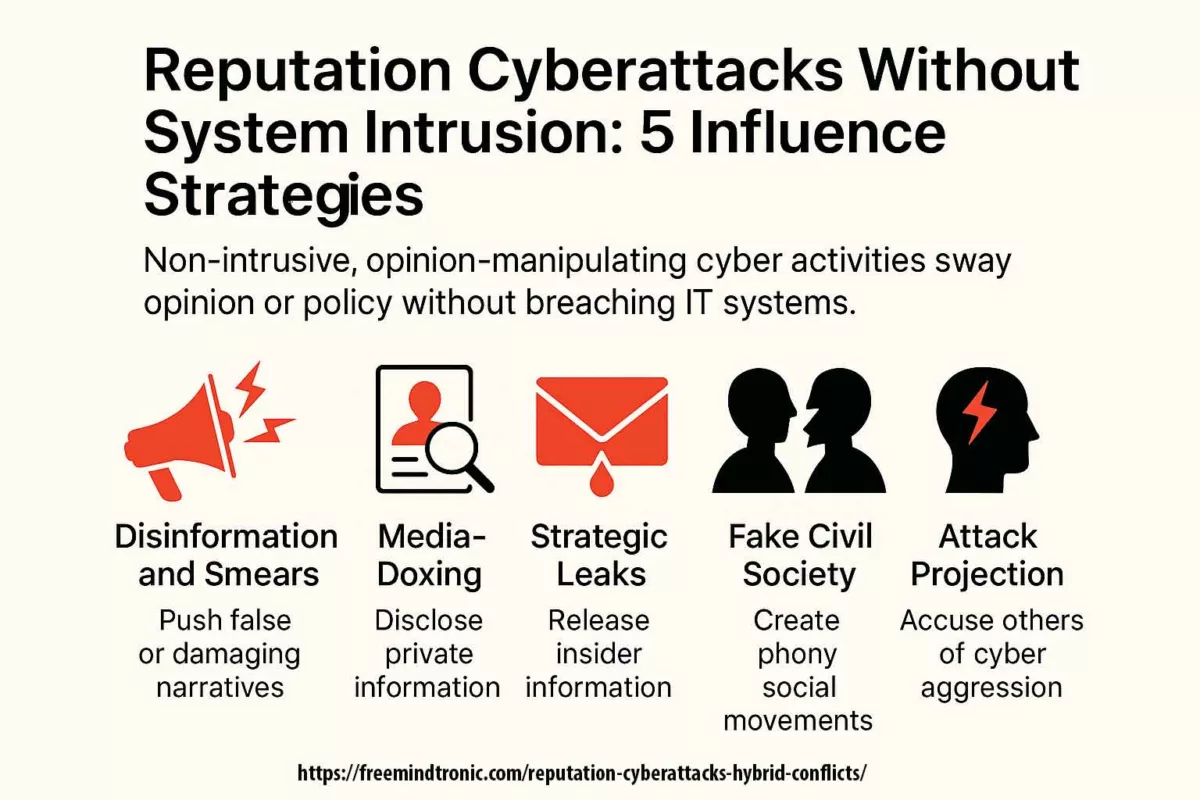
Timeline of Geopolitical Triggers and Corresponding Leaks
This sovereign timeline reveals how state-sponsored leak campaigns align tactically with geopolitical milestones, transforming passive narrative exposure into calibrated instruments of reputational destabilization.
| Date | Geopolitical Trigger | Leak Activity / APT Attribution |
|---|---|---|
| 11–12 June 2025 | NATO Summit | Massive credential dump via Ghostwriter |
| 18 July 2025 | U.S.–China Trade Talks | Strategic policy leak via Mustang Panda |
| 5 September 2025 | EU–Ukraine Association Agreement | Media smear leaks via Fancy Bear |
| 2 October 2025 | U.S. Sanctions on Russia | Source code exposure via Sandworm |
| 16 November 2025 | China–India Border Standoff | Fake news spike via RedEcho |
| 8 December 2025 | G7 Foreign Ministers’ Meeting | Diplomatic email leak via APT31 |
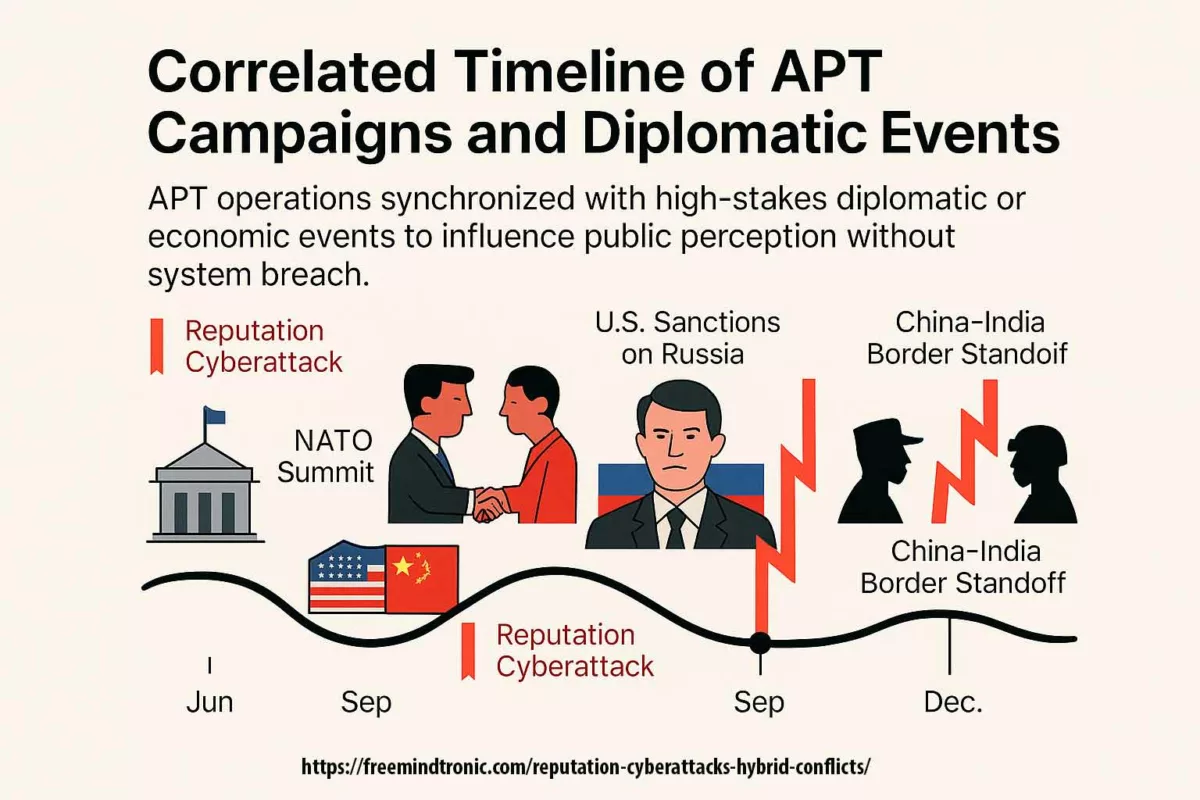
These APTs combine stealth, timing, and plausible deniability to weaponize trust decay. Their toolkit includes mobile clone propagation, certificate revocation simulation, and adversarial AI-driven content generation.
Medium Signals:
- Reactivation of domains previously linked to APT41 and APT36
- Spam waves targeting sectors previously affected (e.g., eSIM, military)
- Cross-platform narrative amplification combining Telegram, deepfakes, and dark web leaks

Geopolitical Embedding
Reputation cyberattacks are rarely isolated actions. They are often embedded within broader geopolitical manoeuvers, aligned with strategic objectives of national influence, dissuasion, or economic disruption. Below are detailed illustrations of how states integrate reputation-based cyber operations within their doctrine of influence.
🇷🇺 Russia – Narrative Sabotage and Attribution Management
APT28 and APT29 operate as complementary arms of Russian strategic disinformation. APT28 performs media amplification and tactical leaks, while APT29 infiltrates strategic diplomatic channels. Both benefit from GRU and SVR coordination, with plausible denial and a focus on exploiting trust asymmetries within European security frameworks.
🇨🇳 China – Espionage Hybridization and Runtime Subversion
APT41 is a paradigm of China’s fusion between state-sponsored espionage and monetized cybercrime. Their use of eSIM runtime abuse and compromised SM-DP+ provisioning chains illustrates a shift from direct intrusion to sovereignty degradation via runtime narrative manipulation. The Ministry of State Security provides structural protection and strategic targeting objectives.
🇰🇵 North Korea – Financial Subversion and Mobile Identity Hijacking
Lazarus Group (APT38) leverages breaches to undermine trust in certified systems. By targeting crypto wallets, blockchain nodes, and mobile identity providers, they transform technical compromise into economic destabilization narratives. These attacks often coincide with international sanctions debates or military exercises, and are directed by the Reconnaissance General Bureau (RGB).
🇵🇰 Pakistan – Military Psychological Pressure on India
APT36 deploys persistent mobile malware and SIM/eSIM spoofing against Indian military actors. These attacks are not solely technical; they aim to discredit Indian defense systems and pressure procurement diplomacy. The Inter-Services Intelligence (ISI) integrates these cyber tactics within regional destabilization agendas.
🇻🇳 Vietnam – Political Control via Telecom Targeting
OceanLotus (APT32) focuses on dissidents, journalists, and telecom infrastructure across ASEAN. Their aim is to dilute external perceptions of Vietnamese governance through discreet leaks and selective disclosure of surveillance capabilities. The Ministry of Public Security provides operational coverage and mission framing.
All of these actors embed their reputation attacks within state-approved strategic cycles. Cyberwarfare thus becomes an extension of diplomacy by other means—targeting trust, not terrain.
Sovereign Countermeasures
Defending against reputation cyberattacks requires more than perimeter security. Sovereign actors must combine cryptographic integrity enforcement, dynamic runtime assurance, and narrative discipline. Reputation attacks flourish in ambiguity—effective defense mechanisms must therefore be verifiable, attestable, and visible to the strategic environment.
Freemindtronic’s PassCypher NFC HSM / HSM PGP and DataShielder NFC HSM / HSM PGP exemplify sovereign countermeasures in action. Their air‑gapped hardware ensures that integrity attestations and encryption proofs are generated and verified at runtime—securely, transparently, and independently from compromised infrastructure.
Out-of-Band Attestation with NFC HSM
Architectures based on NFC HSMs (Hardware Security Modules) enable offline cryptographic proof of integrity and identity. These devices remain isolated from network vectors and can confirm the non-compromise of key credentials or components, even post-incident. Freemindtronic’s PassCypher NFC HSM, PassCypher HSM PGP, DataShielder NFC HSM and Datashielder HSM PGP technologies patented exemplify this paradigm.
Real-Time Message Provenance Control
DataShielder NFC HSM Auth et DataShielder NFC HSM M-Auth chiffrent toutes les communications par défaut, sur n’importe quel canal, à l’aide de clés matérielles souveraines qui ne peuvent pas être clonées, copiées ou extraites. Ce paradigme offre :
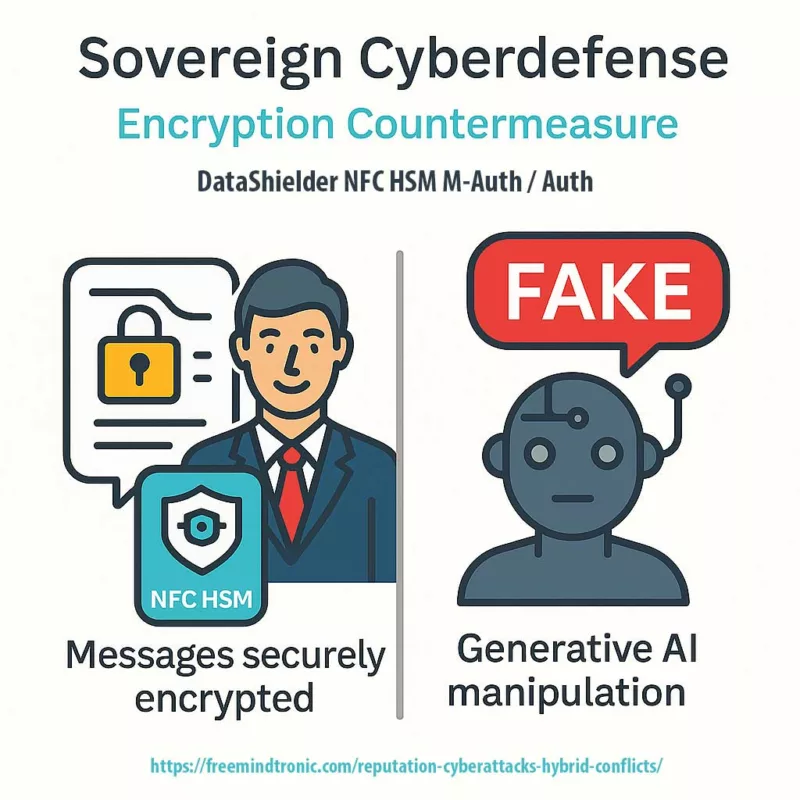
NFC HSM encryption draws a definitive boundary between authentic messages and fabricated narratives—making AI-forged disinformation both detectable and diplomatically indefensible.
- Verified encrypted messages sharply contrast with plaintext impersonations or unverifiable sources.
- Default encryption affirms authorship and message integrity without delay or user intervention.
- Falsehood becomes inherently visible, dismantling the ambiguity required for narrative manipulation.
This architecture enforces trust visibility by default—even across untrusted or compromised platforms—transforming every encrypted message into a sovereign proof of authenticity and every anomaly into a potential reputational alert.
Dynamic Certification & Runtime Audit
Static certification loses relevance once a component enters operational use. Reputation attacks exploit this gap by suggesting failure where none exists. Runtime certification performs real-time behavioural analysis, issuing updated trust vectors under sovereign control. Combined with policy-based revocation, this hardens narrative resilience.
Strategic Narrative Control
State entities and critical industries must adopt coherent, pre-structured public response strategies. The absence of technical breach must be communicated with authority and technical grounding. Naval Group’s qualified denial following its 2025 reputation leak demonstrates such sovereign narrative calibration under pressure.
This approach embodies dynamic certification, up to a temporal blockchain of trust. Unlike static attestations bound to deployment snapshots, sovereign systems like PassCypher NFC HSM and DataShielder NFC HSM perform ongoing behavioral evaluation—logging and cryptographically sealing runtime states.Each trust update can be timestamped, signed, and anchored in a sovereign ledger—transforming integrity into a traceable, irreversible narrative artifact. This not only preempts disinformation attempts but establishes a visible cryptographic chronicle that renders forgery diplomatically indefensible.
Sovereign cyberdefense means mastering time, integrity, and narrative. Out-of-band attestation and dynamic certification are not just security features—they are diplomatic weapons in an asymmetric reputational battlefield.
Strategic Case Illustrations
Reputation cyberattacks are no longer incidental. They are increasingly doctrinal, mirroring psyops in hybrid conflicts and weaponizing cognitive ambiguity. Below, we analyze three emblematic case studies where strategic visibility became a vulnerability—compromised not by code, but by coordinated narratives.
Morocco — CNSS Data Breach & Reputational Impact (April 2025)
- Major incident: In April 2025, Morocco’s National Social Security Fund (CNSS) experienced what is widely described as the largest cyber incident in the country’s digital history. The breach exposed personal data of approximately 2 million individuals and 500,000 enterprises, including names, national IDs, salaries, emails, and banking details. [Content verified via: moroccoworldnews.com, therecord.media, resecurity.com]
- Claimed attribution: The Algerian group JabaRoot DZ claimed responsibility, citing retaliation for an alleged breach of the APS (Algerian Press Service) account by Moroccan-linked actors.
- Technical vulnerability: The attack reportedly exploited “SureTriggers,” a WordPress module used by public services that auto-connects to Gmail, Slack, and Google APIs—identified as a likely vector in the incident.
- Collateral effects: The breach prompted temporary shutdowns of key Moroccan ministerial websites (Education, Tax), and government portals were disabled as a preventive cybersecurity measure. [Confirmed via moroccoworldnews.com]
- Institutional response: The NGO Transparency Maroc publicly criticized the lack of disclosure, urging authorities to release investigation findings and audit results to restore public confidence under data protection law 09‑08.
- Continental context: Kaspersky ranked Morocco among Africa’s top cyberattack targets, registering more than 12.6 million cyber threats in 2024, with significant increases in spyware and data exfiltration attempts.
The Moroccan breach illustrates the duality of hybrid threats: a massive technical compromise coupled with reputational erosion targeting public trust. By compromising legitimate governmental interfaces without penetrating core infrastructures, this attack typifies silent reputation warfare in a sovereign digital context.
United Kingdom — Reputation Warfare & Cyber Sabotage (2025)
- Contextual trigger: In May 2025, the UK government formally accused Russian GRU units 26165, 29155, and 74455 of coordinating cyber sabotage and influence operations targeting Western democracies, including the 2024 Paris Olympics and Ukrainian allies. The attribution was backed by the UK’s National Cyber Security Centre (NCSC). [gov.uk — Official Statement]
- Narrative dimension: Public attribution functions as a geopolitical signaling strategy—reasserting institutional legitimacy while projecting adversarial intent within a hybrid warfare doctrine.
- Institutional framing: The UK’s NCSC framed the attacks as hybrid campaigns combining technical compromise, reputational disruption, and online disinformation vectors. [NCSC Report]
The UK case underscores how naming threat actors publicly becomes a sovereign narrative tool—transforming attribution from defensive posture into reputational counterstrike within hybrid strategic doctrine.
Australia & New Zealand — AI‑Driven Reputation Campaigns & SME Disruption (2025)
- Threat escalation: In its July 2025 cyber threat bulletin, CyberCX raised the national threat level from “low” to “moderate” due to increased attacks by pro‑Russia and pro‑Iran hacktivists targeting SMEs and trust anchors. [CyberCX Report]
- AI impersonation cases: The Australian Information Commissioner reported a rise in deepfake voice-based impersonation (“vishing”) affecting brands like Qantas, prompting enhanced institutional controls. [OAIC Notifiable Data Breaches Report]
- Asymmetric reputational vectors: These campaigns leverage low-cost, high-impact impersonation to seed public distrust—especially effective when targeting service-based institutions with high emotional value.
In Australia and New Zealand, deepfake-enabled vishing attacks exemplify the evolution of hybrid threats—where brand trust, rather than infrastructure resilience, becomes the primary vector of reputational compromise.
Côte d’Ivoire — Symbolic Rise in Targeted Attacks (2024–2025)
- Threat profile: In 2024, Côte d’Ivoire recorded 7.5 million cyberattack attempts, including 60 000 identity theft attempts targeting civilian services, military infrastructures, electoral registries, and digital payment platforms.
- Targets: Military, electoral systems, and digital payment systems—underscoring both technical and narrative-driven attack vectors.
- Electoral context (2025): Ahead of the October presidential election, major opposition figures—including Tidjane Thiam, Laurent Gbagbo, Charles Blé Goudé, and Guillaume Soro—were excluded from the final candidate list published on 4 June 2025.
- List finality: The Independent Electoral Commission (CEI), led by Coulibaly‑Kuibiert Ibrahime, announced no further revision of the electoral register would occur before the vote..
- Narrative risk vector: The legal exclusion combined with a fixed submission window (July 25–August 26) constructs a narrow, information‑scarce environment—ideal for reputation attacks via bogus leaks, document falsification, or spoofed portals.
- Strategic interpretation: The limited electoral inclusivity and rigid timelines magnify potential narrative manipulation by actors seeking to simulate fraud or institutional incapacity.
- Sources: Reuters reports (June 4, 2025 – candidate exclusions) ; CEI confirmation of no further register revision :content.
In Côte d’Ivoire, structural cyber intrusions in 2024 and systemic electoral restrictions in 2025 converge into a hybrid threat environment: narrative ambiguity becomes a strategic tool, allowing reputation-based operations to undermine institutional credibility without requiring technical compromise.
AFJOC — Coordinated Regional Cyber Defense (Africa, 2025)
- Continental response: INTERPOL’s 2025 African Cyberthreat Report calls for regional coordination via AFJOC (Africa Joint Operation against Cybercrime).
- Threat evolution: AI-driven fraud, ransomware, and cybercrime-as-a-service dominating the threat landscape.
- Strategic implication: Highlights the necessity of sovereign runtime attestation and regional policy synchronization.
- Source: INTERPOL Africa Cyber Report 2025
AFJOC exemplifies a pan-African response to hybrid cyber threats—moving beyond technical patchwork to coordinated defense governance. Its operational scope highlights runtime integrity as a sovereign imperative.
Naval Group — Strategic Exposure via Reputation Leak
- Modus operandi: “Neferpitou” publishes 13 GB of allegedly internal data, claims 1 TB tied to Naval CMS systems, coinciding with high-level Indo-Pacific negotiations.
- Sovereign framing: Naval Group dismisses technical breach, insists on reputational targeting.
- Narrative vulnerability: Ambiguous provenance (possible reuse of Thales 2022 breach), lack of forensic certitude fuels speculation and diplomatic pressure.
- Systemic insight: CMS systems’ visibility within defense industry increases attack surface despite zero intrusion.
Naval Group’s incident shows how reputation can be decoupled from system security—exposure of industrial branding alone suffices to pressure negotiations, irrespective of intrusion evidence.
Dassault Rafale — Disinformation Post-Skirmish and Trust Erosion
- Tactic: Synthetic loss narratives post-Operation Sindoor. Gameplay footage (ARMA 3), AI-enhanced visuals, and bot networks flood social media.
- Strategic intent: Shift procurement trust toward Chinese J-10C alternatives. Undermine India-France defense collaboration.
- Corporate response: Dassault CEO publicly debunks losses; Indian MoD affirms Rafale superiority.
- Attack vector: Exploits latency in real-world combat validation versus immediate online simulation. Tempo differential becomes narrative leverage.
Dassault’s case highlights digital asymmetry: speed of synthetic disinformation outpaces real-time refutation. Trust erosion occurs before fact-checking stabilizes perceptions.
Kigen eSIM — Certified Component, Runtime Failure, Sovereign Breach
- Flawed certification chain: Java Card vulnerability in GSMA-certified Kigen eUICC enables runtime extraction of cryptographic keys and profiles.
- Collateral impact: >2 billion devices vulnerable across consumer, industrial, and automotive sectors.
- Strategic blind spots: TS.48 test profile lacks runtime attestation, no revocation mechanism, no post-deployment control layer.
- Geopolitical exploitation: APT41 and Lazarus repurpose cloned eSIM profiles for state-level impersonation and tracking.
- Sovereign countermeasure: NFC HSM runtime attestation proposed to separate dynamic trust from static certification.
Kigen illustrates how certification without runtime guarantees collapses in sovereign threat contexts. Attestation must be dynamic, portable, and verifiable—independent of issuing authority.
Israel–Iran — Predatory Sparrow vs Deepfake Sabotage
- Israeli offensive: In June 2025, Predatory Sparrow disrupted the digital services of Iran’s Sepah Bank, rendering customer operations temporarily inoperative.
- Iranian retaliation: Fake alerts, phishing campaigns, and deepfake operations aimed at creating panic.
- Narrative warfare: Over 60 pro-Iranian hacktivist groups coordinated attacks to simulate financial collapse and fuel unrest.
- Source: DISA escalation report
This conflict pair showcases dual-track warfare: targeted digital disruption of critical banking infrastructure, countered by synthetic information chaos designed to manipulate public perception and incite instability.
Intermediate & Legacy Cases
Recent campaigns reveal a growing sophistication in reputation cyberattacks. However, foundational cases from previous years still shape today’s threat landscape. These legacy incidents actively illustrate persistent vectors—ransomware amplification, unverifiable supply chain compromises, and narrative manipulation—that inform current defense strategies.
Change Healthcare Ransomware Attack (USA, 2024)
- Attack type: Ransomware combined with political reputational sabotage
- Immediate impact: Threat actors exposed over 100 million sensitive medical records, causing $2.9 billion in direct losses and paralyzing healthcare payments for weeks
- Narrative shift: The breach transformed into a media symbol of systemic vulnerability in U.S. healthcare infrastructure, influencing regulatory debates
- Source: U.S. HHS official statement
SolarWinds Software Supply Chain Breach (USA, 2020)
- Attack type: Covert infiltration through compromised update mechanism
- Systemic breach: APT29 infiltrated U.S. federal networks, including the Pentagon and Treasury, sparking concerns over supply chain certification trust
- Strategic consequence: Cybersecurity experts advocated for zero-trust architectures and verified software provenance policies
- Source: CISA breach alert
Colonial Pipeline Critical Infrastructure Sabotage (USA, 2021)
- Attack type: Ransomware disrupting fuel distribution logistics
- Operational impact: The attack triggered massive fuel shortages across the U.S. East Coast, igniting panic buying and public anxiety
- Narrative angle: Policymakers used the incident to challenge America’s energy independence and highlight outdated infrastructure protections
- Source: FBI attribution report
Estée Lauder Cloud Security Exposure (2020)
- Incident type: Public cloud misconfiguration without encryption
- Data disclosed: 440 million log entries surfaced online; none classified as sensitive but amplified for reputational damage
- Narrative exploitation: Media outlets reframed the incident as emblematic of weak corporate data governance, despite its low-risk technical scope
- Source: ZDNet technical analysis
GhostNet Global Cyber Espionage Campaign (2009)
- Origin point: China
- Infiltration method: Long-range surveillance across embassies, ministries, and NGOs in over 100 countries
- Reputational effect: The attack revealed the reputational power of invisible espionage and framed global cyber defense urgency
- Source: Archived GhostNet investigation
Signal Clone Breach – TeleMessage Spoofing Campaign (2025)
- Vector exploited: Brand mimicry and codebase confusion via Signal clone
- Security breach: Attackers intercepted communications of diplomats and journalists, casting widespread doubt on secure messaging apps
- Source: Freemindtronic breach analysis
Change Healthcare — Systemic Paralysis via Ransomware
- Incident: In February 2024, the ransomware group Alphv/BlackCat infiltrated Change Healthcare, disrupting critical healthcare operations across the United States.
- Impact: Over 100 million medical records exposed, halting prescription services and claims processing nationwide.
- Reputational fallout: The American Hospital Association labeled it the most impactful cyber incident in U.S. health system history.
- Aftermath: A $22 million ransom was paid; projected losses reached $2.9 billion.
Snowflake Cloud Breach — Cascading Reputation Collapse
- Event: In April 2024, leaked credentials enabled the Scattered Spider group to access customer environments hosted by Snowflake.
- Affected parties: AT&T (70M users), Ticketmaster (560M records), Santander Bank.
- Strategic gap: Several Snowflake tenants had no multi-factor authentication enabled, revealing governance blind spots.
- Reputational impact: The breach questioned shared responsibility models and trust in cloud-native zero-trust architectures.
Salt Typhoon APT — Metadata Espionage and Political Signal Leakage
- Threat actor: Salt Typhoon (Chinese APT), targeting U.S. telecoms (AT&T, Verizon).
- Tactics: Passive collection of call metadata and text records involving politicians such as Donald Trump and JD Vance.
- Objective: Narrative manipulation through reputational subversion and diplomatic misattribution.
- Official coverage: Documented by U.S. security agencies, cited in Congressional Research Service report IF12798.
Legacy is not just history; it’s doctrine.
Common Features & Strategic Objectives
Despite their varied execution, reputation cyberattacks exhibit a set of common features that define their logic, timing, and psychological impact. Recognizing these patterns allows sovereign actors and industrial targets to anticipate narrative shaping attempts and embed active countermeasures within their digital resilience strategy.
Common Features
- Non-technical vectors: Some attacks do not involve system compromise—only plausible disinformation or brand usurpation.
- Perception-centric: They aim at clients, partners, regulators—not infrastructure.
- Strategic timing: Aligned with high-value geopolitical, economic, or regulatory events.
- Narrative instruments: Use of Telegram, forums, deepfakes, AI-generated content, and synthetic media.
- Attribution opacity: Exploits legal and technical gaps in global cyber governance.
Strategic Objectives
- Erode trust in sovereign technologies or industrial actors
- Influence acquisition, regulation, or alliance decisions
- Create asymmetric narratives favoring the attacker
- Delay, deflect, or preempt defense procurement or certification
- Prepare cognitive terrain for future technical or diplomatic intrusion
Reputation cyberattacks blur the lines between cybersecurity, psychological operations, and diplomatic sabotage. Their prevention requires integration of threat intelligence, strategic communications, and runtime trust mechanisms.
Common Features & Strategic Objectives
Despite their varied execution, reputation cyberattacks exhibit a set of common features that define their logic, timing, and psychological impact. Recognizing these patterns allows sovereign actors and industrial targets to anticipate narrative shaping attempts and embed active countermeasures within their digital resilience strategy.
Common Features
- Non-technical vectors: Some attacks do not involve system compromise—only plausible disinformation or brand usurpation.
- Perception-centric: They aim at clients, partners, regulators—not infrastructure.
- Strategic timing: Aligned with high-value geopolitical, economic, or regulatory events.
- Narrative instruments: Use of Telegram, forums, deepfakes, AI-generated content, and synthetic media.
- Attribution opacity: Exploits legal and technical gaps in global cyber governance.

Strategic Outlook
Reputation cyberattacks are no longer peripheral threats. They operate as strategic levers in hybrid conflicts, capable of delaying negotiations, undermining certification, and shifting procurement diplomacy. These attacks are asymmetric, deniable, and narrative-driven. Their true target is sovereignty—technological, diplomatic, and communicational.
The challenge ahead is not merely one of defense, but of narrative command. States and sovereign technology providers must integrate verifiable runtime trust, narrative agility, and resilience to perception distortion. Silence is no longer neutrality; it is vulnerability.
Strong Signals:
- Coordinated leaks following high-level diplomatic statements
- Multiple unverifiable claims against certification authorities
- Escalation in deepfake dissemination tied to defense technologies
Imagine a defense consortium deploying a real-time, attested HSM-based runtime environment that logs and cryptographically proves system integrity in air-gapped mode. A leaked document emerges, claiming operational failure. Within 48 hours, the consortium publishes a verifiable attestation proving non-compromise—transforming a potential discredit into a sovereign show of digital force.
To sustain trust in the era of information warfare, sovereignty must be demonstrable—technically, legally, and narratively.
Narrative Warfare Lexicon
To fortify sovereign understanding and strategy, this lexicon outlines key concepts deployed throughout this chronicle. Each term reflects a recurring mechanism of hybrid influence in reputation-centric cyber conflicts.
Sovereign Attestation:
Verifiable proof of message origin and integrity, enforced by hardware-based cryptography and runtime sealing mechanisms.
Perception Latency:
Delay between technical compromise and public interpretation, allowing adversaries to frame or distort narratives in real-time.
Runtime Ambiguity:
Exploitation of unverified system states or certification gaps during live operation, blurring accountability boundaries.
Trusted Silence:
Intentional lack of institutional response to unverifiable leaks, contrasted by provable data integrity mechanisms.
Strategic Leakage:
Deliberate release of curated data fragments to simulate broader compromise and provoke institutional panic.
Attested Narrative Artifact:
Communication whose authenticity is cryptographically enforced and auditably traceable, independent of central validation.
Adversarial Framing:
Use of metadata, linguistic bias, or visual overlays to recontextualize legitimate content into hostile perception.
Out-of-Band Attestation (NFC HSM):
Isolated cryptographic proof of key integrity, resistant to network manipulation. These air-gapped modules independently enforce the origin and authenticity of communications.
Real-Time Integrity Proof:
Continuous sealing and audit of system states during live operation. Prevents the exploitation of momentary ambiguity or delay in narrative framing.
Dynamic Certification:
Adaptive verification mechanism that evolves with runtime behavior. Unlike static seals, it updates the trust status of components based on real-time performance and sovereign policy triggers.
Temporal Blockchain of Trust:
Time-stamped ledger of cryptographically sealed events, where each proof of integrity becomes a narrative checkpoint. This chained structure forms a verifiable, sovereign memory of truth—resilient against falsification or post-hoc reinterpretation.
Temporal Ledger of Attestation:
A chronologically ordered record of integrity proofs, allowing for verifiable reconstruction of system trust state over time. Especially useful in forensic or diplomatic contexts.
Runtime Proof Anchoring:
Technique by which runtime attestation outputs are immediately sealed and anchored in sovereign repositories, ensuring continuity and traceability of system integrity.
Distributed Sovereign Chronicle:
Federated attestation system in which multiple sovereign or institutional nodes validate and preserve cryptographic proofs of trust, forming a geopolitical ledger of resilience against coordinated narrative subversion.
Beyond This Chronicle
The anatomy of invisible cyberwars is far from complete. As sovereign digital architectures evolve, new layers of hybrid reputational threats will emerge—possibly automated, decentralized, and synthetic by design. These future vectors may combine adversarial AI, autonomous leak propagation, and real-time perception manipulation across untrusted ecosystems.
Tracking these tactics will require more than technical vigilance. It will demand:
- Runtime sovereignty: Systems must cryptographically attest their integrity in real time, independent of external validators.
- Adversarial lexicon auditing: Monitoring how language, metadata, and synthetic narratives are weaponized across platforms.
- Neutral trust anchors: Deploying hardware-based cryptographic roots that remain verifiable even in contested environments.
Freemindtronic’s work on DataShielder NFC HSM and PassCypher HSM PGP exemplifies this shift. These technologies enforce message provenance, runtime attestation, and sovereign encryption—transforming each communication into a verifiable narrative artifact.
Future chronicles will deepen these vectors through:
- Case convergence: Mapping how reputation attacks evolve across sectors, regions, and diplomatic cycles.
- Technological foresight: Anticipating how quantum-safe cryptography, AI-generated disinformation, and decentralized identity will reshape the reputational battlefield.
- Strategic simulation: Modeling sovereign response scenarios to reputational threats using attested environments and synthetic adversaries.
In the next phase, reputation defense will not be reactive—it will be declarative. Sovereignty will be demonstrated not only through infrastructure, but through narrative control, cryptographic visibility, and strategic timing.
eSIM Sovereignty Failure: Strategic Breach of Certified Mobile Identity
This Chronicle investigates the first public compromise of a GSMA-certified eSIM platform. The Kigen eUICC exploit reveals a systemic failure in runtime security, certification integrity, and sovereign oversight. This case exemplifies a broader eSIM sovereignty failure that reveals strategic gaps in certified mobile identity governance. While the technical flaw traces back to a Java Card vulnerability known since 2019, the real breach lies in the blind trust placed in certification layers without independent verification or revocation protocols. The implications reach beyond telecom security — directly into the sovereignty of digital identities.
In Digital Security ↑ Correlate this Chronicle with other sovereign threat analyses in the same editorial rubric.
Strategic Navigation Index
- Executive Summary / TL;DR
- Genesis of the Exploit: Java Card, GSMA, and Forgotten Warnings
- Technical Breakdown — Sovereign Readout of the Runtime Breach
- Geostrategic Exposure Mapping — eSIMs Across Sectors & Infrastructures
- Accountability Matrix: Researchers, Vendors, Certifiers, Regulators
- Strategic Fallout: Trust Collapse and Sovereignty at Risk
- Simjacker Revisited: Lessons from 2019 and the Road to eUICC Compromise
- Regulatory Landscape: Where NIS2, CRA and GSMA TS.48 Collide
- Industry Blind Spots: Strategic Failures to Anticipate Side-Channel Exploits
- Threat Intelligence Perspective: APT Groups & Espionage Tradecraft with eSIMs
- Runtime Threats in Certified eSIMs: Four Strategic Blind Spots
- Cryptographic Fragility in eSIM Implementations
- Sovereignty Scorecard: Evaluation Framework for National eSIM Policy
- Zero Trust eSIM: Blueprint for Post-Certification Architectures
- Weak Signals Identified
- eSIM on External Storage?
- Misconceptions & Design Constraints
- Countermeasures Against Certified eSIM Sovereignty Threats
- Rethinking eSIM Governance with Sovereign NFC HSM
- Use Case: From EviCall to EviSIM – Resilience via DataShielder NFC HSM Defense
- Infographic: Anatomy of SM-DP+/SM-DS Flow and Attack Vectors
- What We Didn’t Cover
- Certification alone cannot ensure runtime integrity — post-certification attacks exploit logic and memory states invisible to audits.
- Java Card runtime remains unaudited post-deployment — making every certified eSIM a potential time-bomb under stress or glitching conditions.
- Sovereign HSMs externalize trust and isolate secrets — offering a runtime enclave immune to provisioning tampering and OTA subversion.
- Mobile identity governance must embrace revocability and field attestation — static certification chains are insufficient to counter dynamic threat models.
- SM-DP+ infrastructures are inherently opaque — attackers can exploit provisioning without triggering compliance violations.
- Runtime verification is the new perimeter — only sovereign architectures with live integrity checks can enforce trust beyond installation time.
- DataShielder NFC HSM Defense exemplifies this shift — enabling secure messaging (SMS, MMS, RCS) through EviCall, with runtime asymmetric encryption enforced outside the eSIM trust perimeter.
About the Author – Jacques Gascuel, inventor of internationally patented encryption technologies and founder of Freemindtronic Andorra, is a pioneer in sovereign cybersecurity. In this Digital Security Chronicle, he deciphers the strategic breach in certified eSIMs and outlines a sovereign resilience framework based on NFC HSMs and off-host credential governance.
Genesis of the Exploit: Java Card, GSMA, and Forgotten Warnings
The breach of the Kigen eSIM platform did not occur in a vacuum. It stems from a critical vulnerability in Java Card technology—an issue first flagged by independent researchers as early as 2019. The flaw, related to runtime memory leaks and side-channel leakage vectors, remained dormant in certified environments due to insufficient post-certification scrutiny. Despite multiple advisories, the lack of a mandatory patching protocol or revocation mechanism allowed this vulnerability to persist across millions of devices.
Moreover, the GSMA certification process—intended as a guarantee of cryptographic integrity—failed to account for the nuanced runtime behavior of Java Card applets. The systemic gap lay in the absence of a sovereign certification follow-up system, especially after the issuance of eUICC certificates. This blind spot rendered the entire certification stack vulnerable to exploitation once attackers identified how to manipulate instruction flow during remote profile installation. This oversight directly contributed to a certified eSIM sovereignty failure, where legacy vulnerabilities persisted unchecked within supposedly trusted systems.
Far from being a one-off incident, this exploit exemplifies a broader systemic weakness: reliance on opaque certification pipelines without dynamic runtime assurance. Sovereign cybersecurity demands continuous attestation and verifiability—not static compliance artifacts.
Technical Breakdown — Sovereign Readout of the Runtime Breach
The attack against Kigen’s certified eUICC exploited a well-documented weakness in the Java Card runtime — specifically, the handling of memory and instruction flow during the loading of remote applets. By leveraging a side-channel attack chain, the adversary extracted sensitive keys and operational data without triggering standard telemetry or fault logs.
The exploit unfolded in three phases: reconnaissance, fault injection, and controlled memory leakage. During the reconnaissance phase, the attacker mapped the card’s internal logic by issuing benign APDU commands and analyzing response times. In the second phase, glitching techniques—specifically voltage and clock manipulation—were used to bypass secure channel initialization, exploiting fault conditions to manipulate control flow. Finally, the attacker used crafted APDUs with offset variations to read residual data from the heap, effectively exfiltrating cryptographic material and provisioning metadata.
Notably, this breach occurred without violating the certified applet interface, highlighting that even formally verified interfaces are insufficient if the runtime layer remains exposed. Furthermore, the absence of post-deployment attestation mechanisms meant that the rogue behavior remained invisible to MNOs and SM-DP+/SM-DS operators. This scenario encapsulates a textbook case of eSIM sovereignty failure rooted in runtime opacity and post-certification blindness.
Independent formal verification efforts — notably using the 5GReasoner framework — have exposed critical vulnerabilities in the M2M Remote SIM Provisioning (RSP) protocol. These include race conditions, identity binding flaws, and session takeover possibilities within GSMA-compliant SM-DP+/SM-DS architectures. These weaknesses, documented since 2020, remain unaddressed in current certification enforcement, further confirming the runtime sovereignty failure at the core of eUICC design.

This runtime breach demonstrates how a certified, production-grade eSIM platform can be reduced to an opaque black box — exploitable at the lowest level unless sovereignty-driven safeguards like hardware-isolated HSMs and field attestation protocols are enforced.
Geostrategic Exposure Mapping — eSIMs Across Sectors & Infrastructures
The eSIM ecosystem is deeply embedded in global supply chains, spanning sectors from critical infrastructure and defense to consumer electronics. The vulnerability exploited in the Kigen platform potentially affects any system that relies on remote provisioning and over-the-air profile updates. This includes government-issued IDs, mobile banking tokens, connected vehicles, and secure IoT modules.
Regions with centralized eID frameworks—such as the EU’s eIDAS or India’s Aadhaar-linked telecom systems—face compounded risks. Once a certified eSIM stack is compromised, attackers can clone, redirect, or exfiltrate digital identities at scale. In NATO and Five Eyes countries, the concern escalates as eSIM modules are increasingly integrated into secure communications for field units, diplomatic missions, and critical infrastructure.
What emerges is a geostrategic mosaic of exposure, where technical supply chains intersect with geopolitical fault lines. Sovereign actors must now assume that hostile powers could exploit trusted certification systems to stage covert identity subversion or persistent access operations.
eSIMs are no longer neutral components — they represent a geostrategic vector of exposure, linking runtime compromise to sovereign identity manipulation across sectors and jurisdictions.
Accountability Matrix in the Certified eSIM Compromise
The Kigen eSIM compromise is emblematic of a wider eSIM sovereignty failure, where no actor assumes full responsibility for runtime trust. While independent researchers were first to identify the Java Card side-channel risk, their findings remained largely unheeded by certification bodies and runtime vendors. The vulnerability was flagged, published, but never operationally integrated into GSMA risk models.
Vendors such as Java Card implementers and eUICC manufacturers bear the technical burden, yet they operate within a certification-driven market that disincentivizes structural transparency. Once certified, platforms are considered immutable and secure—despite lacking mechanisms for sovereign runtime inspection or patch propagation.
Certification authorities like GSMA and EMVCo facilitated compliance at the interface level but failed to mandate continuous runtime monitoring or exploit simulation testing post-certification. National regulators, for their part, lacked either the mandate or the visibility to detect deviations from expected behavior within certified stacks.
This fragmented landscape enables plausible deniability and responsibility deferral—a dangerous precedent in sovereign digital infrastructure.

A sovereign accountability matrix demands unified oversight from research disclosure to runtime attestation—bridging the gap between technical detection, certification governance, and regulatory enforcement.
Strategic Fallout of the eSIM Sovereignty Failure
The breach of a certified eUICC signals not merely a technical failure but a collapse of the trust architecture that underpins sovereign digital identity. In delegating assurance to private certification consortia without enforceable runtime verifiability, states have inadvertently created blind zones in their own critical infrastructure.
Sovereignty risk arises when the integrity of mobile credentials—used in eID, eHealth, fintech, and defense—is no longer auditable nor revokeable in real time. The absence of field attestation protocols and HSM-enforced compartmentalization means that cloned or tampered identities can propagate undetected within systems presumed secure.
For nations operating under NIS2 or with national cryptographic governance frameworks, the Kigen incident necessitates a strategic re-evaluation: Are certification schemes serving national interests, or introducing dependencies on opaque, offshore processes? The breach demonstrates that eSIMs, while micro-scale in hardware, represent macro-scale vectors for influence, surveillance, and destabilization.
⮞ Summary
Sovereignty in the digital era hinges on runtime verifiability and trusted compartmentalization—qualities absent from current eSIM governance models relying solely on certification status.
Regulatory Landscape: Where NIS2, CRA and GSMA TS.48 Collide
The breach of Kigen’s certified eSIM platform exposes a legal grey zone where sovereignty, industry self-regulation, and supranational cybersecurity policies intersect — and often diverge. At the heart of the conflict lies GSMA TS.48, the industry-led eUICC certification standard, which lacks post-certification enforcement, runtime telemetry mandates, or revocation procedures for compromised components.
In contrast, the European Union’s NIS2 Directive and the Cyber Resilience Act (CRA) introduce legal obligations for continuous risk management, vulnerability disclosure, and secure-by-design principles. These frameworks implicitly contradict the current GSMA model by requiring runtime assurance and traceability across critical infrastructures and ICT supply chains. NIS2 classifies telecom as a key sector, requiring incident notification and risk mitigation, yet most MNOs remain blind to eSIM runtime behavior due to opaque OEM integrations.
Moreover, the CRA will enforce mandatory vulnerability management at the firmware and software levels — which includes eSIM middleware and applets. This raises the question: can GSMA continue to certify eUICC stacks under TS.48 without runtime transparency, in jurisdictions bound by NIS2 and CRA?
The disconnect becomes critical when state actors deploy certified eSIMs in sensitive roles — such as in border security, defense-grade communication, or government-issued mobile ID tokens. Sovereign nations adopting EU regulations must reconcile the legal obligations of NIS2/CRA with their technical reliance on private certification frameworks from entities like the GSMA — a non-state body.
For full reference:
– [NIS2 Directive overview – europa.eu](https://digital-strategy.ec.europa.eu/en/policies/nis2-directive)
– [Cyber Resilience Act proposal – europa.eu](https://digital-strategy.ec.europa.eu/en/library/cyber-resilience-act)
⮞ Summary
Sovereign cybersecurity is now a regulatory imperative. The disconnect between GSMA TS.48 certification and the mandatory compliance regimes under NIS2 and CRA exposes states to unmanaged legal and operational risks.
Industry Blind Spots: Strategic Failures to Anticipate Side-Channel Exploits
This strategic neglect forms a recurring pattern of eSIM sovereignty failure, where runtime threats are underestimated across certified ecosystems.
The Kigen eSIM breach illustrates a critical blind spot in the mobile security industry: the persistent underestimation of physical-layer and side-channel threats in certified environments. While certification schemes such as GSMA’s TS.48 emphasize interface compliance and cryptographic validation, they omit runtime behavioral assurance, particularly under fault or stress conditions — the exact domain exploited in the attack.
Despite the public disclosure of Java Card side-channel vulnerabilities by researchers since 2017 — including multiple presentations at events like CHES, Black Hat, and the TCG’s cybersecurity forums — the mobile industry maintained an implicit assumption that certified eUICCs were impervious to practical exploitation. This assumption neglected adversary models capable of leveraging voltage glitching, electromagnetic fault injection (EMFI), or response time correlation — all proven viable in prior smartcard-class attacks. Such assumptions are emblematic of a systemic eSIM sovereignty failure — not merely of vendors, but of governance models.
Furthermore, vendors often treat Secure Element and Trusted Execution Environment vulnerabilities as theoretical or “out-of-scope” for telecom threat modeling, assuming the remote nature of provisioning offers sufficient insulation. This assumption collapses in scenarios involving pre-deployment tampering, rogue MNOs, or insider threats in SM-DP+/SM-DS infrastructure.
The most alarming aspect lies in the lack of mandatory runtime telemetry and attestation mechanisms. Even after a successful breach, neither MNOs nor regulators can independently detect anomalies in eSIM behavior unless external post-mortem forensics are conducted — often too late.
Strategic negligence toward known side-channel vectors within the eSIM certification ecosystem leaves billions of devices exposed to sovereign-grade adversaries. Runtime threats are no longer theoretical — they are operational realities requiring structural reform.
Threat Intelligence Perspective: APT Groups & Espionage Tradecraft with eSIMs
The eSIM runtime compromise represents a significant shift in the threat landscape observed by national cyber agencies and private threat intelligence units. Advanced Persistent Threat (APT) groups, particularly those linked to state-sponsored cyber espionage, have long sought covert vectors for persistent access and identity subversion. The Kigen breach effectively introduces a new toolset into their arsenal: certified cryptographic devices that can be remotely manipulated without detection.
Historically, APT campaigns targeting telecom infrastructures — such as APT10’s exploitation of managed service providers or APT41’s targeting of mobile operators — prioritized control of metadata and SMS interception. With eSIM runtime attacks, the target expands to full identity extraction and cloning at the cryptographic layer. This enables operations such as device impersonation, interception of secure apps (banking, authentication), and insertion of backdoored profiles via compromised SM-DP+ servers.
Indicators of compromise remain elusive, as current telecom threat monitoring systems do not inspect profile integrity post-installation. Moreover, the GSMA Security Accreditation Scheme (SAS) for SM-DP+/SM-DS actors does not mandate field-level telemetry capable of detecting side-channel-derived manipulations.
Official source reference: [https://www.enisa.europa.eu/topics/csirt-cert-services/national-csirt-network](https://www.enisa.europa.eu/topics/csirt-cert-services/national-csirt-network)
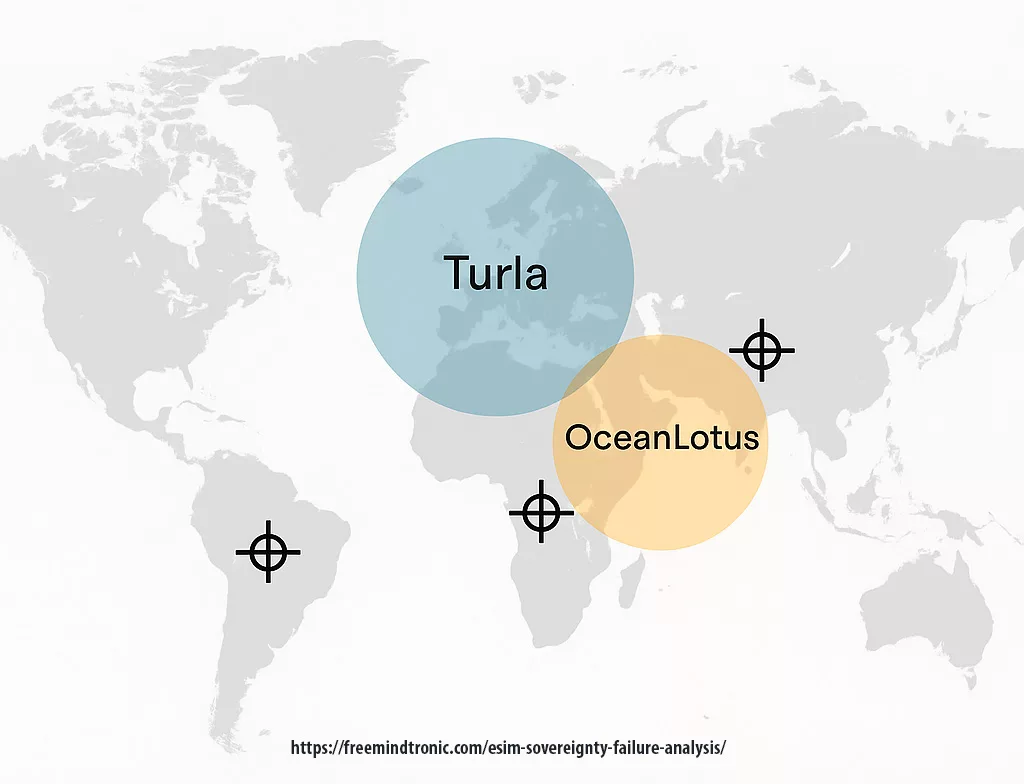
As geopolitical tensions rise, threat actors with intelligence mandates are increasingly incentivized to exploit such blind spots — not merely for data theft, but for strategic impersonation and operational misdirection. eSIMs thus shift from neutral identity containers to offensive espionage tools — a hallmark of systemic eSIM sovereignty failure exploited by nation-state actors.
APT Groups Actively Targeting eSIM Runtime and Provisioning Flows
This table summarizes state-linked threat actors whose past campaigns show both interest and capability to exploit mobile identity infrastructure, particularly through eSIM runtime and SM-DP+ provisioning chains.
| APT Group | Origin | Known Targets | eSIM Relevance |
|---|---|---|---|
| APT10 (Stone Panda) | China | MSPs, telecom, cloud | Management infra compromise ideal for SM-DP+ |
| APT41 (Double Dragon) | China | Telecom, IoT, eSIM | Hybrid espionage/cybercrime — runtime abuse observed |
| APT29 (Cozy Bear) | Russia | Govs, think tanks | Stealth ops, focus on digital ID compromise |
| APT28 (Fancy Bear) | Russia | Defense, NATO, Europe | Critical infrastructure targeting, eSIM plausible vector |
| OceanLotus (APT32) | Vietnam | Journalists, dissidents, telecom | Mobile surveillance, eSIM backdoor usage |
| Turla (Venomous Bear) | Russia | Embassies, gov networks | Satellite C2 usage — ideal for stealthy eSIM pivot |
| APT36 (also known as Transparent T., per official threat intelligence nomenclature) / APT36 Spear Phishing |
Pakistan | Indian military, mobile users | Android malware, known SIM/eSIM targeting |
| Lazarus Group (APT38) | North Korea | Finance, crypto, mobile | Certificate & mobile identity attacks observed |
These APT groups are technically capable and geopolitically incentivized to exploit the runtime opacity and provisioning blind spots inherent in GSMA-certified eSIM infrastructures. Their known operations intersect directly with critical layers of mobile identity management — from certificate chain manipulation to RSP flow infiltration.
The breach transforms eSIMs into offensive espionage platforms — enabling cryptographic-level impersonation, persistent access, and sovereign identity hijacking by state-grade actors.
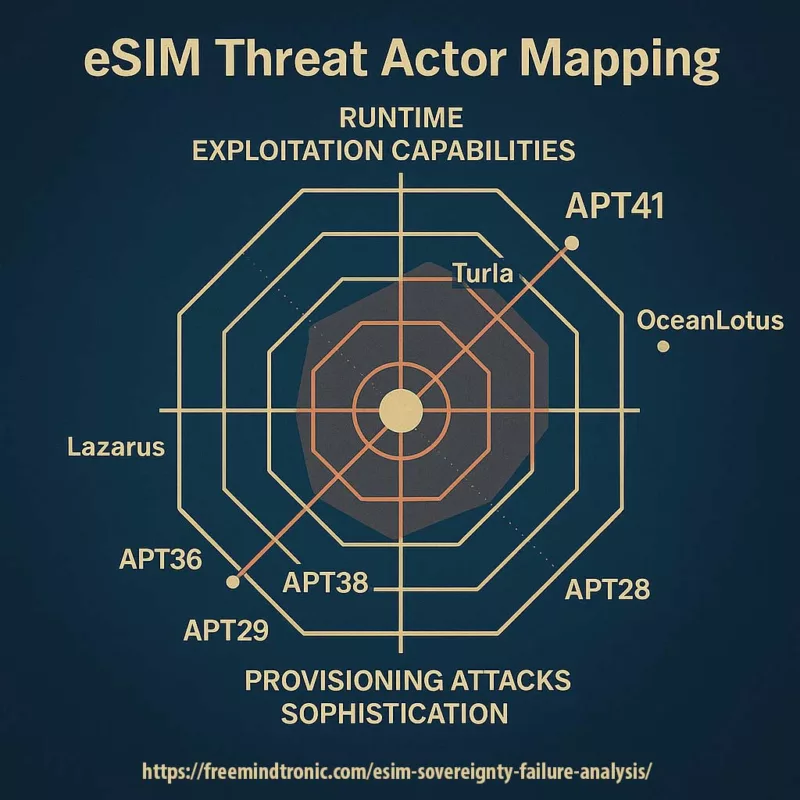
✦ Weak Signals — Emerging Risks in eSIM Threat Intelligence
- Academic warnings unaddressed: Security Explorations has published detailed technical reports since 2021 highlighting runtime vulnerabilities in certified eSIM stacks — including memory disclosure flaws and invalid certificate acceptance.
- Zero adaptation by GSMA: Despite side-channel research such as the 2025 Kigen incident, GSMA certification flows (SGP.23-3 v3.1) remain focused on pre-deployment validation, omitting any runtime telemetry or post-certification threat model adaptation.
- Toolkits enabling telecom-layer APTs: MITRE’s Mobile ATT&CK matrix and Google Cloud’s APT dashboards both reflect increased use of provisioning subversion and SIM lifecycle manipulation — tactics consistent with state-driven campaigns but still untracked by telecom operators’ detection ecosystems.
- Blind compliance perimeter: The GSMA SAS does not require anomaly detection during SM-DP+/eUICC interaction sessions — a major blind spot that persists despite known vectorization paths exploited by actors like OceanLotus and Turla.
Strategic foresight: These signals collectively indicate a shift from purely technical vulnerabilities to systemic governance lapses. Sovereign runtime verification and on-device anomaly tracing are likely to become baseline requirements in future compliance frameworks, possibly triggered by regulatory pressure under CRA and NIS2 domains.
Runtime Threats in Certified eSIMs: Four Strategic Blind Spots
While geopolitical campaigns exploit the larger telecom attack surface, the technical fragility lies within the certified eSIMs themselves. This infographic categorizes the four strategic runtime threats exposed during the breach of the Kigen platform: injection threats, integrity bypass, platform subversion, and post-certification vulnerabilities.

These threats bypass formal certification layers and exploit dynamic gaps in memory isolation, applet injection logic, and insufficient field telemetry — vulnerabilities that persist across certified stacks lacking sovereign runtime attestation.
Certified eSIMs face four critical runtime threats that remain invisible to traditional certification: injection, bypass, subversion, and post-deployment exposure. Without sovereign runtime attestation and hardware-resilient execution, these vectors reduce certified trust to a symbolic shield.
✦ Normative Blind Spots — Regulatory Gaps in eSIM Security Frameworks
Several critical attack surfaces remain unaddressed in regulatory frameworks like CRA, NIS2, and GSMA TS.48. These include runtime behavior validation, post-certification re-attestation, and sovereign auditability of cryptographic execution environments. The absence of mandatory entropy quality tests and secure lifecycle attestation mechanisms leaves certified stacks vulnerable to dormant threats exploitable post-deployment.
Examples of blind spots include:
- TS.48 lacks runtime memory protection enforcement.
- CRA does not cover volatile entropy regeneration failures.
- NIS2 omits sovereign runtime visibility mandates for mobile identity devices.
Cryptographic Fragility in eSIM Implementations
While eSIMs are often marketed as cryptographically secure by design, the Kigen incident exposes critical weaknesses at the implementation level. The core issue lies in the mismatch between theoretical algorithm strength and practical execution within constrained, embedded environments — particularly in Java Card-based secure elements.
The compromise demonstrated that cryptographic keys — including ECDSA and AES session material — could be exfiltrated through side-channel differentials amplified by improper memory sanitation and volatile buffer reuse. These weaknesses were neither mitigated by the applet’s formal validation nor by the certification authorities, which focus on static compliance rather than dynamic entropy or leakage resilience.
Additionally, entropy generation in some Kigen implementations relied on pseudo-random generators insufficiently seeded under certain power-reset conditions — a factor attackers exploited to reduce keyspace guessing during runtime.
Furthermore, the compromise highlights the limitations of relying solely on the GlobalPlatform SCP03 protocol for secure channel establishment. Although SCP03 ensures channel integrity, it does not defend against memory residue exploitation once the session concludes. As a result, sensitive values may remain in unprotected RAM zones accessible via glitching or crafted APDU logic.
Official reference for cryptographic side-channel standards: [https://csrc.nist.gov/publications/detail/sp/800-90b/final](https://csrc.nist.gov/publications/detail/sp/800-90b/final)
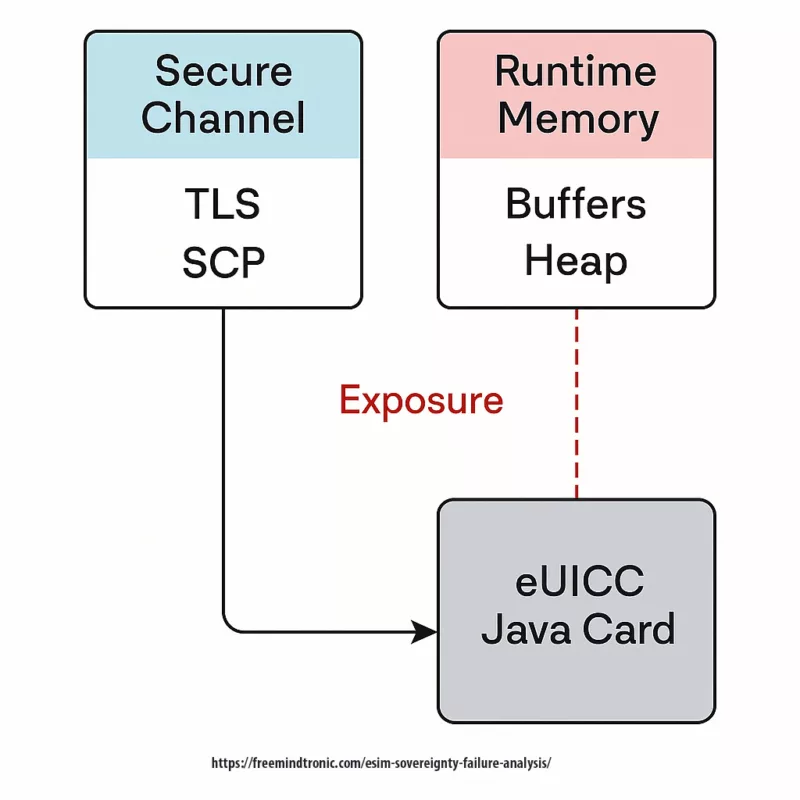
The fragility lies not in the cryptographic primitives themselves, but in the unverified assumptions about their deployment environment. Without sovereign runtime verification and hardware-hardened containers, certified eSIMs remain susceptible to low-level exfiltration despite high-level assurances.
Certified algorithms offer no immunity against weak runtime environments. Sovereign security demands continuous verification beyond algorithm compliance. This type of implementation gap directly reinforces the reality of an eSIM sovereignty failure even in certified stacks.
Sovereignty Scorecard: Evaluation Framework for National eSIM Policy
To assess the sovereign resilience of eSIM infrastructures, Freemindtronic introduces the Sovereignty Scorecard — a strategic evaluation framework that ranks national deployments across five critical dimensions: runtime integrity, credential isolation, certification independence, regulatory agility, and field attestation capabilities.
Each dimension is graded based on measurable criteria:
- Runtime Integrity — Presence of post-deployment attestation mechanisms and resistance to fault injection attacks.
- Credential Isolation — Use of off-host hardware modules (e.g., NFC HSM) to externalize secrets and eliminate on-card exposure.
- Certification Independence — Ability to validate eSIM security independently from GSMA or vendor-issued assertions.
- Regulatory Agility — Alignment with evolving frameworks like NIS2, CRA, and capacity to enforce breach-driven revocation.
- Field Attestation — Ability to confirm device compliance and integrity dynamically in operational conditions.
Based on current data, sovereign readiness varies widely. For instance, Estonia and France exhibit strong regulatory integration but diverge in credential isolation strategies. Meanwhile, federated nations such as the U.S. face internal inconsistency across state-level MNOs and eSIM issuers.
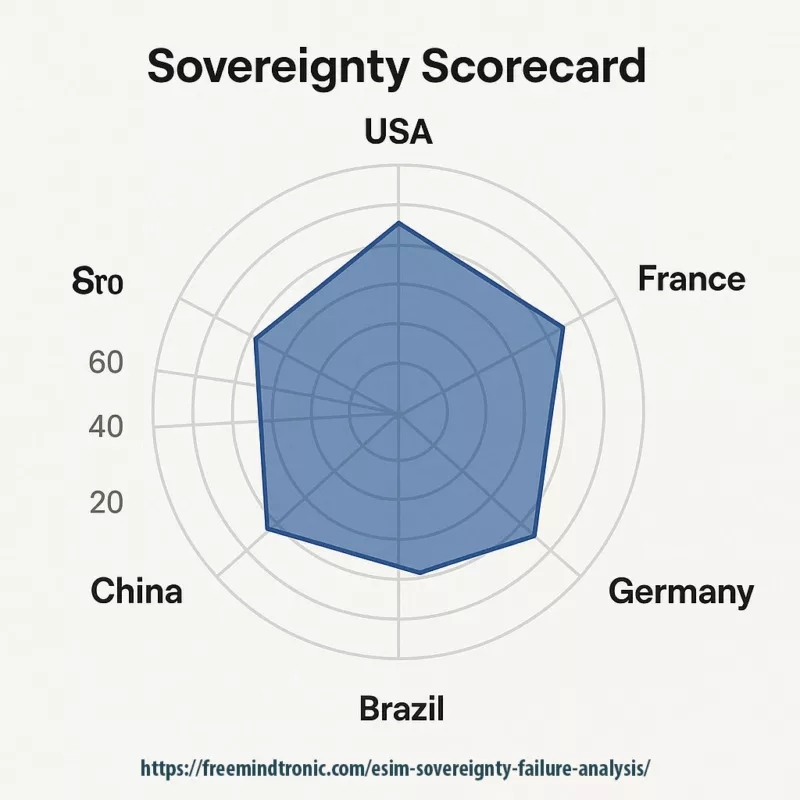
What is 𝒮ro?
𝒮ro (Sovereignty Runtime Exposure) is an aggregated vulnerability score that quantifies the sovereign risk associated with the runtime execution of eSIM profiles. It serves as a strategic indicator for assessing how exposed a mobile identity infrastructure is to external control, compromise, or unverifiable behavior during live operation.
This scorecard framework is intended not as a final metric but as a dynamic reference model to guide national policy adaptation and resilience strategy against systemic eSIM threats.
𝒮ro Exposure Levels
| 𝒮ro Score | Sovereign Exposure Level | Description |
|---|---|---|
| 20 | Low Exposure | Presence of sovereign runtime defense mechanisms (e.g., autonomous NFC HSM, internally validated countermeasures) |
| 40 | Moderate Exposure | Partial reliance on third-party infrastructures or absence of internal runtime validation |
| 60 | High Exposure | Certified critical infrastructures (e.g., Java Card, SM-DP+/DS) vulnerable at runtime without effective sovereign control |
| 80+ | Critical Exposure (Extrapolated) | Total dependency on certification chain, no sovereign runtime control, opaque execution environment |
Without multi-layer sovereign oversight — from runtime to regulation — national eSIM infrastructures remain structurally exposed. The Scorecard provides a benchmark to close that gap.
Zero Trust Recovery from eSIM Sovereignty Failure
In response to repeated instances of eSIM sovereignty failure, zero trust becomes not just strategic but mandatory.
The collapse of runtime trust in certified eUICC platforms mandates a paradigm shift: from perimeter-based assurance to a zero-trust model tailored for eSIM governance. This model reframes the eSIM not as a static, implicitly trusted object but as a dynamic actor that must continually prove its integrity, provenance, and compliance.
A zero-trust eSIM architecture encompasses:
- Hardware Root of Trust (HRoT) — Use of sovereign HSMs external to the eUICC to store and process critical credentials, mitigating in-situ compromise risks.
- Out-of-Band Attestation — Continuous verification of eSIM state via independent channels, ensuring profile consistency and integrity without relying on vendor telemetry.
- Dynamic Trust Brokering — Integration of policy engines capable of adjusting access privileges based on runtime posture, geopolitical context, or threat intelligence updates.
- Secure Update Chains — Implementation of field-verifiable patching protocols with sovereign signature verification, bypassing dependency on vendor-initiated OTA flows.
The design principle is clear: trust must be earned continuously, not granted via certification artifacts. In practical terms, this means MNOs and state operators must enforce mutual attestation with all eSIM-capable devices, using field-grade diagnostic tools and telemetry relays.
This approach aligns with emerging cybersecurity doctrines, including the European Union’s zero-trust strategic direction within the EU Cybersecurity Strategy, and anticipated provisions under the Cyber Resilience Act.
A post-certification eSIM strategy demands more than patches — it requires an operational posture of distrust, verification, and continuous control. Zero trust is no longer optional.
Weak Signals Identified
Long before the Kigen exploit became public, several early indicators hinted at systemic fragilities in the certified eSIM ecosystem. These weak signals, often dismissed as implementation quirks or vendor-specific limitations, now reveal themselves as precursors to broader architectural vulnerabilities.
- Patch Lag Across Certified Platforms — Multiple vendors delayed integration of Java Card security updates, despite public CVEs and independent advisories.
- Telemetry Blackouts During Remote Provisioning — Field reports noted unexplained telemetry silences during SM-DP+ operations, indicative of instruction hijacking or glitch attacks.
- Inconsistencies in Certification Scope — Certification reports from GSMA TS.48 evaluations showed variable test coverage across applet behaviors and runtime exceptions.
- Proprietary Obfuscation of eUICC Source Chains — OEMs increasingly deployed closed, undocumented applet stacks, frustrating independent auditing and validation.
These signals, while subtle, constituted a strategic early warning. Their disregard stems not from lack of data, but from an institutional overreliance on certification status as a proxy for ongoing security assurance.
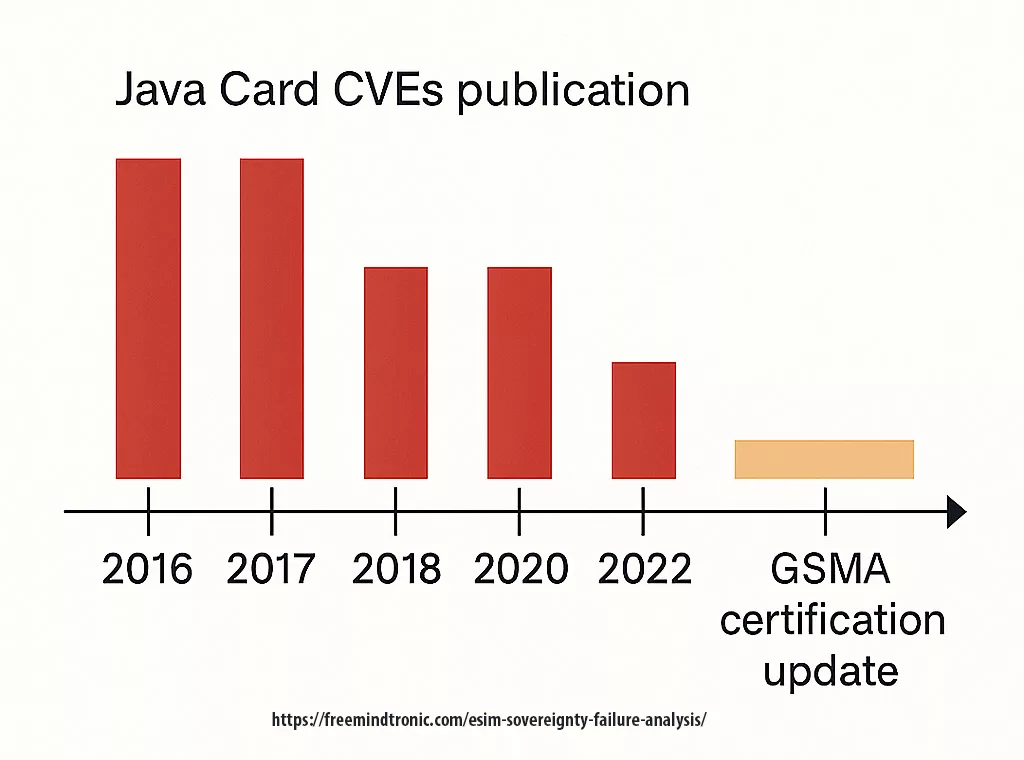
Strategic breaches rarely erupt without warning — they ferment in ignored anomalies, silent faults, and governance blind spots. Sovereign vigilance starts with decoding the weak signals.
eSIM on External Storage?
A rising architectural trend in constrained embedded systems involves relocating eSIM data onto external memory modules — typically SPI NOR flash or embedded MultiMediaCard (eMMC). While appealing for hardware flexibility and cost reduction, this design undermines foundational security assumptions of the GSMA eUICC standard.
Externalizing the Secure Element (SE) storage exposes profile data and cryptographic keys to direct bus probing, voltage fault injection, and cold boot extraction. Even when encryption-at-rest is implemented, the integrity of runtime protection collapses once a malicious actor achieves physical access or exploits firmware vulnerabilities to redirect memory calls.
In several observed deployments, OEMs bypassed the GSMA’s certified secure loading protocols by using bootloader-level loading of profiles into external memory-mapped regions — a deviation incompatible with the runtime isolation requirements of eSIM standards.
Authorities such as the [European Union Agency for Cybersecurity (ENISA)](https://www.enisa.europa.eu) and [NIST](https://csrc.nist.gov/) have consistently emphasized that cryptographic material must remain bound to tamper-resistant hardware environments. External memory eSIMs contradict this principle, creating sovereign risk through dilution of trust anchors.
Offloading eSIM data to external storage breaks the hardware root-of-trust. Sovereign-grade identity management requires tamper-resistant, self-contained execution environments.
Misconceptions & Design Constraints
The certified eSIM ecosystem suffers from persistent misconceptions rooted in legacy SIM assumptions and abstracted design abstractions. One key fallacy is the belief that certification implies secure-by-design implementation across all operational contexts. In reality, GSMA certification primarily validates compliance with protocol-level behavior — not resilience to fault injection, physical attacks, or post-certification firmware drift.
Another widespread misconception is that Java Card security models inherently guarantee isolation and non-interference between applets. In practice, vulnerabilities in object reference handling, heap reuse patterns, and predictable class loading sequences allow one applet to indirectly infer or affect the state of another, especially when runtime monitoring is absent.
OEMs and MNOs often operate under the constraint of legacy infrastructure integration — prioritizing backward compatibility with SIM toolkits or OTA provisioning platforms over runtime verifiability. This constraint often leads to the embedding of insecure debug services, deprecated cipher suites, or relaxed access control mechanisms under the guise of “certified flexibility.”
The strategic consequence is a fragmented threat landscape where the weakest implementation in the supply chain compromises the entire trust anchor. Without sovereign control over lifecycle enforcement, firmware lockdown, and remote attestation, certification becomes a checkbox — not a defense.
Certification is not synonymous with sovereignty. Design shortcuts and legacy constraints perpetuate attack surfaces that sovereign architectures must isolate and harden by default.
Countermeasures Against Certified eSIM Sovereignty Threats
These measures directly mitigate the systemic blind spots responsible for the certified eSIM sovereignty failure.
In light of systemic runtime vulnerabilities and certification blind spots, sovereign cybersecurity architectures must prioritize verifiability, hardware isolation, and post-deployment attestation. Traditional eSIM infrastructures relying solely on GSMA certification cannot guarantee runtime integrity against state-level adversaries or advanced persistent threats (APTs).
The first line of defense is the elimination of in-field runtime secrets through hardware-based enclaves such as NFC HSMs. These devices externalize cryptographic operations and enforce out-of-band identity validation, mitigating the risk of key exposure during applet execution.
Secondly, sovereign architectures must incorporate real-time behavioral monitoring. They should leverage secure telemetry and tamper-evident logs to detect abnormal access patterns and control flow deviations.
In parallel, remote attestation plays a critical role. Ideally anchored in sovereign hardware roots of trust (RoT), it allows MNOs and regulators to verify that deployed eUICC modules remain unaltered since certification.
This process includes checking firmware hashes, assessing secure element states, and confirming the continuity of audit trails. Such mechanisms reinforce operational trust and transparency in high-assurance environments.
Furthermore, regulatory mandates must evolve to require sovereign oversight in the lifecycle management of certified secure elements. This includes revocation procedures, trusted firmware distribution channels, and cryptographic agility standards that support post-quantum migration paths.
Sovereign resilience requires architectures that do not merely comply with certification but enforce runtime integrity, field visibility, and cryptographic independence from third-party vendors.
Rethinking eSIM Governance with Sovereign NFC HSM
The structural failure exposed by the Kigen breach compels a foundational shift in how nations approach eSIM governance. Rather than perpetuating reliance on external certification authorities and embedded runtime platforms, sovereign models must prioritize minimal attack surfaces, externalized key management, and verifiable operational integrity.
NFC-based Hardware Security Modules (HSMs) represent a pivotal architectural response. By isolating secrets from the runtime environment and enabling offline transaction validation, these modules offer resilience against both remote and local attack vectors. Moreover, their user-mediated design supports privacy-preserving identity activation and fine-grained access control—without requiring permanent connectivity to central servers or vendor-controlled key managers.
This paradigm aligns with core sovereignty principles. It ensures jurisdictional control over digital identities, enables revocable credentials without foreign dependency, and supports auditable hardware roots of trust.
Moreover, it directly responds to growing regulatory pressures. Frameworks such as the European Cyber Resilience Act (CRA) and the NIS2 Directive increasingly demand demonstrable security and traceability for critical digital infrastructure.
Sovereign NFC HSM architectures offer a forward-compatible path for eSIM governance—enabling state-controlled identity assurance without runtime exposure or opaque vendor dependencies.
Use Case: From EviCall to EviSIM – Resilience via DataShielder NFC HSM Defense
Freemindtronic’s sovereign cybersecurity suite delivers a tangible countermeasure to runtime eSIM compromise. This is achieved through its NFC HSM-enabled technologies, which underpin platforms like EviCall and EviSIM. Both solutions integrate seamlessly with DataShielder to establish fully air-gapped, hardware-bound identity containers. These containers operate independently from traditional eUICC execution environments.
Externalization through NFC HSM: a runtime safeguard
Thanks to EviSIM, mobile identities and eSIM profiles are stored externally in a contactless NFC HSM. Once activated, the device executes cryptographic operations—such as authentication, signature generation, or key release—in real time. Crucially, these operations occur without exposing secrets to the host device’s operating system or runtime environment. As a result, even if the OS stack or baseband processor is compromised, the credentials remain shielded, immutable, and non-extractable. These safeguards directly counteract the runtime threats that caused the certified eSIM sovereignty failure.
Sovereign control via DataShielder architecture
Beyond this core isolation, the DataShielder framework introduces additional layers of control. These include dynamic self-destruct policies, offline multi-factor unlocking, and sovereign key attestation mechanisms. This architecture fundamentally diverges from remote provisioning models dominated by SM-DP+ infrastructures. Instead, EviSIM enables field-level validation and revocation under direct sovereign supervision.
En déplaçant l’assurance de l’identité mobile loin des ancrages de confiance contrôlés par l’étranger, EviSIM rétablit l’autonomie juridictionnelle. Il s’agit d’un modèle souverain pour sécuriser les identités numériques dans un écosystème de plus en plus compromis.
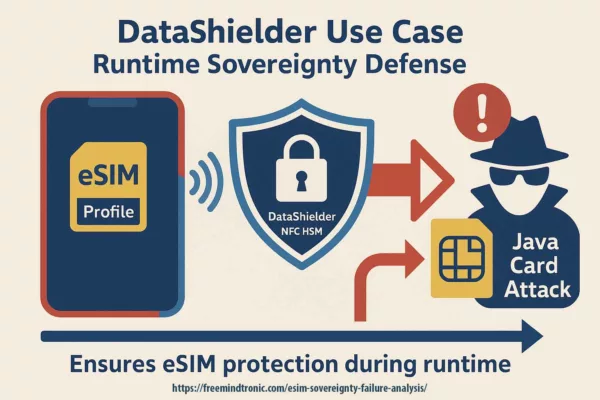
EviSIM powered by NFC HSM and DataShielder demonstrates a sovereign eSIM implementation: isolated from runtime compromise, resilient to side-channel attacks, and verifiably controlled under national jurisdiction.
Infographic: Anatomy of SM-DP+/SM-DS Flow and Attack Vectors
To visualize the complexity and vulnerabilities in eSIM provisioning, this infographic maps the full lifecycle of an eSIM profile. It spans the SM-DP+ (Subscription Manager Data Preparation) and SM-DS (Discovery Service) systems, as defined by the GSMA’s Remote SIM Provisioning standard.
Key stages include:
- Initial bootstrap and device registration
- Profile download request and mutual authentication
- Encrypted delivery of the eSIM profile
- Activation and binding to the device’s secure element
Overlaying this flow are potential attack vectors such as:
- Side-channel leakage during profile decryption on the device
- Relay attacks exploiting delays in SM-DP+/SM-DS communication
- Malicious MNO provisioning triggering compromised profiles
- Lack of post-delivery attestation, allowing silent substitution
Each step is annotated to highlight where certified trust anchors can be bypassed through runtime manipulation or credential diversion. This systemic exposure reveals why runtime isolation and sovereign credentialing are no longer optional but foundational to eSIM security governance.

This visual breakdown of eSIM provisioning reveals multiple runtime blind spots exploitable by adversaries. It underscores the strategic necessity of sovereign field attestation and off-host credential storage.
Beyond This Chronicle: Expanding the eSIM Sovereignty Failure Scope
This Chronicle focused on a critical instance of eSIM sovereignty failure, but additional vectors deserve sovereign scrutiny. Yet several strategic dimensions remain outside the scope of this investigation and call for sovereign attention:
Post-quantum readiness of eSIM infrastructures
Currently, most GSMA certification frameworks still rely on elliptic-curve cryptography. This reliance poses vulnerabilities in a future post-quantum context. Moreover, the lack of mandated migration timelines toward post-quantum algorithms reveals enduring gaps in long-term identity resilience.
Private 5G and critical infrastructure deployments
Furthermore, industrial 5G networks using eSIM-based credentials introduce distinct threat vectors. This is particularly evident in autonomous systems, smart energy grids, or battlefield IoT scenarios. Such environments require sovereign attestation pipelines—yet current standards fail to address these needs.
eSIM vulnerabilities in satellite and remote deployments
Additionally, remote provisioning via low-Earth orbit (LEO) satellites presents unique security challenges. Telemetry spoofing and delay injection attacks become feasible, enabling potential bypasses of existing integrity verification methods.
Non-GSMA provisioning implementations
Lastly, certain sovereign entities are experimenting with bespoke eSIM frameworks beyond GSMA control. While these alternatives enhance autonomy, they risk fragmenting the ecosystem in the absence of interoperable verification mechanisms.
Each of these aspects warrants focused analysis and technical experimentation. Only through such sovereign efforts can the next generation of digital identity infrastructure achieve true resilience and autonomy.
Beyond this case study, sovereign cybersecurity strategy must encompass satellite, post-quantum, industrial, and extra-GSMA eSIM use cases. Each of these contexts presents their own attack surfaces and governance blind spots.
In light of ongoing eSIM profile compromises by APT groups, the sovereign solution DataShielder NFC HSM Defense integrating the EviCall module encrypts all messaging channels (SMS, MMS, RCS) independently from the operator profile.Even if the eUICC is infiltrated or cloned, content access remains impossible without the embedded sovereign hardware HSM. Asymmetric runtime encryption is enforced directly within the enclave — fully outside GSMA certification and undetectable by compromised infrastructures.🔐 This solution is available off-catalogue through Fullsecure (Andorra) from Freemindtronic and AMG PRO (France), trusted sovereign deployment partners.



